







Last year, we experienced great success and set a high standard. We now must actively manage customer relationships and monitor industry trends to achieve new heights of innovation, excellence, and growth.

Let's elevate our standards, empower others, and reach a new level of performance in the Year of Elevation.


Elevating



Ansay & Associates is a best-in-class insurance advisor committed to helping our clients secure, protect and grow their version of the American Dream.
Ansay & Associates is committed to superior growth through our strategic initiatives and entrepreneurial spirit. We strive to inspire our employees to provide a first-rate customer experience for our clients by offering reliable solutions through innovative technologies.








“
Serve
customers with integrity, respect and a sincere desire to build lasting relationships that work.”


The Ansay Approach is relationship-driven and solutions-oriented and is driven by the individual needs and risk management for each customer, personal and/or business. The Ansay Approach is a proven, four-step, strategic process. The Ansay Way.
Identify and understand your exposures and needs. Develop strategies to address the needs and exposures identified. Implement tailored programs specifically to meet your needs. Monitor the programs and make proactive changes as needed.



Each year, Business Insurance ranks the 100 largest U.S insurance brokerage firms. Ansay & Associates is ranked 73rd, up 11 places since 2018

The Best and Brightest Companies to Work for competition identifies and honors organization that display a commitment to excellence in their human resource practices and employee enrichment
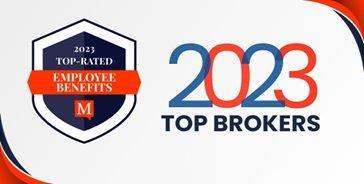

Ranked one of the top 15 Medium Size Businesses in Southeastern Wisconsin

Ansay & Associates is one of only 53 companies in the United States to receive this distinction

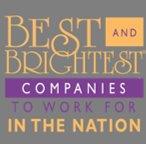


The Best and Brightest in Wellness celebrates those companies that are making their businesses flourish, the lives of their employees better and the community a healthier place to live.
The Best and Brightest Companies to Work for program is presented throughout the United States by the National Association.
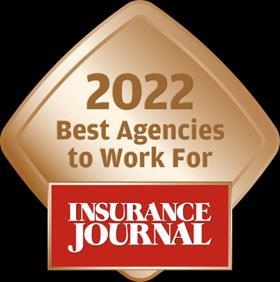




Anay & Associates is a recipient of the Acuity Insurance 2020 Top Gun Agent award.
Each year, Business Insurance ranks the 100 largest brokerage firms. Ansay & Associates is ranked 73rd, up 11 places from 2018

Ansay & Associates is a 2019 Premier Agency for Secura Insurance.
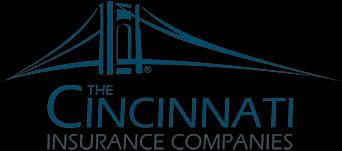
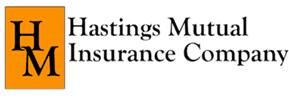
Ansay & Associates is a member of the Hastings Mutual 1885 Club.


Ansay & Associates is a member of the Hanover Insurance Group Presidents Club


Ansay & Associates is a member of the Integrity Insurance Leadership Circle.

Ansay & Associates is a leading Partner with EMC Insurance.
Ansay & Associates is a member of the Cincinnati Insurance Companies 2020 President's Club.

Ansay & Associates is a Silver Circle Agency with West Bend Mutual Insurance.

The Western National Circle of Excellence recognition is announced annually to spotlight an elite group of partners who have excelled based on performance and growth over the past six years.

Jerry Thompson Agency A.G.I.S. Insurance Center, Inc.
Doucette, Donegan & Russell (DDR) Insurance S ervices, Inc.
Bautch Insurance Agency Insurance Specialists LLC Schultz & Schultz Insurance Agency
Buxton O’Neil Insurance Agency

13% Employee Benefits Group & Individual

33% Personal Lines


54% Commercial Lines


Eau Claire
• Augusta
• Alma
• Bloomer
• Chetek
• Chippewa Falls
• Durand
• Eau Claire
• Menomonie
• New Richmond
• Hudson
Port Washington
•Burlington
•Cedarburg
•Port Washington (HQ)
•Sheboygan
•Wind Lake
Green Bay
•Green Bay
•Manitowoc
Wausau
•Stevens Point Appleton
•Appleton
•Oshkosh
Madison
•Brookfield
•Jefferson
•Madison Michigan
•Ironwood Minnesota
•Edina
•Rochester

We bring you leading knowledge and integrated personal lines solutions as a coordinated single source, ensuring you access to the products and resources that serve your needs best.


























Commercial Lines






Employee Benefits


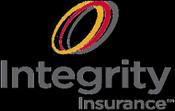


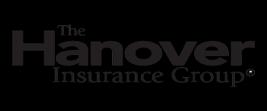















Personal Lines


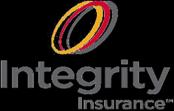






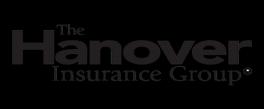



Angela Sikowski Chief Financial Officer

Rachel Ansay Vice President of Operations
Mike Ansay Chief Executive Officer & Strategic Sales Advisor

Erik Mikkelson Chief Development Officer

Tim Rusch Sr. Executive Vice President Mergers & Acquisitions

Nikki Kiss Chief of Staff & Talent

Heidi Nienow Executive Vice President Personal Lines

Alan Neva Executive Vice President Commercial Lines & Employee Benefits


Greg Kirsch Director of IT

Michael Eickhoff Network & Security Administrator in IT

Heather Jensen HRBP & Benefits Specialist Engagement

Hannah Scherer Meetings & Events

Robyn Tiedt Regional HR Manager

Melissa Dettmering Director of Payroll
Issac Engelkes IT Helpdesk Specialist

Stacy Carter-Davis HR Assistant
Planner Accounting

Abbie Gums Financial Analyst


Alan Neva
Executive Vice President
Commercial Lines & Employee Benefits

Adam Peck Director of Sales
Commercial Lines


Kash Motlani Director of Sales
Select Commercial Lines
Josh Pantel Associate Director of Sales
Commercial Lines

Heidi Nienow
Executive Vice President
Personal Lines
Eau Claire Region

Kash Motlani Director of Sales
Personal Lines


Travis Kaeding Associate Director of Sales
Commercial Lines
Dawn DeGeorge Associate Director of Sales
Personal Lines


Rachel Ansay Vice President of Operations

Kelsie Hoehne Director of Operations
Personal Lines

Sandy Bowman Operations Manager Commercial Lines


Kari Hagenow Operations Manager
Personal Lines Central

Michael Disher II Operations Manager Commercial Lines

Jodi Tousey Operations Manager Commercial Lines
Stacey Robertson Director of Operations Employee Benefits

Kristie Leiviska Operations Manager Personal Lines South

Annie Hooper
Operations Manager
Personal Lines North

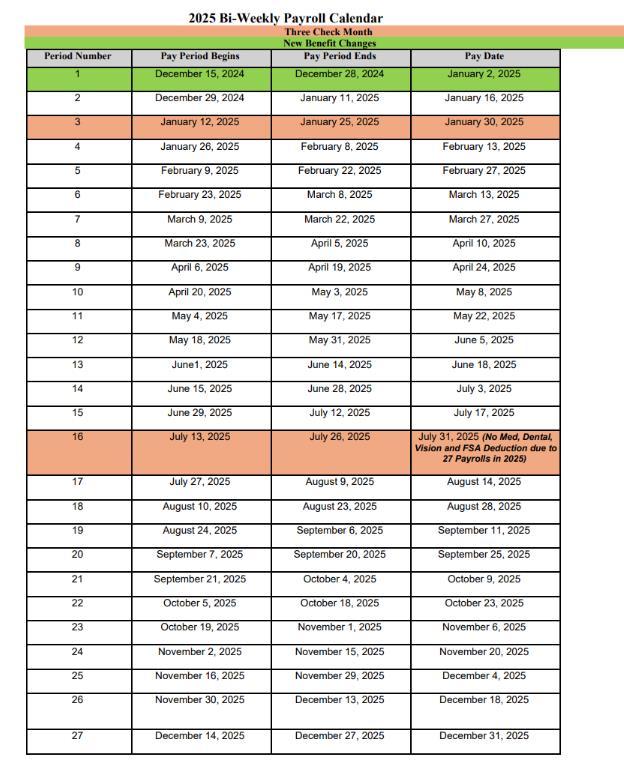
Employees are paid every two weeks on Thursdays. Direct Deposit updates are requested electronically by the employees in UKG. This is an example of our Pay Date Schedule, updated yearly schedule can be found on the Company Intranet

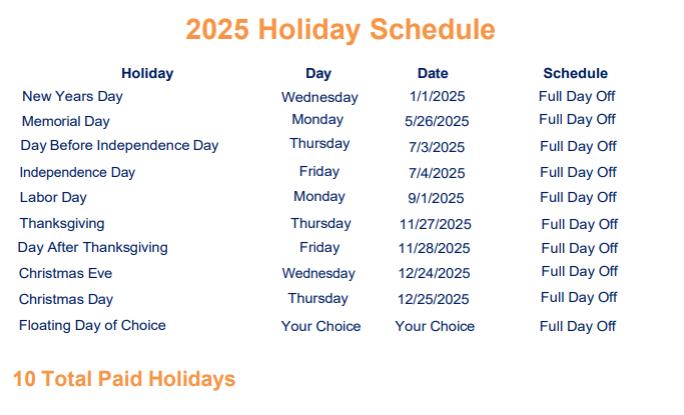


1. To obtain your insurance license, we will reimburse 100% of the course cost and licensing fee (2-time). Your supervisor must approve your attendance to the insurance licensing course and exam.
2. To obtain the renewal of your insurance license, we will reimburse 100% of the license cost.
3. It is expected that you will take at least one course per year from the designated list of approved courses (for your respective department below) in order to obtain a relevant designation, maintain your designation or obtain continuing education credits:
• Personal Lines CISR, CIC
• Employee Benefits GBA, CEBS, Self-Funded (Securities License designation excluded)
• Commercial Lines CISR, CIC, CRM, ARM, CPCU or Ruble Seminars
Note: other courses/classes may be eligible but must be approved (in advance of taking the course) by your supervisor. For example, courses/classes taken for higher education but not required for your position (associates/bachelor’s coursework), may also be approved for reimbursement (within the $750) by your supervisor but will be added to your W-2 as taxable income.
We will reimburse 100% of course fees (excluding travel costs) for supervisor approved courses/classes up to $750 upon passing the examination (if required) and providing proof of attendance (if no examination is required). We will not approve courses/class fees if:
• The course/class has not been approved in advance by your supervisor
• A passing grade was not obtained (if examination required) and a proof of attendance certificate was not obtained (if no examination was required)
Note, any deviation from this policy must be approved by your supervisor. Also, this education benefit is non-cumulative. Accordingly, this education benefit must be used by December 31st of each year, or it is lost.



Program Highlights
• Eligibility – full-time, 30 days, 1st of the month following
• Position/development relevant course
• Accredited university
• Earn a “B” or better grade
• Receive EVP and Corporate HR approval
• Annual maximum per employee - $5,250
• Reimbursement after passing grade submitted

The insurance business requires utmost confidentiality. In our most casual transactions, we are dealing with the private and personal matters of our customers' lives.
• Information must be used in the most discrete manner.
• Absolutely nothing heard or seen that pertains to our business, customers' and employees' accounts, or transactions with the Agency may be divulged except within the Agency, and then only for business purposes.
• Release of information about our customers and/or their transactions are wrong and may involve legal action
• Employees must not review any information regarding a customer or other employee accounts unless it is directly related to their job.
• Employees indiscriminately reviewing or releasing customer or confidential business information will be dismissed from employment.

All Ansay employees receive 8 hours each quarter to volunteer at a charity of their choice. To request time off to volunteer:
• Request time off in our time keeping system, UKG, and use the Volunteer code. In the comments area, please leave a detailed description of the volunteer request. Supervisors will ensure the request complies with the handbook details and approve.
• Humane Society
• School Programs or Field Trips
• Food Pantry
• Earth Day Cleanup
• Fundraisers for non-profits
• Mentor for a school program




Monthly Meetings by Region
Summer Picnic by Region
Christmas Party by Region
Wellness Events
Annual Culture Tour: The Leadership Team will travel to several locations in December in each region
Corporate Annual Sales Training Event
Corporate Annual Customer Service Event
New employees can log in using their Ansay email and Ansay2025 as the password.
There is a $50 credit on the site to purchase Ansay gear!
Each month, Ansay Culture Connection will provide various topics and insights regarding initiatives, programs, and developments
Look for subject matter experts to share their area(s) of focus and provide status updates


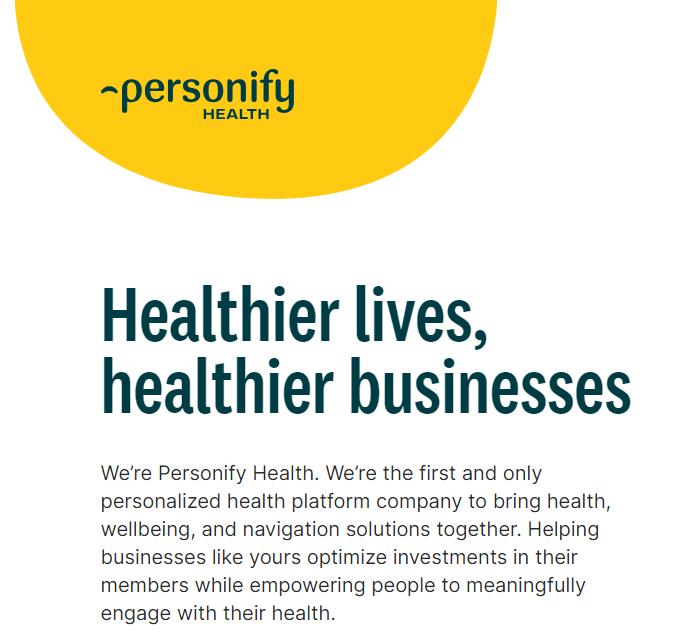
Employees can take advantage of Ansay’s robust Wellness Resources
• Enroll in our Wellness portal to start earning points
• Become active in your region’s group that promotes wellness
• Use fitness equipment available at certain locations
• Personify Health Enrollment

✓ $2,000 to any employee who refers a full-time candidate
✓ $1,000 to any employee who refers a part-time candidate
✓ Excludes Interns (unless hired into a regular position)
✓ Candidate must remain employed by the Agency for longer than six months
✓ Bonus will be added to the employee’s paycheck after the last day of the referral’s six month
✓ Bonus is treated as taxable income on their W-2.
✓ Ask the employee to list you as their referral on their online application to receive the referral!



Heather Jensen
Human Resources BP and Benefits Specialist
• More than 6 years of experience in Personal Lines and now Human Resources & Benefits
• With Ansay since 2018
• More than 20 years of experience in Accounting
• With Ansay since 2017
Our Roles:
• UKG assistance, training, questions
• Overview of all Benefits, 401(k) & Enrollment guidance
• Communication through Ansay Culture Connection
• Local and Agency support
• Development opportunities through Ansay University
• Payroll, W-4, Banking support through UKG

A LOT of Information Has Flowed Your Way Today – Let’s Manage Together Through Next Steps!
• Review Ansay Information
• Return Signed Ansay Offer Letter & Employment Agreement (R-Sign)
• Watch Work E-Mail For UKG Onboarding Link to Complete New Hire Documents
• Watch Work E-Mail For In Check Link to Complete Your Background Screen
• Connect with the Ansay Team during your orientation online meeting
• Reach Out to Heather Jensen/Nikki Kiss with Any Questions

Ansay Important Employee Web Locations
• Direct Supervisor for Position Related – Current Structure – See Org Chart
o HR Related – Heather Jensen
• Ansay Intranet - https://ansayassociates.sharepoint.com/sites/Home
• Ultimate Software or UKG - https://ew24.ultipro.com/login.aspx
o First Time Log In = Username - Work E-mail & Password - Date of Birth (MMDDYYYY)
Employee System


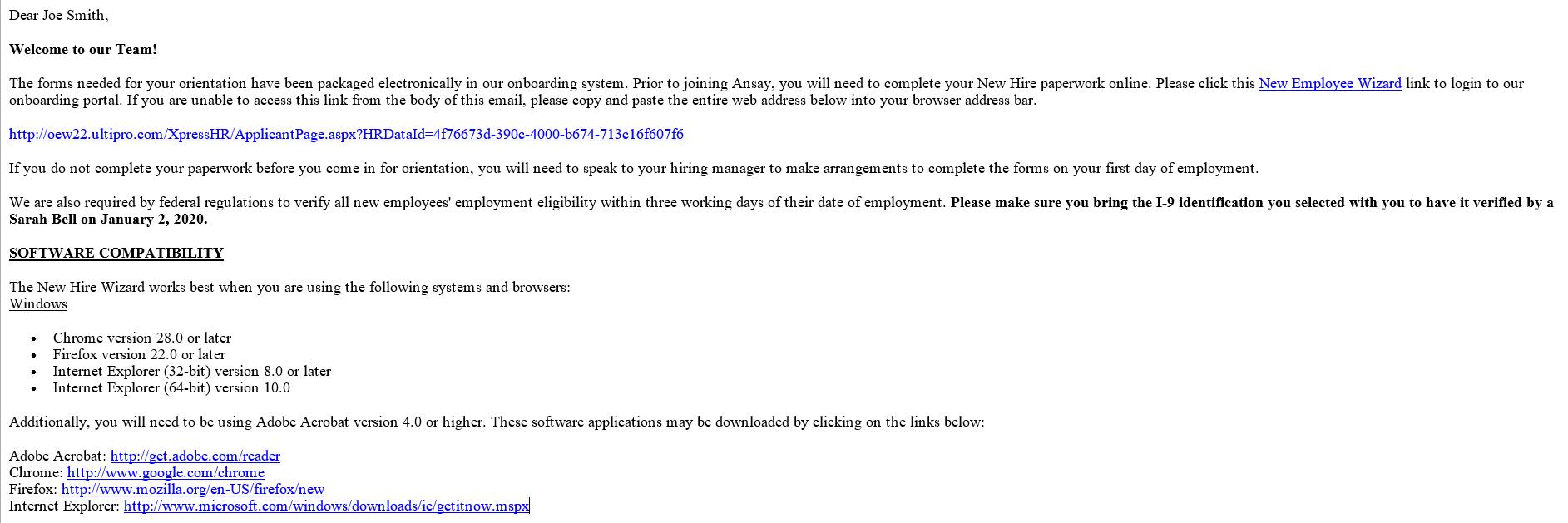

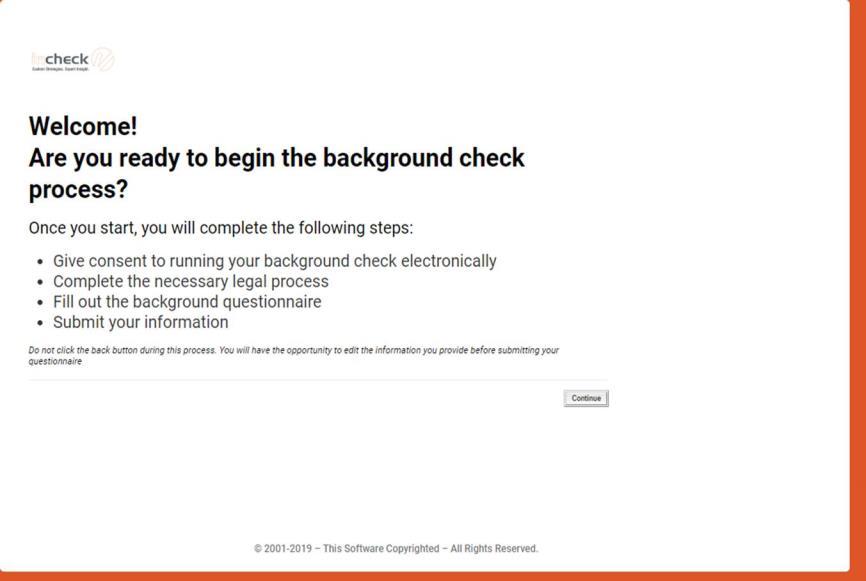


▪ Review Benefits Overview – Make Elections In UKG – Effective July 31, 2025– Will Receive Benefit Cards Electronically 2 Days After Enrolled
▪ 401(k) Enrollment – Log Into Principal Website for Deferral Options & Enter Beneficiary Information
▪ Reach out to Heather Jensen/Nikki Kiss with Questions
Due –End of Day Today, July 31, 2025

▪ Officially An Ansay Employee! August 1, 2025
▪ August 1, 2025– Hourly Employees Log Into UKG to Punch In/Out
▪ First Payroll for Dates: (7/27/2025-8/9/2025)
▪ First Ansay Paycheck: 8/14/2025
▪ Bi-Weekly Payroll (See Payroll Schedule In Binder)
▪ All Benefits In Place – Friday, August 1, 2025














Day 1: Contracts & Onboarding
Financial contracts
HR onboarding
Our values and mission
Integration overview
First 30 days: Announcemen ts & Discovery
Announcement of partnership
Discovery for operations, sales, culture, systems, carriers, accounts
MidStage: Resources & Culture
Co-branding and communication
Support for operations and sales
Resources & culture
Management of contracts, licenses and bookkeeping
IT integrations
Conversion: Integration of Systems & Processes
Our agency management system
Training in workflow, carriers, value adds, sales processes
Roles, reporting & career development
Earnout
Steady State: Integratio n is complete
Full brand transition
Integration with Ansay is complete

CL Sr. Account Manager
Melissa Hobart
Chief Development Officer
Erik Mikkelson
Branch Manager and Director of Sales
Jeff Giles
Deborah Pratt CL Sales Account Executive
Darienne Wesselman Personal Lines Team Leader-
Sherry Freeman
Account Manager
Brenda Schueler



Employees are paid every two weeks on Thursdays. Direct Deposit updates are requested electronically by the employees in UKG. This is an example of our Pay Date Schedule, updated yearly schedule can be found on the Company Intranet




Updated 7/31/2025
This page is intentionally left blank
Welcome, Thank you for joining Ansay & Associates, LLC! We hope you agree you have a great contribution to make to the insurance industry by way of Ansay & Associates LLC, and find your employment here a rewarding experience
We look forward to the opportunity of working together to create a more successful Agency We also want you to feel your employment with Ansay & Associates, LLC, will be mutually beneficial and gratifying In this Employee Handbook, Ansay & Associates, LLC will also be referred to as the “Agency. ”
You have joined an organization that has established an outstanding reputation for quality. Credit for this goes to everyone in the organization. We hope you too, will find satisfaction and take pride in your work here. As a member of the Ansay & Associates, LLC team, you will be expected to contribute your talents and energies to further improve the environment and quality of the Agency.
A.N. Ansay Agency Inc was founded in 1946 by Adolph N. Ansay. The Agency enjoyed early success due to Mr. Ansay's one central goal: Serve customers with integrity, respect and a sincere desire to build lasting relationships.
Together, we can continue down the path of our vision to double every seven years, develop a phenomenal high-performance team and become best-in-class through our well- packaged and differentiated Agency As we continue to grow, we rely everyday on our most valuable resource, our people As we continue to raise the bar on our standards and better utilize our unique abilities, we can continue to make the industry’s weaknesses our strengths and secure our existence now and in the future
We hope you will find this handbook helpful and retain it for reference purposes You have our best wishes for success If you have any questions, or something is not clear, please ask your Supervisor or Human Resources
Ansay & Associates is a best-in-class insurance advisor committed to helping our clients secure, protect and grow their version of the American Dream.
Ansay & Associates is committed to superior growth through our strategic initiatives and entrepreneurial spirit. We strive to inspire our employees to provide a first-rate customer experience for our clients by offering reliable solutions through innovative technologies.
Ansay & Associates, LLC believes in creating a harmonious working relationship between all employees. Everyone shares a common commitment to the tradition of building lasting relationships and bringing every customer a level of service that exceeds expectations - It’s the Ansay Way!
In pursuit of this goal, Ansay & Associates, LLC employees are asked to adhere to the Agency’s core values:
We appreciate that all people have value by treating each other with high regard and consideration. We are loyal and compassionate in our dealings with others.
We conduct ourselves in a professional and ethical manner at all times. Honesty and sincerity are the hallmarks of the way we manage our business.
The customer is our first priority. We listen to our clients and commit ourselves to consistently meeting or exceeding their expectations with forethought, flexibility and a solution-focused “can do” attitude.
We have an energetic and tireless commitment to pursue what is best for our clients, our Agency and our carriers. We provide a fun and supportive environment for our staff. One that provides inspired meaningful and challenging work.
An attitude of constant and never-ending improvement, discipline and oomph.
We seek excellence in all we do through constant improvement of our operations, educational achievement and by pursuing opportunities to further our capabilities. This allows us to build confidence with our carriers and clients.
Ansay & Associates, LLC is an equal employment opportunity employer. Employment decisions are based on merit and business needs, and not on race, color, citizenship status, national origin, ancestry, genetic information, gender identification, sexual orientation, age, religion, creed, physical or mental disability, marital status, veteran status, political affiliation, or any other factor protected by law. Ansay & Associates, LLC. complies with the law regarding reasonable accommodation for handicapped and disabled employees. Ansay & Associates, LLC’s CEO has issued the following policy stating the Agency’s views on this matter.
It is the policy of Ansay & Associates, LLC to comply with all the relevant and applicable provisions of the Americans with Disabilities Act (ADA) as amended. Ansay & Associates, LLC. will not discriminate against any qualified employee or job applicant with respect to any terms, privileges, or conditions of employment because of a person’s physical or mental disability. Ansay & Associates, LLC. will also make reasonable accommodations whenever necessary for all employees or applicants with disabilities, provided the individual is otherwise qualified to safely perform the duties and assignments connected with the job and provided any accommodations made do not impose an undue hardship on the Agency.
Equal employment opportunity notices are posted near employee gathering places as required by law. These notices summarize the rights of employees to equal opportunity in employment and list the names and addresses of the various government agencies that may be contacted in the event any person believes he or she has been subject to unlawful treatment in violation of any of the various federal or state employment laws.
Management is primarily responsible for seeing that Ansay & Associates, LLC’s equal employment opportunity policies are implemented, but all members of the staff share in the responsibility for assuring by their personal actions the policies are effective and apply uniformly to everyone.
Any employee, including managers, involved in discriminatory practices will be subject to discipline, up to and including termination.
The policies and management expectations outlined in this Employee Handbook are not a substitute for the good judgment and honesty that mature, conscientious people have as a part of their basic make-up.
As an employee of Ansay & Associates LLC, your primary responsibility to the Agency is honesty and integrity in all of your dealings. You are the Agency as you represent it every day!
Employees must always conduct themselves in a manner which reflects the best interest of the Agency, based upon accepted business practices, common sense, and good citizenship.
As residents of the US, we have the right to free speech and as employees of Ansay & Associates, LLC., we have a responsibility that comes with that right. Our responsibility includes active awareness of where we are speaking, how our speech may affect others, and a commitment to speak in a way that is respectful of ourselves and others.
Potentially contentious topics (such as politics, race, gender, parenting, etc.) are absolutely okay to be discussed with the condition that those involved in the conversation are always being mindful of our responsibility and with the goal to learn and understand, not convince or argue. BUSINESS ETHICS
This Employee Handbook does not establish a contract (express of implied) between Ansay & Associates, LLC and any employee regarding terms and conditions of employment.
This Employee Handbook does not in any way alter the employment at-will relationship between Ansay & Associates, LLC and its employees. Ansay & Associates, LLC and each employee have the right to terminate the employment relationship at any time, with or without cause or notice.
You should be aware that no supervisor, manager, or representative of Ansay & Associates, LLC, other than the Agency’s CEO, has the authority to enter into any agreement with any individual for employment for any specified period of time or to make any promises or commitments contrary to any policy or guideline established in this employee handbook.
The insurance business by its very nature requires the utmost of confidentiality. In our most casual transactions, we are dealing with the private and personal matters of our customers' lives. All of this information must be used in the conduct of Agency business and then only in the most discrete manner. Absolutely nothing heard or seen in the Agency that pertains to our business, customers' and employees' accounts or transactions with the Agency may be divulged except within the Agency, and then only for business purposes.
Thoughtless or careless actions leading to the release of information about our customers and/or their transactions are not only wrong ethically, but may involve the employee and the Agency legally. Employees must not review any information regarding customer or other employee accounts unless it is directly related to their job. Employees indiscriminately reviewing or releasing customer or confidential business information will be dismissed from employment.
The purpose of this policy is to provide guidance on the appropriate and acceptable use of Ansay & Associates, LLC’s electronic and communication systems.
You may be called upon to handle all kinds of valuable information in the course of each business day. You must be on the alert to assure the safety of everything entrusted to your care.
Ansay & Associates, LLC expends considerable time, effort and expense to establish, maintain and operate e-mail, computer, and Internet systems ("these systems" or collectively the "System"). These systems are all considered the Agency’s property. It is Ansay & Associates, LLC’s policy that the System be used principally and solely for the benefit of the Agency and to advance its business interests and not for personal or other uses.
General information about the Inter/Intranet and E-mail system:
A. Difficulty in Deleting Messages.
Messages are easy to proliferate through the E-mail system and over the Internet, but extremely difficult to track down and delete. The deletion of one stored copy of an e-mail message will generally not be effective in deleting other stored copies of that same message. You should always bear in mind that the possibility that several copies of messages may be stored in electronic or hardcopy format at various physical locations, and it is difficult, if not impossible for any one individual to find or delete all outstanding copies.
In addition, this reality is compounded when messages are sent over the Internet to third parties who are not under the control of the Agency, or through insecure channels where the messages may be intercepted by hackers. Also, be aware that when you visit another Web site, your identity and that of the Agency's Web site can be automatically tracked by the host Web site.
Because of the case of distributing information through the System, utmost caution should be used in determining whether to send messages containing confidential information. Generally, you should only send confidential information to specific individuals having a "need to know" such information. Do not send any confidential information to outside parties who are not authorized to receive the information, and do not send any confidential information to outside parties without first confirming that they are bound by written confidentiality restrictions. You should generally avoid sending confidential messages to distribution lists and, when such lists are used, be careful to identify each recipient on the list individually before sending the message. Messages containing confidential information generally should not be sent through the Internet without first encrypting the message, since the Internet is not a secure channel of communication.
Inbound communications received by you via the Internet, and from third party systems, impose certain risks. Due to the danger of computer virus transmission, downloading shareware programs from the Internet or third party systems is generally prohibited. Even for general business correspondence, it is important to check inbound messages for viruses or other harmful code. The Information Technology Department can supply you with anti-virus software for such purposes. In addition, third parties sending you messages should be notified of this policy, as well as notified that such messages may be accessed and disclosed to outsiders under certain circumstances. Messages sent to or received from third parties will be treated in the same manner as any other messages on the System.
Employee use of the System is strictly limited for the Agency’s business purposes only. However, Ansay & Associates, LLC recognizes that on the rare occasion, an employee may need to use the System for a personal reason. Such personal use is an exception and not the rule. Employees who abuse this exception may be subject to discipline, up to and including termination.
Employees should note, however, that personal messages will be treated like any other messages on the System. This means that messages of a highly personal nature, or those that would cause embarrassment or harm if they were accessed by the Agency or disclosed to other employees or outsiders should not be transmitted or received. In addition, permission for rare and limited incidental personal use does not authorize any use of the System for prohibited uses (see below) or any use which interferes with the normal conduct of the Agency's business and/or the operation of the System.
▪ Individuals using Ansay & Associates, LLC's electronic resources are responsible to maintain security of information stored on each system.
▪ Staff may use only electronic resources for which access is approved.
▪ Confidentiality of systems' accounts, passwords, and personal identification numbers (PINs) and other types of authorization assigned to individual users must be maintained, protected, and not inappropriately shared.
▪ Individuals need to be aware of computer viruses and other destructive programs, and take steps to prevent damage to Ansay & Associates, LLC equipment and systems.
▪ Ansay & Associates, LLC's systems should only be used for Agency business. However, incidental personal use may be appropriate when prior supervisor approval has been obtained or in accordance with departmental guidelines.
▪ Downloading of Internet software is prohibited when resulting in copyright abuse or excessive use of bandwidth.
▪ Each individual is responsible for knowing his/her department's expectations for use of the Agency's System.
▪ Staff may not conduct non-Ansay & Associates, LLC related business or other activities via Ansay & Associates, LLC’s System and equipment.
▪ Supervisors are responsible for insuring that individuals are assigned the appropriate level of security access to systems.
▪ Upon transfer or termination of employment, supervisors should immediately initiate request and follow-up to insure security access has been deleted.
▪ Supervisors must define and communicate departmental expectations on personal use of equipment and systems.
Inappropriate use includes, but is not limited to;
▪ deliberate propagation of any virus, etc., or
▪ intentional disabling or overloading any system or network, or
▪ circumventing any system intended to protect privacy or security of another user, or
▪ accessing or displaying inappropriate images or documents such as those that may be disruptive to the workplace, graphics depicting violence, sexual images, intolerance of differences, etc., or
▪ unauthorized communication as a representative of Ansay & Associates, LLC to or within a public forum.
Generally, messages should not violate or infringe upon the rights of any other person, or be of a nature which a reasonable person would consider abusive, profane, offensive, defamatory, personally embarrassing or harassing, or which violate or encourage others to violate the Agency's e-mail, Internet System Policy or any applicable law.
Messages containing jokes or discriminatory comments regarding sex (including without limitation pregnancy or maternity), sexual orientation, race, color, national origin, ethnicity, disability, or age are strictly prohibited. You must not transmit or knowingly receive messages containing so-called "chain letters," pornographic, obscene, lewd, lascivious or patently offensive material, nor should you use the System to impersonate others, hack into another person's in-box, log or archival files, or disrupt the orderly operation of the System or the Agency's business.
You should be especially careful not to use the System to send or receive containing copyrighted material without first obtaining the owner's permission; as such transmittal may constitute making an unlawful copy of the original work. This includes not only using or transmitting copyrighted information without permission, but also any use that exceeds the scope of the applicable license. Special care should be taken not to transmit confidential or proprietary information belonging to the Agency, or relating to its affairs, without specific permission and compliance with applicable security procedures. You should not use the System for "surfing" of the Internet, except when authorized for purposes directly related to performing your job responsibilities. Any postings to the Agency's Web site should be made only with the authorization of the Agency. With respect to any Web site posting, you grant the Agency the nonexclusive, perpetual, irrevocable right to copy, publish, distribute, transmit and prepare derivative works of the posting as needed to operate its System in the normal course of business.
You should not send messages through the System to solicit money, sell goods or services, organize memberships in any organization or support or oppose any cause, activity or event of a charitable, religious, political or outside business nature, or any other organizing activity not directly related to the advancement of the Agency’s business, as determined by Ansay & Associates, LLC in its sole judgment. It is the Agency’s intention to enforce this policy against all such solicitations in a content-neutral manner.
Messages may be encrypted, locked or password protected using technology or procedures to be approved by the Agency's Information Technology and Systems Security Departments. Before using any other encryption or similar technology, you must provide the Information Technology Department the keys or passwords in your possession or under your control that are needed to unlock such messages.
All messages transmitted through or stored on the System are business documents, and will be considered property of the Agency regardless of origin. Ansay & Associates, LLC has legitimate business or legal reasons to monitor, intercept, access, and review any such messages. Messages may be accessed without providing advance notice to the employee or other individuals involved in the communication. You should not consider any messages to be private, as all messages are subject to access and review by the Agency. Ansay & Associates, LLC reserves the right in its sole discretion and without notice to use any accessed messages internally, or to disclose messages to such third parties, as deemed necessary.
Your communications and use of the Ansay & Associates, LLC's e-mail, computer, and Internet systems will be held to the same standard as all other business communications. Management should be notified of unsolicited, offensive, or otherwise inappropriate materials received by any employee on any of these systems.
Your consent and compliance with the Agency's e-mail, computer, and Internet policies is a term and condition of your employment. Failure to abide by these rules or to consent to any interception, monitoring, copying, reviewing, and downloading of any communications or files is grounds for discipline, up to and including termination.
All employees shall use software only in accordance with its license agreement. Any duplication of copyrighted software, except for backup and archival purposes, is a violation of the law. Unauthorized duplication of copyrighted computer software violates the law and is contrary to the Ansay & Associates, LLC’s standards of conduct.
All employees shall comply with the following:
1. All software shall be used in accordance with its license agreements.
2. Ansay & Associates, LLC will not tolerate the use of any unauthorized copies of software in the Agency. Any persons illegally reproducing software can be subject to civil and criminal penalties. Further, Ansay & Associates, LLC prohibits illegal copying of software under any circumstances and any employee who makes uses or otherwise acquires unauthorized software shall be subject to disciplinary action up to and including discharge.
3. No employee shall give any Agency owned software to any third party or outsider including clients, customers and others.
4. Any employee who determines that there may be misuse of software shall notify their department manager or Human Resources.
5. All software used on any of the Agency’s computers must be properly purchased and registered through the appropriate procedures.
If you have questions regarding this policy, talk to your Supervisor, or the Information Technology Department.
Information that pertains to Ansay & Associates, LLC business, including all nonpublic information concerning the Agency, its vendors and suppliers, is strictly confidential and must not be given to people who are not employed by Ansay & Associates, LLC.
Please help protect confidential information which may include, for example, trade secrets, customer lists and Agency financial information by taking the following precautionary measures:
Effective 5/1/2024
This policy aims to establish unified guidelines for the responsible, secure, and ethical use of generative artificial intelligence (AI) technologies and AI chatbots within our organization. With the increasing popularity of generative AI chatbots such as OpenAI’s ChatGPT and Google’s Bard, it has become necessary to outline the proper use of such tools while working at Ansay and Associates. While we remain committed to adopting new technologies to aid our mission when possible, we also understand the risks and limitations of generative AI chatbots and want to ensure responsible use. Our goal is to protect employees, clients, suppliers, customers and the company from harm.
These technologies include any systems capable of generating human-like text, images, or other media content, as well as AI chatbots like OpenAI's ChatGPT and Google's Bard.
While AI chatbots can be used to perform a variety of functions, this policy addresses only the use of a web-based interface to ask or “prompt” the chatbot in a conversational manner to find answers to questions or to create or edit written content.
Some examples of what could be created using an AI chatbot include:
•Emails and letters.
•Blog posts, reports and other publications.
•Sales and advertising copy.
•Policies and job descriptions.
•Spreadsheet calculations.
•Foreign language translations.
•Coding development or debugging.
•Document or information sorting.
•Outlines or summaries of internal or external information.
There are, however, risks in using this technology, including uncertainty about who owns the AIcreated content and security/privacy concerns with inputting proprietary company information or sensitive information about an employee, client, customer, etc., when interacting with the chatbot. Additionally, the accuracy of the content created by these technologies cannot be relied upon, as the information may be outdated, misleading or in some cases fabricated.
This policy applies to all employees of Ansay and Associates and to all work associated with Ansay and Associates that those employees perform, whether on or off company premises.
This policy applies to all employees, contractors, and third-party individuals involved in using generative AI tools or AI chatbots on behalf of the organization.
3.1 Authorized Use
Generative AI tools and AI chatbots may only be utilized for approved business purposes, including but not limited to content generation, marketing, sales scripting, product development, and customer service enhancements.
3.2 Compliance with Laws and Regulations
All users must adhere to applicable laws, regulations, and ethical standards, particularly concerning intellectual property, privacy, and data protection.
3.3 Intellectual Property Rights
The use of AI-generated content must respect intellectual property rights, ensuring no infringement occurs.
3.4 Responsible AI and Chatbot
Generated content or responses from AI chatbots must align with the organization's values and ethics, avoiding misleading, harmful, or discriminatory content.
4.0
4.1 Access Control
Access to AI and chatbot tools should be limited to authorized personnel, with strict controls to prevent unauthorized use.
4.2 Secure Configuration and Authentication
Ensure secure configuration of AI tools and chatbots, implement strong authentication mechanisms, and maintain user credential confidentiality.
4.3 Data Protection
Special care must be taken to protect personal, sensitive, or confidential data, adhering to our data protection policies and avoiding the use of such data in AI inputs without proper encryption and safeguards.
Monitoring,
5.1 Monitoring and Auditing
Regular monitoring and auditing should be in place to track the use of AI and chatbot technologies, identifying and mitigating unauthorized or inappropriate usage.
5.2 Incident Response
Any security incidents or misuse should be promptly reported and addressed, following our established incident response protocols.
5.3 Training and Awareness
Employees must receive training on responsible and secure AI and chatbot usage, covering potential risks, ethical considerations, and policy compliance.
6.0 Policy Violation Consequences
Violations of this policy may lead to disciplinary action, including termination of employment or legal repercussions, depending on the severity and nature of the non-compliance.
7.0 Policy Review and Update
This policy will be reviewed and updated regularly to reflect technological, legal, and organizational changes, ensuring ongoing relevance and effectiveness.
▪ Discuss work matters only with other Ansay & Associates, LLC employees who have a specific business reason to know or have access to such information.
▪ Do not discuss work matters in public places.
▪ Monitor and supervise visitors to Ansay & Associates, LLC to ensure they do not have access to confidential information or work areas containing confidential or proprietary information.
▪ Destroy hard copies of documents containing confidential information not filed or archived.
▪ 5S your desk or work area of confidential or proprietary information at the end of each business day and, if possible, secure such information in locked desk drawers and cabinets.
Your cooperation is particularly important because of our obligation to protect the security of our clients' and our own confidential and proprietary information. Use your own sound judgment and good common sense, but if at any time you are uncertain as to whether you can properly divulge information or answer questions, please consult Human Resources.
Proprietary information should be recognized as such and treated accordingly. Disclosure of proprietary information to unauthorized individuals by an employee is prohibited and will be grounds for discipline up to and including termination. Should an employee leave the Agency for any reason, he/she will be required to return any written and electronically stored information containing proprietary or confidential information and the obligation not to disclose such information will continue beyond the employee’s last day of employment.
It is Ansay & Associates, LLC. company’s policy to ensure employees who use social media to discuss the company or company-related matters do so in a responsible manner. Before you post something online, consider the consequences. Online conduct that negatively affects your job performance, a co-worker’s performance, or otherwise adversely affect the legitimate business interests of Ansay & Associates, LLC. or its customers and suppliers, may lead to disciplinary action up to and including termination.
Online communication includes all means of communicating online including, but not limited to, posting information or content to websites, blogs, social networking sites, and all other Internetconnected applications.
Nothing in this policy is designed to interfere, restrain, or prevent employee communications regarding wages, hours, or other terms and conditions of employment.
When communicating online, please observe the following guidelines:
1. Post content with which you want to be associated. Online content lasts a long time. Just because you clicked delete doesn’t mean that picture, post, or email is gone. More likely than not, it’s on a server somewhere, and someone can likely access it.
2. If you make a mistake, correct it. Sometimes you might get your facts wrong. When that happens, acknowledge the mistake and correct it. Don’t just delete the post and pretend it didn’t happen. In addition, never post information that you know to be false about Ansay & Associates, LLC., its employees, customers, or suppliers.
3. Understand there is no expectation of privacy with unsecured online communications. Few things that are posted online are private. The Internet has made it easy to share information. Sometimes information that was not intended to be shared beyond a limited group gets shared further than initially intended.
4. Identify yourself. If you share opinions about Ansay & Associates, LLC. , products, or related matters, don’t do so anonymously. Posting anonymously can violate SEC financial disclosure regulations and FTC endorsement regulations. Further, do not represent yourself as an official Ansay & Associates, LLC. spokesperson. Employees do not have authorization to speak on behalf of Ansay & Associates, LLC., unless permission is specifically granted by the President of Ansay & Associates, LLC.. It’s best to use a disclaimer on communications involving Ansay & Associates, LLC. that states “The postings on this site are my own and do not necessarily reflect the views of Ansay & Associates, LLC.”
5. Be Respectful. When talking about other people or other companies, be decent. Don’t trash a competitor’s brand or products. If you have a problem regarding a fellow Ansay & Associates, LLC. employee, we hope you try to resolve the issue directly with your co-worker. Nevertheless, if you decide to post complaints or criticism, avoid using statements, photographs, video or audio that could be viewed as malicious, obscene, threatening or intimidating, or that might constitute harassment based on an individual’s race, color, religion, sex, national origin, age, disability, genetic information, military service or any other characteristic protected by law.
6. Follow all company policies. Abide by all Ansay & Associates, LLC. policies, including confidentiality requirements, non-disclosure agreements, and harassment and bullying policies. Do not give out confidential and/or proprietary information including, but not limited to, customer lists, trade secrets, business plans, or other Ansay & Associates, LLC. documents.
7. Personal Online Communications While at Ansay & Associates, LLC. Ansay & Associates, LLC. asks that you limit your personal online activity during work hours to non-working time, such as breaks and lunch periods.
Employees who report a violation of this policy or who assist in the investigation of a complaint will not be subject to retaliation or reprisals of any kind. Any employee who engages in retaliation against another employee because of a complaint under this policy will be subject to disciplinary action, up to and including termination.
Because of the nature of Agency business, the phone lines are always busy. We receive calls from insureds, insurance carriers and others who are seeking help. Remember the Agency’s mission is to serve others. For this reason, you must keep your personal phone calls to an absolute minimum. Cellular phones are permitted in the workplace, but should have the ringer turned down low or silenced, so as not to disrupt other employees. In addition, cellular phones for personal use should be on your own time. No personal calls are to be made or accepted on the 1800 lines. In addition, employees are prohibited from accepting collect calls.
Technology is everywhere and understand the need to be connected to outside/daily happenings. While in the workplace, and for professional courtesy while performing your daily job duties, below is the Agency’s policy;
▪ While at work, remember to set your phone to silent or vibrate. Ringtones are a distraction to co-workers.
▪ Your cell phone is your personal device, but at work you should not be taking personal calls or texts. Emergencies are understood, and can be taken away from your desk.
▪ Let all calls go to voice mail. It’s easier and faster to check a voice mail to gauge if a call is an emergency or not.
▪ If you need to make a personal call make sure you do it during a break and in a private location away from your desk.
▪ Do not take your phone to the restroom with you. This practice is an invasion of your coworkers privacy.
▪ Cell phones are becoming a popular replacement for a watch. While it is important to keep track of your time in meetings, your cell phone can be a temptation/distraction. To avoid this distraction, leave your cell phone at your desk.
Under current Wisconsin law, inattentive driving of a motor vehicle is prohibited. This includes:
1) Being engaged or occupied with an activity, other than driving the vehicle, which interferes with the person's ability to drive the vehicle safely.
2) Driving a motor vehicle while composing or sending an electronic text message or an email message, subject to various exceptions.
3) A probationary license or instructional permit holder driving a motor vehicle while using a cellular or other wireless telephone.
4) Operating or being in a position to directly view an electronic device that provides visual entertainment, subject to various exceptions.
According to a new law, Wisconsin Act 308, effective on October 1, 2016, a person is also prohibited from driving a motor vehicle while using a cellular or other wireless telephone in a highway maintenance or construction zone, except to report an emergency.
The prohibition does not apply to the use of a voice-operated or hands-free device if the driver does not use his or her hands to operate the device, except to activate or deactivate a feature or function of the device. The prohibition includes using the telephone for a purpose other than communication.
For safety purposes, please take special care to ensure you are not distracted if using a cell phone while driving on Agency business. You must find a safe/legal place to pull off the road and out of traffic to make a call. Team members are expected to comply with applicable state laws regarding the use of cellular telephones.
Associates who are Insurance Advisors, Consultants, or Account Executives (Sales team) whose job responsibilities require the operation of a motor vehicle to visit clients must maintain a valid driver's license and driving record acceptable according to the standards of our insurance carrier.
Associates who are Insurance Advisors, Consultants, or Account Executives (Sales team) whose job responsibilities require the operation of a motor vehicle to visit clients must maintain a valid driver's license and driving record acceptable according to the standards of our insurance carrier.
Newly hired sales staff, will have records and coverage reviewed during the due diligence review conducted by a third-party vendor (InCheck), and then monitored annually thereafter. Current sales staff will be audited by a third-party vendor (InCheck) the first quarter of each year. Failure to maintain a valid driver's license and acceptable driving record may result in suspension of driving privileges and may result in termination.
1. A valid driver's license.
2. Auto insurance with minimum liability limits of: $250,000/500,000/100,000 split-limit/bodily injury/property damage $500,000 combined single limit/bodily injury/property damage.
3. Proof of continuing auto insurance coverage.
4. All changes in driver's license status must be reported to your direct supervisor.
The safety and well-being of employees is essential to the success of Ansay & Associates, LLC. In an effort to prevent or detect theft, substance abuse, violation of Agency policies, and outside competitive activities, investigation and monitoring of employees may take place. Monitoring may occur through computer or telephone communications, as well as searches of lockers, desks, files, personal belongings (including purses and briefcases) and cars. Investigations may be conducted if there is or may be a direct impact on workplace performance, or if reasonable cause/suspicion exists that any Agency policy is being violated or workplace safety is threatened.
An employee's consent to a search is required as a condition of employment and the employee's refusal to consent to any search under this policy may result in disciplinary action, including termination.
The following policy is based on The Drug-Free Workplace Act of 1988.
Possession, manufacture, distribution, dispensation or other use of illegal drugs in the workplace at any of Ansay & Associates, LLC locations is prohibited. Employees must notify the Agency management of any criminal drug statute conviction for a violation occurring in the workplace no later than five days after such a conviction. Drug use, on and off-duty, is prohibited. The Agency reserves the right to terminate employment or suggest counseling for any violation of this policy.
The philosophy of Ansay & Associates, LLC is to provide employees with a work environment that offers the opportunity and resources to optimize their personal health and well-being. Ansay & Associates, LLC and its properties will maintain a Smoke Free Environment. This means smoking (regular or e-cigarettes/vaping), as well as any use of mouth or smokeless tobacco (to include dipping, chewing, etc.) is also prohibited under this policy and is subject to the same restrictions. Tobacco usage will not be allowed anywhere on Agency property and will only be allowed outside Agency property. Each employee is expected to abide by the terms of the Smoke Free Policy.
To ensure a workplace safe and free of violence for all employees, Ansay & Associates, LLC prohibits the possession or use of any type of weapon anywhere on Agency property. Employees are prohibited from bringing or otherwise carrying weapons, including firearms, inside Agency buildings, structures, or other areas or structures and possession of a valid concealed weapons permit or license is not an exception to this policy. Any employee in possession of a firearm or other weapon while on Agency property, except as provided below, will be subject to disciplinary action, including termination.
“Agency property” is defined as all agency-owned or leased buildings and surrounding areas such as sidewalks, walkways, driveways, and parking lots under the Agency’s ownership or control. This policy applies to all Agency-owned or leased vehicles. However, in accordance with Wisconsin law, this policy shall not be interpreted to prohibit any employee who is lawfully licensed to carry a concealed weapon from carrying a concealed weapon, a particular type of concealed weapon, or ammunition in such employee’s own motor vehicle regardless of whether the motor vehicle is used in the course of employment or whether the motor vehicle is driven or parked on property used by the Agency. Nonetheless, such employees shall keep all weapons stored in their vehicles out-of-sight and in a secure location (such as in the trunk or locked glove box). Employees who are not lawfully licensed to carry a concealed weapon are prohibited from possessing any weapons in any vehicle parked or located on Agency property.
To enforce this policy and protect our employees’ safety, we reserve the right to search all Agencyowned or leased vehicles and all vehicles, packages, containers, purses, briefcases, backpacks, lockers, desks or persons entering or located on Agency property. Any violation of this policy, including refusal to promptly permit a search under this policy, will result in prompt disciplinary action, up to and including termination.
Ansay & Associates, LLC intends to provide a work environment that is pleasant, professional, and free from intimidation, hostility or other offenses which might interfere with work performance. Harassment of any sort - verbal, physical, visual - will not be tolerated, particularly against employees in protected classes. These classes include, but are not necessarily limited to race, color, religion, sex, age, sexual orientation, national origin or ancestry, disability, medical condition, marital status, veteran status, or any other protected status defined by law.
Workplace harassment can take many forms. It may be, but is not limited to, words, signs, offensive jokes, cartoons, pictures, posters, e-mail jokes or statements, pranks, intimidation, physical assaults or contact, or violence. Harassment is not necessarily sexual in nature. It may also take the form of other vocal activity including derogatory statements not directed to the targeted individual but taking place within their presence. Other prohibited conduct includes written material such as notes, photographs, cartoons, articles of a harassing or offensive nature, and taking retaliatory action against an employee for discussing or making any complaint of harassment.
All Ansay & Associates, LLC employees, and particularly managers, have a responsibility for keeping our work environment free of harassment. Any employee, who becomes aware of an incident of harassment, whether by witnessing the incident or being told of it, must report it to their immediate supervisor or the designated management representative with whom they feel comfortable. When management becomes aware of the existence of harassment, it is obligated by law to take prompt and appropriate action, whether or not the victim requests the Agency to do so.
Sexual harassment may include unwelcome sexual advances, requests for sexual favors, or other verbal or physical conduct of a sexual nature when such conduct creates an offensive, hostile and intimidating working environment and prevents an individual from effectively performing the duties of their position. It also encompasses such conduct when it is made a term or condition of employment or compensation, either implicitly or explicitly and when an employment decision is based on an individual’s acceptance or rejection of such conduct.
It is important to note that sexual harassment crosses age and gender boundaries and cannot be stereotyped. Among other perceived unconventional situations, sexual harassment may even involve two women or two men.
Sexual harassment may exist on a continuum of behavior. For instance, one example of sexual harassment may be that of an employee showing offensive pictures to another employee.
Generally, two categories of sexual harassment exist. The first, “quid pro quo,” may be defined as an exchange of sexual favors for improvement in your working conditions and/or compensation. The second category, “hostile, intimidating, offensive working environment,” can be described as a situation in which unwelcome sexual advances, requests for sexual favors, or other verbal or physical conduct of a sexual nature when such conduct creates an intimidating or offensive environment.
Examples of a hostile, intimidating, and offensive working environment includes, but is not limited to, pictures, cartoons, symbols, or apparatus found to be offensive and which exist in the workspace of an employee. This behavior does not necessarily link improved working conditions in exchange for sexual favors. It is also against Ansay & Associates, LLC’s policy to download inappropriate pictures or materials from computer systems.
Employees who have complaints of harassment, whether based on sex, race, disability or any other protected category, including, but not limited to, any of the conducts listed by a supervisor, management official, other employee, customer, vendor or any other person in connection with your employment at the Agency, should immediately bring the matter either to their immediate Supervisor, Human Resources, or any other member of management with whom the individual employee feels comfortable.
All information regarding any specific incident will be kept confidential within the necessary boundaries of the fact-finding process. We take allegations of harassment very seriously and will actively investigate all harassment complaints. If it is determined that harassment has occurred, management will take appropriate disciplinary action up to and including discharge of the offending party.
Ansay & Associates, LLC will not retaliate against any employee who makes a report of discrimination, harassment, or inappropriate conduct or assists in or cooperates in an ensuing investigation, nor will the Agency permit any employee to retaliate against another employee for these reasons. If an employee believes that he or she has been retaliated against in any way, he or she should report such retaliation in the same manner as described above.
Ansay & Associates, LLC is committed to high standards of ethical, moral and legal business conduct. In line with this commitment, and the Agency’s commitment to open communication, this policy aims to provide an avenue for employees to raise concerns and reassurance that they will be protected from reprisals or retaliation for whistleblowing.
This policy is intended to cover protections for you if you raise concerns regarding the Agency, such as concerns regarding: (i) incorrect financial reporting; (ii) unlawful activity; (iii) activities that are not in line with the Agency’s policies regarding good and ethical business practices; and (iv) any other activities that would constitute improper business conduct. Employees who make a report in good faith under this policy shall not be subject to any form of retaliation or reprisal for such reports. Any employee who engages in any form of retaliation or reprisals against a whistleblower will be subject to discipline, up to and including termination.
If an employee has knowledge of or a concern related to dishonest, improper or illegal activity, the employee is to contact his/her immediate Supervisor or Human Resources. This procedure for reporting such activity or conduct is intended to be used for serious and sensitive issues. Although an employee is not expected to prove the truth of an allegation, the employee should be able to demonstrate to the person contacted that the report is being made in good faith. This good faith requirement mandates that the employee must exercise sound judgment to avoid baseless allegations. An employee who intentionally files a false report or makes a report in bad faith under this policy will be subject to discipline up to and including termination.
All reports made pursuant to this policy will be promptly investigated and further reported to higher management officials for appropriate action.
It is our hope that because of each employee’s dedication to their job and their professionalism towards our customers that a customer complaint is the rare exception. Too often, however, customers either become frustrated or angered when their needs are not being properly addressed or serviced and many times find it a futile exercise to complain or ask a question. Many times, these frustrated or angered customers are lost forever, allowing us no further opportunity to service their needs to make things right.
Therefore, all employees should inform customers at the very beginning of the customer relationship, and periodically throughout, that if the customer has any questions, concerns or complaints they should bring those questions, concerns or complaints to your attention. Remember your primary job responsibilities and the Agency’s mission is to serve the needs of its customers with high quality service and professionalism. Therefore, we welcome the customer’s questions, concerns, and even complaints as an opportunity for improvement to provide the level of professional service we initially promised to the customer. If you are unable to address or resolve a customer question, concern or complaint, you should then refer the matter over to the department Supervisor for resolution.
A conflict of interest may be defined as any situation in which any employee is exposed to two or more duties which to some extent are mutually incompatible.
Any potential or actual conflicts of interest should be brought to the attention of the President and employees exposed to a potential conflict of interest should disqualify themselves from any decisions concerning such conflicts.
It is our Agency’s policy that neither officer nor employee shall seek and/or receive from any person or entity a gratuity or favor in consideration for any transaction or business in connection with this Agency or its parent company. Seeking and/or acceptance of such gratuity or favor could result in loss of job and/or referral for criminal prosecution.
Unsolicited gratuities or favors should be discouraged by all Agency employees. There may, however be circumstances where the receipt of an unsolicited gratuity or favor is unavoidable. If such a situation should arise, and if the value of the gratuity or favor exceeds one hundred dollars ($100.00), notify your local Human Resource representative as soon as practical.
We recognize that, on occasion, employees may seek a second job outside their employment with the Agency. While we do not want to regulate an employee’s personal affairs, you are reminded that outside interests or employment that limit your job efficiency, working hours, or result in competition with the Agency will not be permitted. In these circumstances, the employee will be asked to resign from or to discontinue his or her outside employment.
Most of the Agency’s equipment and computers are on service contracts, however, all employees are responsible for taking care of the Agency equipment and computers by keeping such equipment and computers free of dust. In addition, all employees should treat the Agency’s equipment and property with proper care as you would treat your own equipment and computers.
Work areas should reflect our professionalism and enhance the beauty of our building. If you are not working with items, they should be put away and properly stored. This refers to computer copies, supplies, files, etc. – 5S your area on a regular basis. General cleaning is done by a cleaning service. However, each employee is personally responsible for the neatness and cleanliness of their work area.
Sanitizer, masks, cleaning products are available in each office, conference rooms, and all employees should take the upmost respect and awareness of hygiene and staying home if sick. Cleanliness is extremely important, and adhering to the office safety precautions.
A break/lunchroom area is provided for the comfort and convenience of all employees. Each person using it will leave it in the same condition of cleanliness and neatness as he/she found it. This includes washing and drying of the utensils, wiping messy table tops, refrigerator, microwaves, and replacing the chairs when leaving. This area should depict the high level of respect we show to each other and to our customers.
In an effort to maintain social distance and food safety. No opened food items are to be placed in the lunch or break rooms. All items should be individually wrapped and covered. All utensils should be disposable and every effort should be taken to maintain an extremely clean and sanitized area – especially when eating and consuming food.
In the case of fire or fire alarm, employees should exit immediately and calmly to the exit closest to them. Exception would be e-mail notification of testing by fire officials. Customers within one's service area should also be escorted to the exit that is closest to them.
In order to clarify the Agency's position concerning our closing and pay policies when there is a winter storm or other office closure, the following should be used as a guideline.
In the event of severe weather conditions or other emergencies, your location may decide to close Ansay & Associates, LLC. All employees will be notified of such closures through emails and/or the Communication portal in UKG. Please ensure your current mobile number is updated in UKG for these important messages.
Employees (Exempt/Non-Exempt) who have the capabilities (laptop) can now continue working should the office close due to the above circumstances. Non-exempt employees will clock in through the UKG system when working.
In the event an employee does not have a laptop or the ability to work remote, no loss of pay will occur as a result of early dismissal for any of these reasons. Likewise, if you report to work and find that Ansay & Associates, LLC. is unexpectedly closed due to an emergency, no loss of pay will occur. Any employee, who was on a previously approved PTO day during a declared emergency, shall not be charged PTO for the emergency period.
Part-time and temporary employees will not be paid for time lost due to inclement weather or other emergency closings.
As part of our family-friendly policies and benefits, Ansay & Associates, LLC. accommodates mothers who wish to express breast milk during the workday when separated from their newborn children.
For up to one year after the child’s birth, nursing employees will be provided with reasonable break time to express breast milk during the workday. Nursing mothers who are returning from maternity leave should speak with their managers or supervisors regarding their needs. Supervisors will work with employees to develop a break schedule that is reasonable, accounts for needs that may vary from day to day and creates the least amount of disruption to the Company’s operations.
Agency will provide a private area, other than a bathroom, for nursing employees to express breast milk. Breaks to express milk will be paid. In addition to these breaks to express milk, employees may use normal break and lunch periods to accommodate additional nursing needs.
It is your civic duty as a citizen to report for jury duty whenever called. If you are called for jury duty, you must notify your supervisor within forty-eight (48) hours of receipt of the jury summons.
Ansay & Associates, LLC will permit you to take the necessary time off and we wish to help you avoid any financial loss because of such service. Ansay & Associates, LLC will reimburse you for the difference between your jury pay and your regular pay, not to exceed eight (8) hours per day, for a maximum of ten (10) business days.
On any day or half-day you are not required to serve, you will be expected to return to work. In order to receive jury duty pay, you must present a statement of jury service and pay to your supervisor. This document is issued by the court.
The primary objective is to have employees project a professional image while taking advantage of more casual and relaxed clothing. The terminology used is “dress for your day” – meaning if client or other meetings, the dress code should be business dress or casual, depending on the client. If in office days or working remote, dress can be casual.
Listed below is a listing of some of the more common items not appropriate for the office. Neither group is intended to be all-inclusive. Rather, these items should help set the general parameters for proper casual business wear and allow you to make intelligent judgments about items not specifically addressed. A good rule of thumb is if you are not sure if something is acceptable, choose something else or inquire first.
▪ Slacks Inappropriate items include sweatpants, short shorts/skirts, Bermuda shorts, bib overalls. Spandex or other form-fitting pants are allowed with longer than waist-length top.
▪ Shirts—Inappropriate items include tank tops, hooded sweatshirts, shirts with offensive logos or slogans, halter-tops, tops with bare shoulders, unless worn under another blouse, shirt, jacket, or sweater.
▪ Footwear Stockings are not required, flip-flops and slippers are not acceptable.
Appropriate summer attire:
▪ Polo shirts
▪ Walking shorts (knee length only), Capris
▪ Open toe sandals with appropriate size heal
▪ Jeans and a nice shirt, dresses or skirts
Inappropriate summer dress attire:
▪ Shirts with offensive logos or slogans
▪ Flip-flops/beach sandals
▪ Slip-on slippers or shoes (i.e. Crocs)
▪ Halter tops, tank tops, or any top with bare shoulders
▪ Sweatpants, wind suits, athletic spandex pants or other workout clothes
If an item of clothing is deemed to be inappropriate for the office by the employee’s supervisor and Human Resources, the employee may be sent home to change clothes and will be given a verbal warning for the first offense, and progressive disciplinary action will be taken for subsequent violations.
It is Ansay & Associates, LLC’s aim to reward individual performance based upon objective criteria such as quality and quantity of work, general behavior and cooperation, attendance, and fulfillment of your job responsibilities. Our goal is to see you are kept advised of how well you are fulfilling these requirements. This communication begins on your first day and is continuous throughout your career with the Agency.
Discussions between you and your supervisor occur continuously during monthly touch base meetings for you to know what is expected and how you are performing. When employees are doing an exceptional job, they deserve recognition for it. When they are not doing part of their job, they generally cannot be expected to do better unless they are told about it.
Monthly performance meetings occur for each employee, with a year in review and accomplishments overview in January of each year.
Furthermore, employees may be eligible for an annual bonus (payable by March) up to 3% of base pay, based on agency, department and individual results based on performance relative to goal.
Opportunities for job advancement or transfers within an office between departments or transfers to other agency offices, are determined on the availability of positions within the Agency.
Openings within the Agency are posted under Myself, Company, View Opportunities in UKG and through Ansay Culture Connection email. When applying for a position with another department or office you must first inform your current Supervisor before engaging in discussions or scheduling an interview.
Human Resources will contact your Team Leader/Supervisor to confirm notification has taken place and that you are employed in good standing and eligible for transfer/posting.
It is the policy of Ansay & Associates, LLC to hire the best qualified job candidate regardless of whether the candidate comes from inside or outside of the Agency.
Unacceptable behavior which does not lead to immediate dismissal may be dealt with, subject to management’s discretion, in the following manner:
• Verbal Warning
• Written Warning/Performance Improvement Plan
• Decision-Making Paid Leave / Counseling Session
• Termination
To insure that Ansay & Associates, LLC’s business is conducted properly and efficiently, you must conform to certain standards of attendance, conduct, work performance and other work rules and regulations. When a problem in these areas does arise that does not require immediate termination, your supervisor will coach and counsel you in mutually developing an effective solution. If, however, you fail to respond to coaching or counseling, or an incident occurs requiring formal discipline, the following steps may be taken relative to your employment.
Your supervisor will meet with you to discuss the problem or violation, making sure that you understand the nature of the problem or violation and the expected remedy. The purpose of this conversation is to remind you of exactly what the rule or performance expectation is and also to remind you that it is your responsibility to meet Ansay & Associates, LLC’s expectations. Your supervisor will fully document the Oral Reminder, which will remain in effect for three (3) months. Documentation of the incident will be placed in your personnel record.
If your performance does not improve within the timeframe identified by HR and your supervisor period, or if you are, again, in violation of Ansay & Associates, LLC’s practices, rules or standards of conduct, your supervisor will discuss the problem with you, emphasizing the seriousness of the issue and the need for you to immediately remedy the problem. Your supervisor will advise you that you are now at the second formal level of disciplinary action and what significant improvements are needed to continue employment. Documentation of the incident will be placed in your personnel record.
If your performance does not improve within the identified timeframe following the “Written Warning/Performance Improvement Plan,” or if you are, again, in violation of Ansay & Associates, LLC’s practices, rules or standards of conduct, you will be placed on Decision-Making Leave.
For full-time employees, the Decision-Making Leave is a one (1) day disciplinary suspension, which will serve as the forfeiture of a PTO day. Employees on Decision-Making Leave will spend the following day away from work deciding whether to commit to correcting the immediate problem and to conform to all of the Agency’s practices, rules and standards of conduct, or, instead, resign their employment with Ansay & Associates, LLC.
If your decision following the Decision-Making Leave is to return to work and abide by Ansay & Associates, LLC’s practices, rules and standards of conduct, your supervisor will write a letter to you explaining your commitment and the consequences of failing to meet this commitment. You will be required to sign the letter to acknowledge receipt as a condition of continued employment and this letter may place certain conditions upon you in order for you to remain employed with the Agency. A copy of this letter will be placed in your personnel file.
Depending upon the nature of the violation and the surrounding circumstances including, but not limited to, the employee’s past work record and past conduct, one or more of the above steps may be repeated or skipped. Accordingly, because all employees’ employment with the Agency is at-will, Ansay & Associates, LLC reserves the right to terminate the employment of any employee at any time without prior notice, and in some circumstances, termination for the first offense may result.
If you should decide to leave the Agency's employment, it is necessary to give at least a two weeks’ written notice prior to termination. If greater notice can be given, it is most appreciated. Please note, if you are leaving Ansay & Associates, LLC for another competitor, regardless of a two week notice, you will be asked to leave that same day.
Disciplinary action can occur and cause immediate dismissal in any of the following cases:
▪ Misappropriation of customer or Agency funds or property.
▪ Confidential customer or Agency-related information is provided to unauthorized sources.
▪ Willfully tampering with employees', customers' or family accounts.
▪ Reviewing employee or customer account information which is not directly related to performance of job responsibilities.
▪ Theft of or damage to property of the Agency, its employees, or customers.
▪ Falsification of any Agency document or record, including, but not limited to, any job application, time record, reports pertaining to absence from work, claims pertaining to injuries occurring on Agency premises, claims for benefits provided by the Agency, and/or any other Agency-related document, record, or report.
▪ Threats or acts of violence against employees or customers.
▪ Possessing, entering with or using weapons on Agency property (See Weapons Policy).
▪ Insubordination to a Supervisor or Agency management official.
▪ Coming to work under the influence of alcohol or an illegally controlled substance.
▪ Bringing, using, having in one’s possession, transporting, selling or promoting the use of alcohol or any illegal drug on Agency time or premises at any time.
▪ Sleeping on the job.
▪ Unauthorized distribution of literature in the work area or posting on Agency property.
▪ Habitual tardiness and/or absenteeism.
▪ Repeated lack of adherence to any of Ansay’s core values – toward co-workers, customers, carriers or vendors.
These are not the sole offenses which can result in immediate dismissal as it is impossible to foresee every circumstance that may lead to immediate dismissal.
The successful operation of Ansay & Associates, LLC depends on all of us working as a team. Absenteeism and tardiness place an unnecessary burden on fellow employees, as well as, the efficiency of the Agency and customer satisfaction. Consequently, regular attendance and punctuality are very important at Ansay & Associates, LLC.
If you are going to be absent from work, notify your supervisor, not a co-worker, either by phone, email or text before the start of your scheduled start time. Failure to properly notify the Agency will result in an unexcused absence. If you need time off for a doctor or dental appointment, please make arrangements with your supervisor prior to scheduling such appointments.
Excessive absenteeism or tardiness in connection with scheduled work times, breaks and meal periods will result in disciplinary action up to and including termination. A developing pattern of unexcused absences will result in termination. Unexcused absences will be determined at the discretion of management.
If an employee is absent more than two consecutive workdays, a statement from a physician will be required before the employee is permitted to return to work.
Employees who are absent from work for three consecutive days without giving proper notice to the Agency will be considered to have voluntarily resigned their employment.
If you are going to be late, you are required to call in before the start of your scheduled start time. You will be considered a “no call/no show” for that day if we do not hear from you one hour from the start of your scheduled start time. Excessive absenteeism or tardiness may be cause for termination.
Employees requesting unpaid time off with a PTO balance, will need special approval from their supervisor and will only be allowed in extraordinary circumstances (i.e. medical, family crisis, personal in nature). All PTO time shall be used first when requesting time. Additionally, once your allotment of PTO is exhausted, unpaid time off will also require supervisor approval and will only be allowed in extraordinary circumstances (same as above).
If you have a deficit of earned PTO days if you leave the agency, that deficit will be deducted from your final paycheck. Newly hired employees may have some restrictions on usage of their PTO days during job orientation and training.
Part-time, hourly employees and fully commissioned sales associates are not eligible for this program. Part-time employees are allowed a reasonable number of unpaid scheduled days off with supervisor approval.
Regular full-time employees are eligible for 10 paid holidays which vary each year depending on the holiday dates. Floating holidays are available certain years, and can be used on any day of choice within the calendar year. If a holiday occurs during your scheduled vacation, you are eligible for the holiday pay.
A leave of absence is any time spent away from work other than authorized vacation time or holidays. A leave of absence may be granted by Human Resources.
A leave of absence must be requested when it becomes necessary for an employee to be away from work for three (3) working days or more due to medical or family reasons. The request for leave should be communicated by the employee to the supervisor at least 30 days prior to the leave if possible.
It is the policy of the Agency not to grant a leave of absence for extended holiday or vacation purposes.
The optional flex-time benefit program is a schedule allowing non-exempt, hourly employees working 40 hours a week, up to two (2) hours per week to work extra time in order to accommodate appointments and save paid time off for requests over two (2) hours.
Ansay expects the needs of all employees and customers will be top priority at all times by anyone who elects to participate in this program. Your willingness to be flexible and give the ‘extra’ when others are on flex-time, is a critical component to the success and continuation of this program. Customer needs, current staffing arrangements, illness leaves and vacation schedules will need to be considered at all times so modifications to the schedule may be necessary at the discretion of your Manager. This is an employee managed program. Below are the guidelines for the Flex-time program:
1. Flex-time hours are to be made up during the pay week (Monday - Friday) in which the time was used.
2. Ideally, time made up would be utilizing a shorter lunch (i.e. ½ hour lunch vs. a 1 hour lunch) and during a time to assist customers.
3. Flex-time used and made up should be fair to all employees within the department (i.e. one member always off on Friday afternoon or making up time when coverage is not needed).
4. To ensure adequate staffing, flex schedule and your anticipated paid time off (PTO) should be coordinated with your team members and manager.
5. Employees can use flex-time up to 2 hours per week. Time needed over two hours (i.e. 3, 4, 5+ hours) would need to be taken as PTO, and the 2 hour flex-time is separate and not deducted off the PTO time. This provides ease of tracking, system management, and staffing levels.
6. No overtime will be paid out due to flex schedule accommodations.
7. Timekeeping for flex schedule should reflect actual hours worked for each day, recorded in the time tracking system on your regular timesheet.
8. Effective management of this program is a necessity, it will be imperative to have minimal, if any, interruption to normal business operations. To keep this program user friendly and aid in avoiding cancellation of this benefit - please discuss any questions or concerns with your manager. If Ansay experiences issues with the program, the continuation of the flex program will be in jeopardy either individually or company-wide. We appreciate your commitment and additional effort to make this program a viable option for all eligible employees at Ansay.
Effective January 1, 2024, this policy outlines our guidelines for employees who request to work from a location other than our offices. Any Remote work arrangement will follow an at-will agreement. As this benefit is a privilege, it can be revoked at any time based on performance or abusing the remote working privileges.
Purpose of Policy: The purpose of this policy is to offer employees opportunities to work from areas other than the company office. Working remotely offers flexibility, demonstrates trust, is eco-friendly, contributes to employee engagement, and allows for wider sourcing and recruitment options.
Policy Users: Sales Account Executives, Account Executives, Account Managers (Personal & Commercial) – Employees on the Administrative staff – including, Reception Accounting Assistants, Accounting Managers, Business Development, Finance, HR, and IT should have a conversation with their Supervisor to discuss eligibility based on job responsibilities and duties.
Areas of Responsibility: The Human Resources Department is responsible for oversight of this policy and process.
Authority: This policy is subject to executive approval and discretion and may be modified or terminated at any time.
Eligibility:
If you don't meet the criteria to be fully remote (See Remote Work Criteria Checklist), the agency allows a flexible schedule of 3 days in office, 2 days remote. Eligible employees are those who have been employed by our company for at least 90 days and fully through their training period, satisfactory performance and not on a Performance Improvement Plan or have received a verbal or written warning within the last year. Additionally, remote days may alternate or vary based on client, department or Agency demand. New employees in training agree to travel to a main office location for a training period, and to meet in-person with Ansay trainers and team. Ansay will sponsor travel for meetings and trainings.
The remote work arrangement agreement will be reviewed and signed prior to implementing.
Equipment needs, workspace design considerations and scheduling issues. The employee and Manager will review the physical workspace needs, internet connection required, and hardware required to complete their job duties effectively.
Ansay & Associates will not be responsible for costs associated with the setup of the employee’s home office, such as remodeling, nor for repairs or modifications to the home office space. Employees working from home are not eligible for internet expense reimbursements or stipends.
Consistent with the organization’s expectations of information security for employees working at the office, remote work employees will be expected to ensure the protection of proprietary company and customer information accessible from their home office. Steps include:
▪ Keeping equipment password protected.
▪ Storing equipment in a safe and clean space when not in use.
▪ Following all data encryption and protection standards.
On a case-by-case basis, Ansay & Associates will determine, with information supplied by the employee and the supervisor, the appropriate equipment needs (including hardware, software, modems, phone and data lines and other office equipment) for each remote work arrangement. Human Resource and the IT departments will serve as resources in this matter. Company issued laptops are required for remote work arrangements. Equipment supplied by the organization will be maintained by the organization. Equipment supplied by the employee, if deemed appropriate by the organization, will be maintained by the employee. Ansay & Associates accepts no responsibility for damage or repairs to employee-owned equipment. Ansay & Associates reserves the right to make determinations as to appropriate equipment, subject to change at any time. Equipment supplied by the organization is to be used for business purposes only. The remote worker agrees to take appropriate action to protect the items from damage or theft. Upon termination of employment, all company property will be returned to the company, unless other arrangements have been made.
The employee will establish an appropriate work environment within his or her home for work purposes. High speed modem with a wireless router. The download (DL) and upload (UL)speed should be sufficient to support both the remote applications required. The current recommended DL speed is 50 mbps and upload speed 20 mbps.
Remote work is not designed to be a replacement for appropriate child care. The focus of the arrangement must remain on job performance and meeting business demands. Prospective remote workers are encouraged to discuss expectations of remote work arrangement with their Supervisor, as well as with family members prior to working from home.
Remote work employees who are hourly, non-exempt status, based on the Fair Labor Standards Act will be required to accurately record all hours worked through UKG, as usual. Hours worked in excess of those scheduled per day and per workweek require the advance approval of the employee’s supervisor. Failure to comply with this requirement may result in the immediate termination of the remote work agreement.
Managers need to ensure there is adequate staffing prior to approving a work from home arrangement.
Unless a flexible schedule is agreed to, employees should not permit non-work-related events and activities to disrupt or interfere with scheduled work time. Requests to use PTO or other leave must be approved in the same manner as the employee who does not work remote. If a nonexempt employee becomes ill while working at an alternate work location, the employee must report the hours actually worked and use PTO hours for those hours not worked.
Employees who work remote from another state or work in several states are responsible for determining their taxes correctly. Employees are encouraged to consult a tax professional to determine the correct method for withholding income taxes.
If you are an employee working remotely in a state for longer then 6 months and 1 day – you are considered a resident of that state.
As the Agency continues to evaluate the evolution of where work is performed, and focusing on our two key strategic initiatives Top Talent and Talent Retention, the remote work policy will continue, along with additional remote work considerations.
▪ Employee lives 40+ miles/minutes (one-way) from your Ansay office
▪ Employee is currently not in the onboarding stage of their role
▪ Employee is currently not on a Performance Improvement Plan (PIP) or had a recent verbal or written warning – or any other performance or core value infraction
▪ Ansay employee for 3+ years
▪ Does not apply in an office/location with only 2-3 co-workers onsite or in a role which requires inoffice presence – Receptionist, Administrative/Support (HR,IT,Finance)
▪ Will be available for Department, Manager and Agency meetings/trainings as needed and attend in-person when invited
▪ Understands their computer will be monitored through a system called Activtrak to ensure productivity
▪ Acknowledgement and adherence to Remote Work Agreement, Remote Work Safety and Ergonomic Checklist, and Remote Work Conduct Policy
If you don't meet the criteria to be fully remote, the agency allows a flexible schedule of 3 days in office, 2 days remote.
▪ Employees who meet the above criteria should connect with their Supervisor if interested in transitioning to remote work.
▪ Supervisor will connect with HR Business Partner to ensure approval – and coordinate Remote Work Agreement parameters and signatures
▪ IT to review and approve remote and in-office set up
HR Team:
Port Washington/Cedarburg/Burlington/Brookfield/Jefferson/Madison – Heather Jensen Green Bay/Manitowoc/Appleton/Oshkosh/ – Robyn Tiedt Eau Claire/Wausau/Stevens Point – Robyn Tiedt
Employees are expected to maintain their remote workspace in a safe manner, free from safety hazards. Injuries sustained by the employee in a home office location and in conjunction with his or her regular work duties are normally covered by the company’s workers’ compensation policy. Remote work employees are responsible for notifying the employer of such injuries as soon as feasible. The employee is liable for any injuries sustained by visitors to his or her home worksite.
Any injury or accident taking place on Agency property during regular working hours must be reported to one's supervisor or Human Resources as soon as feasible. Ansay & Associates, LLC is in full compliance with all safety regulations set forth by OSHA.
Non-exempt employees working over their regularly scheduled hours must have prior supervisory approval. Any non-exempt employee who works overtime without first obtaining authorization from his or her supervisor will be subject to discipline, up to and including termination.
Overtime compensation is paid to all non-exempt employees at one and one-half times their regular rate of pay for all hours worked in excess of 40 hours per week. Overtime pay is based on actual hours worked. Time taken for lunch is not included as time worked for purposes of computing overtime. Time off on holidays, sick leave, vacation leave, personal leave or any leave of absence will not be factored in as hours worked when calculating overtime.
For your well-being and mental focus, employees are encouraged to take a break from their work for lunch and breaks. Time away for these breaks is considered unpaid time for non-exempt employees who should clock-out of the time tracking system when not performing work away from their desk.
At the time you are hired, you are classified either as a full-time, part-time or temporary/seasonal employee. In addition, you are classified as either non-exempt or exempt. All other policies described in this Employee Handbook and communicated by Ansay & Associates, LLC. apply to all employees, with the exception of certain wage, salary and time off limitations applying only to “non-exempt” employees. If you are unsure of which job classification your position fits into, please ask your supervisor.
An employee who regularly works at least 30 hours per week is considered a full-time employee. Full-time employees meeting appropriate length of service requirements are eligible to participate in all applicable Agency benefit programs unless otherwise specified in plan documents. If you were a full-time employee and have been on an approved leave of absence, upon return you will be considered a full-time employee, provided you return to work in the same or similar position consistent with provisions of your approved leave.
An employee who regularly works less than 30 hours per week is considered a part-time employee. If you are a part-time employee, please understand that you are not eligible for benefits described in this Employee Handbook, except for the Ansay’s 401(k) plan if such employee meets the annual hour requirement (1,000 annual hours) under the plan.
From time to time, Ansay & Associates, LLC may hire employees for specific periods of time or for the completion of a specific project or Internship. An employee hired under these conditions will be considered a temporary employee. The job assignment, work schedule and duration of the position will be determined on an individual basis. Normally, a temporary position will not exceed six (6) months in duration, unless specifically extended by a written agreement. Summer employees, interns and seasonal employees are considered temporary employees. Temporary employees are not eligible for benefits described in this Employee Handbook, except as granted on occasion, or to the extent required by provisions of state or federal laws. Those temporary employees classified as “non-exempt” (see the section titled “Non-Exempt and Exempt Employees” below) who work more than forty (40) hours during any work week will receive overtime pay.
The above definitions shall not be construed as a guarantee of work hours or ongoing employment or continued employment within a specific personnel category as the Agency reserves the right to change or modify an employee’s personnel category at any time with or without notice.
At the time you are hired, you will be classified as either “exempt” or “non-exempt” in accordance with federal and state wage and hour laws. The law requires that “non-exempt” employees be paid overtime pay at time and one-half their regular rate of pay for all hours worked over 40 hours in a workweek. Employees classified as Exempt are Salaried employees who quality under the Exempt status criteria based on the Fair Labor Standards Act. Employees classified as Non-Exempt are Hourly employees who are overtime eligible, and are required to track ALL hours worked under the Non-Exempt criteria based on the Fair Labor Standards Act.
Ansay & Associates compensation program is designed to attract, motivate, and retain talented employees who drive the company’s success. We strive to provide best-in-class pay for performance standards for employees, based on competitive market pay within the industry, employee proficiencies and exceeding expectations.
In alignment with our company culture, we strive to communicate openly about the strategic initiatives of the company and design of the compensation program. The compensation process is intended to be fair and simple so all employees and Managers understand the goals and outcomes of the process.
Employees of Ansay & Associates, LLC are paid either on an hourly, salary or a commission basis. Hourly employees clock in and out on the online time tracking system. Each department supervisor will review and approve the online time cards for their department. Ansay’s payroll schedule is bi-weekly, every other Thursday, or 26 pay periods per year.
A notice showing the amount of your gross pay, various authorized deductions, and the net amount credited to your checking or savings account will be available online to you each pay day. At the close of the year, a withholding tax statement will be given to you for use in preparing your federal and state income tax returns, also available on-line through the company’s HRIS system - UKG
The Agency policy is to pay all management, service and support employees for travel time when the employee is traveling for a work related purpose. Mileage is reimbursable at the published IRS rate. All mileage reimbursements must be submitted via Concur and approved by a supervisor and turned in within the quarter from the month it occurred in order to get reimbursed.
The Agency has a sales culture built on relationships and trust. Ansay employees are encouraged to submit twelve (12) personal insurance referrals annually or one (1) per month. The Agency must earn the business of family and friends and equally request employees trust the agency with the relationship as well. All referrals are submitted via the Ansay Intranet. Any written referral results in a $20 incentive to the employee who referred the customer.
The Agency encourages employees to reach out to their network of acquaintances, family, friends, collegiate, network connections, etc. with current job openings throughout the agency and refer the individual to apply.
An employment referral bonus of $2,000 (taxed) will be paid to any employee who refers a full-time employment candidate (40 hours a week) and $1,000 (taxed) for regular part-time (30 hours and under) employees (excluding Seasonal Part-Time and Internships – unless hired on as a regular full or part-time employee) who remains employed by the Agency for longer than six months.
The Agency requires all candidate referrals submitted for an open position to Human Resources or Hiring Manager, have the requisite experience, skills and education.
The referral bonus will be added to the employee’s paycheck after the last day of the referrals six month and will be treated as taxable income on their W-2.
Up to three (3) working days of leave with pay (not charged to other leave time) shall be granted to full-time employees upon request to make arrangements for and attend funeral services of the employee’s spouse, child, parent, parent-in-law, grandparent, grandparent-in-law, granddaughter, grandson, daughter-in-law, son-in-law, step-parent, domestic partner, brother, sister, brother-in-law, sister-in-law, daughter or son of the employee’s spouse or domestic partner, and any relative living in the household of the employee or domestic partner. We may also request proof of the death and/or relationship to the deceased, failure to provide such information would result in no payment being made for the time off.
With your supervisor’s approval, you may take up to one full day without pay to attend funerals of other relatives and friends. If you prefer, unused personal leave or PTO may be used for this purpose.
Funeral leave pay will only be made to employees for actual time spent away from work for the funeral or its arrangements. For example, if the death occurs at a time when work is not scheduled, payment will not be made. If a holiday or part of your PTO occurs on any of the days of absence, you may not receive holiday or PTO in addition to paid funeral leave.
Ansay & Associates, LLC believes it is the responsibility and duty of employees to exercise the privilege of voting in elections. In accordance with this philosophy, the Agency will grant its employees approved time off to vote and for periods of service as an election official.
All employees should be able to vote either before or after work hours. However, when this is not possible due to work conflicts, employees will be granted a reasonable period of time, up to three hours, during the workday to vote. Supervisors must be notified before Election Day and approve the requested time off.
Employees who are chosen to serve as election officials at polling sites will be permitted to take required time off to serve in this capacity. Supervisors must be notified at least one week ahead of time.
Ansay & Associates, LLC recognizes its responsibility as a good corporate citizen to help enrich our surrounding communities of residence and work. We encourage our employees to become involved in their communities, lending their voluntary support to programs that positively impact the quality of life within these communities. The following guidelines are for Ansay employees who serve as volunteers, actively participating, in community programs either of personal interest or are corporate-sponsored initiatives.
Personal interest programs are programs whose goals are considered relevant to the support of the surrounding community, and are recognized as a non-profit 401(c) 3 organization. Employees are performing an activity or providing a service during their paid volunteer time (i.e. running a food stand, serving a meal, etc.). School based activities are considered volunteer if non-profit and performing a duty to assist (i.e. field trip, meal, etc.)
Corporate-sponsored programs are those programs for which the company has previously provided funding, such as a company event needing employees to volunteer (i.e. Habitat for Humanity, Baseball Clinic, etc.).
Volunteer time should not conflict with the peak work schedule, disrupt work-related responsibilities, create need for overtime or cause conflicts with other employees’ schedules. The volunteer time policy allows employees to use one (1) day or 8 hours per quarter, for a total of four (4) days or 32 hours of time each calendar year to participate in their specific volunteer program during regularly scheduled work hours. This time is treated as time worked and will be compensated accordingly. Volunteer time should be regular and on a set schedule to help with the coordination of other work-related responsibilities.
All regular employees (Internships have a separate policy of one (1) day per summer employment) are eligible. After hours and weekends time will determined on a situational basis, consulted with your supervisor and HR
Interested employees should have expected or above average performance. Employees on performance improvement plans are not eligible until probationary time has been completed and approval from supervisor has been granted. Interested employees should submit Volunteer Time Request form to their managers to discuss their volunteer choice, schedule and to receive approval.
We feel an individual who possesses a desire to continue their education, in addition to performing their full-time job, shows a commitment to improving themselves and their position within the Agency. To encourage and reward these individuals, Ansay & Associates, LLC offers an Education Assistance benefit as provided for in this policy.
1. To obtain your insurance license, we will reimburse 100% of the course cost, licensing exam (2 times), and licensing fee. If a 3rd exam is needed to obtain your insurance license you will be responsible for payment. You have 45 days from your start date to obtain your insurance license. If not licensed in 45 days your employment can be terminated.
2. To obtain the renewal of your insurance license, we will reimburse 100% of the license cost.
3. It is expected that you will take at least one course per year from the designated list of approved courses (for your respective department below) in order to obtain a relevant designation, maintain your designation or obtain continuing education credits:
Personal Lines CISR, CIC
Employee Benefits GBA, CEBS, Self-Funded (Securities License designation excluded)
Commercial Lines CISR, CIC, CRM, ARM, CPCU or Ruble Seminars
Note: other courses/classes may be eligible but must be approved (in advance of taking the course) by your supervisor. For example, courses/classes taken for higher education but not required for your position (associates/bachelor’s coursework), may also be approved for reimbursement (within the $750) by your supervisor but will be added to your W-2 as taxable income.
We will reimburse 100% of course fees (excluding travel costs) for supervisor approved courses/classes up to $750 upon passing the examination (if required) and providing proof of attendance (if no examination is required). We will not approve course/class fees if:
i) the course/class has not been approved in advance by your supervisor ii) a passing grade was not obtained (if examination required) and a proof of attendance certificate was not obtained (if no examination was required)
Note, any deviation from this policy must be approved by your supervisor. Also, this education benefit is non-cumulative. Accordingly, this education benefit must be used by December 31 of each year or it is lost.
1. To obtain your insurance license, we will reimburse 100% of the course cost, licensing exam (2 times), and licensing fee. If a 3rd exam is needed to obtain your insurance license you will be responsible for payment. Your supervisor must approve your attendance to the insurance licensing course and exam. You have 45 days from your start date to obtain your insurance license. If not licensed within 45 days your employment can be terminated.
2. To obtain the renewal of your insurance license, we will reimburse 100% of the license cost.
3. It is expected that you will take at least one course per year from the designated list of approved courses (for your respective department below) in order to obtain a relevant designation, maintain your designation or obtain continuing education credits:
Personal Lines - CISR, CIC
Employee Benefits - GBA, GBDS, HCSA, HIA (Securities License designation excluded)
Commercial Lines - CISR, CIC, CRM, ARM, CPCU or Ruble Seminars
Note, other courses/classes may be eligible but must be approved (in advance of taking the course) by your supervisor. For example, courses/classes taken for higher education but not required for your position (associates/bachelor’s coursework), may also be approved for reimbursement (within the $750) by your supervisor but will be added to your W-2 as taxable income.
We will reimburse 100% of course fees (including travel costs) for supervisor approved courses/classes up to $750 upon providing evidence of exam completion/score (if required) and providing proof of attendance (if no examination is required). We will not approve course/class fees if:
i) the course/class has not been approved in advance by your supervisor ii) the exam score was not obtained (if examination required) and a proof of attendance certificate was not obtained (if no examination was required)
Any deviation from this policy must be approved by your supervisor. Also, this education benefit is non-cumulative. Accordingly, this education benefit must be used by December 31 of each year or it is lost.
In addition to educational assistance for formal education, Ansay & Associates, LLC may arrange training programs which enable you to progress in your technical knowledge of our business or soft skills through Ansay University. If you become aware of a particular seminar you believe is appropriate for enhancing your skills (and/or those of other employees), please bring it to the attention of your supervisor. Since these seminars are usually offered only at specified times within a geographical area, please be sure to notify your supervisor as far in advance as possible. This way, she/he can attempt to schedule workloads to accommodate your (and/or other employees’) desire to attend the seminar.
Ansay & Associates, LLC recognizes the value and believes in the importance of providing our employees with the opportunity to further their education. Educational assistance allows the employee to stay current relative to their field and to improve their skills and knowledge within the ever changing business world.
This policy is intended to establish guidelines under which Ansay & Associates, LLC will reimburse employees for approved educational expenses incurred in connection with educational courses. The Company will reimburse an employee a maximum of $5,250 per year for tuition reimbursement based on the following conditions:
a. Full time employees working 40 hours or more per week.
a. Reimbursement will be provided only for courses that will enhance the employee’s skills and be relevant to his/her present position or possible future roles within the organization.
b. The Company has the discretion to determine that the employee and the Company will benefit from the coursework.
c. All completed courses must be through an accredited post-secondary institution and approved for Continuing Education.
d. Employees must earn a grade of a B or better or a Pass for courses graded on Pass/Fail criteria.
a. Prior to enrolling in the class, the employee must fill out a Tuition Reimbursement Request Form a month prior to starting the class.
b. Once approved by the employee’s supervisor, the form will be submitted to Human Resources.
a. Within 30 days of completion of coursework, the employee must submit a copy of the Tuition Reimbursement Payment Form with copies of the following:
i. Signed Tuition Reimbursement Request Form
ii. Copy of fees for the course
iii. Official transcript or legitimate proof of the grade for the course
b. The employee is responsible for other related expenses such as textbooks, registration fees, parking, mileage, or any other expenses the employee might incur related to the course.
c. An employee who is eligible for other tuition/educational benefits is entitled to reimbursement under this policy to the extent that such reimbursement does not exceed 100% of the tuition/education costs.
a. An employee who terminates employment prior to completing the course will not be reimbursed for expenses incurred for that course.
b. An employee who terminates employment, either voluntarily or involuntarily, within one year of completing and receiving reimbursement on the course will be required to repay the Company the full amount reimbursed.
c. An employee who voluntarily leaves employment after one year, but before two years, of employment will be required to repay the Company the full amount reimbursed.
One of the main components of an employees total rewards package is their benefits. Ansay’s culture and environment offers opportunities and benefits to those building relationships, helping others, and overall characteristics of our core values.
With a team of dedicated benefit professionals on staff, we are fortunate to benefit from their knowledge offered to our customers, but also internally to our plan!
Employees classified as full-time (working over 30 hours) and complete 30 days of employment, 1st of the month following, are eligible to participate in the benefits program. Upon eligibility, employees are guided through enrollment through an on-line benefit administration system called UltiPro. Thereafter, changes can be made if an employee experiences a life changing event, or during the open enrollment period. New in 2024 the plan year runs January 1 thru December 31st. Open enrollment will happen in November each year.
Throughout the year, Ansay and the benefits team continually benchmark industry benefit plans, offerings, and trends in the marketplace. This analysis allows the agency to offer a competitive package to attract new employees to join our team, as well as to continually offer the most comprehensive package.
The following core benefits are provided, as defined and limited in the literature provided by our insurance company: This list is not all inclusive, please refer to the Intranet, Employee Resources, Benefit section for more detailed information and resources.
Medical – Health Insurance
Dental Care Coverage
Vision Care Coverage
Short &Long Term Disability Insurance
Group Term Life Insurance / Accidental Death & Dismemberment Insurance
401(k)
Upon enrolling, you will obtain summary plan descriptions describing your benefits in detail. According to the federal Consolidated Omnibus Budget Reconciliation Act (COBRA) of 1985, in the event of your termination of employment with Ansay & Associates, LLC or loss of eligibility to remain covered under our group health insurance program, you and your eligible dependents may have the right to continued coverage under our health insurance program for a limited period of time at your own expense. Consult your Human Resources for details.
A Section 125 or more commonly referred to as "Cafeteria Plan" is offered as a part of the employee benefit package.
This plan allows each employee to choose to defer, on a pre-tax basis, a portion of their income to pay what are normally after-tax medical and child care expenses. Eligible expenses under the plan include, but are not limited to:
1. Medical, vision and dental insurance premiums for insurance offered by Ansay.
2. Medical expenses not covered by insurance.
3. Dental expenses not covered by insurance.
4. Optical expenses not covered by insurance.
5. Prescription drugs not covered by insurance.
6. Chiropractic care not covered by insurance.
7. Medical travel not covered by insurance.
8. Child day care costs.
9. Certain over the counter medical expenses.
Each participating employee estimates his or her medical and child care expenses for the entire year. This amount is divided by the 26 pay periods and deducted from each pay period prior to calculating taxes. This means you pay no federal, state or social security tax on this portion of your income, resulting in a substantial tax savings. As you incur eligible expenses, you submit a claim to be reimbursed.
Eligible employees may choose to participate the 1st of the month following 30 days of employment. Certain restrictions may apply to eligibility including participating in a high deductible health plan. (HDHP) Ansay does offer a special Section 125 plan (Limited Flexible Spending Account) for participants on a HDHP. Please contact Human Resources for details.
Ansay & Associates, LLC provides a 401(k) retirement savings plan for full time employees and other employees who have completed any mandatory introductory period and otherwise qualify to participate. Participation is subject to the terms, conditions, limitation and eligibility requirements of the plan. This provides only a general explanation of the 401(k) plan and is not a substitute for the plan summary document which provides a more detailed description of the eligibility, participation requirements and benefits of the plan.
Eligibility:
To become a qualified member of the plan:
▪ An employee must be 21 years of age and be employed for 30 days
▪ Must work 1,000 hours annually
▪ 30 day eligibility waiting period
At the time you become eligible for the plan, you will be automatically enrolled into the program at a 6% deferral rate, as well as the auto escalation feature which increases your deferral percentage by one percent each year until you reach 10%. If you do not wish to participate or would like a different deferral rate, you can enroll and make changes directly on the Principal website or complete an OptOut form provided by Human Resources.
The Ansay & Associates, LLC Retirement Plan allows employees to select a preferred deferral percentage for bonus earning payments.
Employee Contributions:
The employee may contribute up to $23,500 (2025) of their annual salary as a percentage. Quarterly, you will be able to choose what percentage of salary you wish to contribute for the plan year. Employees 50 years of age or older will have the opportunity to make a “catch-up” deferral of $7,500 (2024).
Roth 401k:
The Ansay & Associates, LLC Retirement Plan allows employees to choose between traditional and Roth 401(k) plans. You may choose to have your 401(k) in a traditional plan or a Roth plan and ability to update quarterly.
Employer Contributions:
The Agency will match at a rate determined by the Board of Directors (currently at 30%) for every dollar up to 10% of the employee’s salary per payroll. Example: 6% Employee deferral – bi-weekly wage of $1,730.77 x 6% = $103.85 x 30% = Employer Match of $31.16.
Vesting:
Employees become fully vested and are eligible after the 30 waiting period. Participant directed investments and plan administered through Principal.401
If leave is requested for the birth of your child or the placement of a child for adoption or foster care, leave must be taken within 12 months after the birth or placement of the child. Leave must be taken all at once unless the Agency otherwise agrees. (Note: Under Wisconsin law, up to 6 weeks can be taken incrementally as long as the last increment begins within 16 weeks of birth/placement). If you and your spouse are both employed by the Agency, you are entitled to a combined leave of up to 12 weeks in each calendar year for the birth, adoption, or placement of a child for foster care. Wisconsin law allows each parent up to 6 weeks of leave.
Leave may be taken to care for a child, spouse or parent (including in-laws, in Wisconsin) with a serious health condition. If leave is requested for such individuals, you must provide the Agency with a Health Care Provider Certification Form which states that the individual has a serious health condition and that you are needed to care for the person. The medical leave may be taken all at once or in smaller increments when medically necessary.
You may take leave in the event that you experience a “serious health condition” which makes you unable to perform your essential job functions. A serious health condition will generally occur when you receive inpatient care at a hospital, hospice or nursing home or receive outpatient care, which requires continuing treatment by a health care provider. You must provide the Agency with a Heath Care Provider Certification Form, to be completed by the treating physician that states you have a serious health condition.
Leave for serious health conditions may be taken on a partial or reduced leave schedule when medically necessary. If leave is required due to a work-related injury, the leave under this policy will be concurrent with Worker’s Compensation benefits.
Employees may choose or employers may require use of accrued paid leave while taking federal FMLA leave. In order to use paid leave for FMLA leave, employees must comply with the employer’s normal paid leave policies.
Employees must provide 30 days advance notice of the need to take FMLA leave when the need is foreseeable. When 30 days notice is not possible, the employee must provide notice as soon as practicable and generally must comply with an employer’s normal call-in procedures
Employees must provide sufficient information for the employer to determine if the leave may qualify for FMLA protection and the anticipated timing and duration of the leave. Sufficient information may include that the employee is unable to perform job functions; the family member is unable to perform daily activities, the need for hospitalization or continuing treatment by a health care provider, or circumstances supporting the need for military family leave. Employees also must inform the employer if the requested leave is for a reason for which FMLA leave was previously taken or certified. Employees also may be required to provide a certification and periodic recertification supporting the need for leave.
Covered employers must inform employees requesting leave whether they are eligible under FMLA. If they are, the notice must specify any additional information required as well as the employees’ rights and responsibilities. If they are not eligible, the employer must provide a reason for the ineligibility.
Covered employers must inform employees if leave will be designated as FMLA-protected and the amount of leave counted against the employee’s leave entitlement. If the employer determines that the leave is not FMLA-protected, the employer must notify the employee.
Qualifying Exigency Leave. Eligible employees with a spouse, son, daughter, or parent on covered active duty or called to covered active duty status in the Armed Forces (including the National Guard or Reserves) may use their 12-week leave entitlement to address certain qualifying exigencies. Qualifying exigencies may include attending certain military events, arranging for alternative childcare, addressing certain financial and legal arrangements, attending certain counseling sessions, and attending post-deployment reintegration briefings.
Military Caregiver Leave. FMLA also includes a special leave entitlement that permits eligible employees to take up to 26 weeks of leave to care for a family member who is covered service member during a single 12-month period.
A covered service member is:
•A member of the Armed Forces (including a member of the National Guard or Reserves) who is undergoing medical treatment, recuperation, or therapy, or is in outpatient status, or is on the temporary retired list, for a serious injury or illness.
•A veteran who is undergoing medical treatment, recuperation or therapy, for a serious injury or illness and who was a member of the Armed Forces (including the National Guard or Reserves) at any time during the five years preceding the date of medical treatment, recuperation or therapy.
FMLA requires covered employers to provide up to 12 weeks of unpaid, job-protected leave to eligible employees for the following reasons:
•For any incapacity due to pregnancy, prenatal medical care or child birth;
•To care for the employee’s child after birth, or placement for adoption or foster care;
•To care for the employee’s spouse, son or daughter, or parent, who has a serious health condition;
•For a serious health condition that makes the employee unable to perform the employee’s job;
•For qualifying exigencies arising out of the fact that the employee’s son, daughter, or parent is on active duty or call to active duty status as a member of the National Guard or Reserves in support of a contingency operation; or
•Up to a total of 26 workweeks during a “single 12-month period” to care for the employee’s spouse, son, daughter, parent, or next of kin who is a covered service member with a serious injury or illness.
A serious health condition is an illness, injury, impairment, or physical or mental condition that involves either an overnight stay in a medical care facility, or continuing treatment by a health care provider for a condition that either prevents the employee from performing the functions of the employee’s job, or prevents the qualified family member from participating in school or other daily activities.
Subject to certain conditions, the continuing treatment requirement may be met by a period of incapacity of more than 3 consecutive calendar days combined with at least two visits to a health care provider or one visit and a regimen of continuing treatment, or any incapacity due to pregnancy or due to a chronic condition. Other conditions may meet the definition of continuing treatment.
During FMLA leave, the employer must maintain the employee’s health coverage under any “group health plan” on the same terms as if the employee had continued to work. Upon return from FMLA leave, most employees must be restored to their original or equivalent positions with equivalent pay, benefits, and other employment terms.
Use of FMLA leave cannot result in the loss of any employment benefit that accrued prior to the start of an employee’s leave.
An employee does not need to use this leave entitlement in one block. Leave can be taken intermittently or on a reduced leave schedule when medically necessary. Employees must make reasonable efforts to schedule leave for planned medical treatment so as not to unduly disrupt the Agency’s operations. Leave due to qualifying exigencies may also be taken on an intermittent basis.
A serious injury or illness is:
•In the case of a member of the Armed Forces (including a member of the National Guard or Reserves), an injury or illness that was incurred by the member in the line of duty on active duty in the Armed Forces (or existed before the beginning of the member’s active duty and was aggravated by service in the line of duty on active duty in the Armed Forces) that may render the member medically unfit to perform the duties of the member’s office, grade, rank or rating.
•In the case of a veteran who was a member of the Armed Forces (including a member of the National Guard or Reserves) at any time during the five years preceding the date of medical treatment, recuperation or therapy, a qualifying injury or illness that was incurred by the member in the line of duty on active duty in the Armed Forces (or existed before the beginning of the member’s active duty and was aggravated by service in the line of duty on active duty in the Armed Forces) that manifested itself before or after the member became a veteran.
FMLA makes it unlawful for any employer to:
•Interfere with, restrain, or deny the exercise of any right provided under FMLA;
•Discharge or discriminate against any person for opposing any practice made unlawful by FMLA or for involvement in any proceeding under or relating to FMLA.
An employee may file a complaint with the U.S. Department of Labor or may bring a private lawsuit against an employer.
FMLA does not affect any Federal or State law prohibiting discrimination, or supersede any State or local law or collective bargaining agreement which provides greater family or medical leave rights. FMLA section 109 (29 U.S.C. § 2619) requires FMLA covered employers to post the text of this notice. Regulations 29 C.F.R. § 825.300(a) may require additional disclosures.
For additional information: 1-866-4USWAGE (1-866-487-9243) TTY: 1-877-889-5627 WWW.WAGEHOUR.DOL.GOV
If you have worked for Ansay & Associates, LLC for at least 12 months and have put in at least 1,000 hours during the 12-month period before the leave is to begin, you may be entitled to take unpaid leave in a calendar year as follows:
•up to six weeks to attend to the birth or adoption of your child;
•up to two weeks to attend to the serious health condition of your child, spouse, domestic partner, or parent (includes parent in-law and parent of domestic partner); and
•up to two weeks to receive care for your own serious health condition.
You must provide notice of leave requests in a manner that is reasonable and practicable.
If leave is requested due to your own or a family member's serious health condition, you must provide medical certification from an appropriate health care provider.
Upon returning to work at the expiration of your leave, you will be restored to your former position or to an equivalent position with the same employment benefits and pay.
When applicable, leave under federal and state law will run concurrently with each other. In addition, federal and state leave laws will be applied to employees who require a leave of absence as a result of a workplace injury or illness.
Employees with a disability, as defined by either Americans with Disabilities Act or the Wisconsin Fair Employment Act, may be entitled to a leave of absence beyond what may be permitted under the federal or Wisconsin Family and Medical Leave Act. A disability leave of absence will be granted when such leave will permit the employee the opportunity to either seek treatment or recuperate from an illness or injury to such an extent that will permit an employee to return to their assigned job within a reasonable period of time. Employees will be required to provide the Agency with substantiation that such a leave is medically necessary as well as an opinion from their health care provider as to when the employee will be able to return to his or her job. Employees will be required to update such medical information upon the request of the Agency. A disability leave may be denied when either the leave creates an undue hardship upon the Agency or the leave is of such duration that it is indefinite in nature. In lieu of a disability leave, the Agency reserves the right to temporarily transfer the employee to another position that the employee is medically qualified to perform.
USERRA, the Uniform Services Employment and Reemployment Rights Act, protects the job rights of individuals who voluntarily or involuntarily leave employment positions to undertake military service or certain types of service in the National Disaster Medical System. USERRA also prohibits employers from discriminating against past and present members of the uniformed services, and applicants to the uniformed services.
You have the right to be reemployed in your civilian job if you leave that job to perform service in the uniformed service and:
•You ensure that your employer receives advance written or verbal notice of your service;
•You have five years or less of cumulative service in the uniformed services while with that particular employer;
•You return to work or apply for reemployment in a timely manner after conclusion of service; and
•You have not been separated from service with a disqualifying discharge or under other than honorable conditions.
If you are eligible to be reemployed, you must be restored to the job and benefits you would have attained if you had not been absent due to military service or, in some cases, a comparable job.
If you:
•Are a past or present member of the uniformed service;
•Have applied for membership in the uniformed service; or
•Are obligated to serve in the uniformed service;
Then an employer may not deny you:
•Initial employment;
•Reemployment;
•Retention in employment;
•Promotion; or
•Any benefit of employment because of this status.
In addition, an employer may not retaliate against anyone assisting in the enforcement of USERRA rights, including testifying or making a statement in connection with a proceeding under USERRA, even if that person has no service connection.
•If you leave your job to perform military service, you have the right to elect to continue your existing employer-based health plan coverage for you and your dependents for up to 24 months while in the military.
•Even if you don't elect to continue coverage during your military service, you have the right to be reinstated in your employer's health plan when you are reemployed, generally without any waiting periods or exclusions (e.g., pre-existing condition exclusions) except for service-connected illnesses or injuries.
•The U.S. Department of Labor, Veterans Employment and Training Service (VETS) are authorized to investigate and resolve complaints of USERRA violations.
•For assistance in filing a complaint, or for any other information on USERRA, contact VETS at •1-866-4-USA-DOL or visit its website at http://www.dol.gov/vets. An interactive online USERRA Advisor can be viewed at http://www.dol.gov/elaws/userra.htm.
•If you file a complaint with VETS and VETS is unable to resolve it, you may request that your case be referred to the Department of Justice for representation.
•You may also bypass the VETS process and bring a civil action against an employer for violations of USERRA.
The rights listed here may vary depending on the circumstances.
Americans with Disabilities Act
It is Ansay & Associates, LLC’s policy that we will not discriminate against qualified individuals with disabilities with regard to any aspect of their employment. The Agency is committed to complying with federal and state employment laws protecting qualified individuals with disabilities from discrimination and providing such individuals with reasonable accommodations as necessary. If you have a disability that interferes with your ability to perform your job, you should contact your supervisor to discuss possible reasonable accommodations that may enable you to perform the essential functions of your job. We are not required to provide an accommodation that could cause the Agency an undue hardship as defined by law.
The Americans with Disabilities Act defines "disability" as: (1) a physical or mental impairment that substantially limits one or more of the major life activities of such individual; (2) a record of such impairment; or (3) being regarded as having such impairment. The Wisconsin Fair Employment Act defines “disability” as: (1) a physical or mental impairment which makes achievement unusually difficult or limits the capacity to work; (2) a record of such impairment; or (3) perceived as having such an impairment. "Major life activities" include caring for oneself, performing manual tasks, seeing, hearing, eating, sleeping, walking, standing, lifting, bending, speaking, breathing, learning, reading, concentrating, thinking, communicating and working.
Ansay & Associates provides 4 weeks of paid non-medical related leave for parents to bond and spend time with their new child due to birth or adoption (may include foster care). Not intended to overlap with the disability period for birthing mothers. Must be taken within 16 weeks of birth or placement. Only one event per year will be permitted.
A leave of absence which is not due to participation on a jury or in the military or because of a family or medical reason is considered a personal leave of absence. Under special circumstances, Ansay & Associates, LLC may grant an unpaid leave of absence of up to thirty (30) calendar days. Any employee requesting a personal leave of absence must submit the request in writing, to his or her supervisor, stating the reason for the leave. Whenever a leave is foreseeable, requests should be made at least thirty (30) days before the leave is expected to commence. If the nature of the leave requires that it begins within less than thirty (30) days, then the employee should notify his or her supervisor as soon as is practical.
Employees will not gain credit toward any other benefits (e.g., PTO time) during this period of unpaid leave. Employees may continue their group health insurance during the leave. During a personal leave, the employee is charged the full insurance premium cost (employee and Agency portion) for each day of absence. The employee will be expected to pay his/her contribution retroactively upon returning to work. In the event an employee does not return from leave, he or she will be liable for repayment for the full premiums paid on their behalf for benefits while they were on leave.
All full-time (40 hours, 2,080 hours a year) employees are eligible for personal time off (except for Agency holidays, floating holidays, jury duty, and funeral leave) and combined into a single program called Paid Time Off (PTO). Employees under 40 hours but over 30, receive a pro-rated amount (4 days less per year) based on the number of hours worked – i.e. 32 hours, 1,664 hours per year.
PTO days provide time off for vacation, illness, family situations and other personal needs.
PTO is determined and awarded as of January 1 each year. The year you were hired is considered your first year, which is pro-rated. (i.e. employee starts 7/1- 6 months x 0.83 = rounded to the nearest number = 5 days of PTO for first year – on January 1, this new employee would earn 13 days + any time carried over from the previously awarded five days.)
Years of Continuous Employment Days of Vacation –
hours
1 Year
days 2-3 Years
days 4 Years
days 5 Years
days 6 Years
days 7 Years
8 Years
9 Years
10 Years
days
days
days
days
Days of Vacation –1,664 hours 9 days 11 days 13 days 16 days 17 days 18 days 19 days
days 21 days
Our PTO year is from January 1 through December 31 and up to five (5) days of unused PTO time may be carried over into the next calendar year; however, all other unused PTO time shall be forfeited if such unused PTO time is not used by the end of the calendar year.
All PTO requires management approval. PTO is managed through the time management online system in UKG. While you have the ability to decide how to use your PTO days, you also have significant responsibility since your PTO days cover days you are away from work because of illness or injury. Upon employee termination final PTO balances will be calculated/pro-rated based on months worked during current calendar year.
To limit interruptions to our business operations, it is important to schedule your PTO days as far in advance as possible with your supervisor and keep unplanned absences to a minimum. PTO may be taken in half hour increments. With supervisor approval, time off can be made up to a maximum of 2 hours (see Flex Time policy), anything in excess must be taken as PTO.
As stated in the core handbook, Ansay & Associates is an equal opportunity employer and believes in equal opportunity for all employees and applicants.
In addition to the protected characteristics contained in the core handbook, the state of Florida also protects individuals based on race, color, religion, sex, pregnancy, national origin, age, handicap, marital status, genetic testing, HIV or AIDS (actual or perceived) gender identity (including gender expression), familial status or based on sickle cell trait or testing.
Employees will not be discriminated against or retaliated against in any way for opposing, reporting or participating in an investigation or proceeding regarding any unlawful activity under Florida’s Civil Rights Law.
See Equal Employment Opportunity in the core handbook for more information.
Ansay & Associates uses the E-Verify system to confirm compliant work authorization of all newly hired employees. E-Verify compares information from an employee’s Form I-9 with federal records from the Social Security Administration and the Department of Homeland Security.
Employees who choose not to contest a Tentative Nonconfirmation (TNC), or who receive a Final Nonconfirmation or fail to appear for the verification process, may be subject to immediate termination.
The Company strictly prohibits discrimination or harassment based on national origin, citizenship status, or any other protected characteristic. Employees who believe they have experienced discrimination during the E-Verify process or otherwise should report their concern to Human Resources. There will be no retaliation for reporting these concerns.
Ansay & Associates complies with the Florida Health Insurance Coverage Continuation Act, known as Florida’s Mini-COBRA law. This law allows employees and their dependents to maintain their group health plan benefits after specific qualifying events, such as termination of employment (excluding gross misconduct), reduction in hours, divorce, or the death of the employee. Coverage can extend for up to 18 months, or 29 months if the beneficiary is disabled. Employees electing coverage under Mini-COBRA are required to pay the full premium for coverage.
In addition to those leaves of absence available to all employees, Ansay & Associates complies with state law by providing the following additional leaves of absence to those employees working in Florida.
An employee (including an independent contractor) who is a Civil Air Patrol member and has completed at least 90 days of employment will be granted a leave of absence of up to 15 days per year to participate in Civil Air Patrol training or missions. The leave will be unpaid unless the employee chooses, but is not required, to use any available paid time off.
Upon the completion of a Civil Air Patrol leave, the employee must promptly notify the Company of their intent to return to work. Re-employment may be denied under the following circumstances: The Company’s circumstances have so changed as to make employment impossible or unreasonable; Employment would impose an undue hardship on the Company; The employee was employed for a brief, nonrecurring period and there is no reasonable expectation that such employment will continue indefinitely or for a significant period; or The Company had legally sufficient cause to terminate the employee member at the time they started their leave.
The employee returning to work following Civil Air Patrol leave will be entitled to: The seniority that they had on the date their leave began and any other rights and benefits that inure to the employee as a result of such seniority; and Any additional seniority the employee would have attained if they had remained continuously employed and any other rights and benefits that would have inured to the member as a result of such seniority.
A Civil Air Patrol member who returns to work following such leave will not be discharged for a period of 1 year from the date of their return to work without cause.
An employee who has been employed by Ansay & Associates for at least 3 months will be granted unpaid leave of up to 3 days off work during any 12-month period if the employee or their family or household member have been the victim of domestic violence or sexual violence and the leave from work is for the following purposes:
• To seek an injunction for protection against domestic violence or an injunction for protection in cases of repeat violence, dating violence, or sexual violence;
• To obtain medical care or mental health counseling, or both, for the employee or a family or household member to address physical or psychological injuries resulting from the act of domestic violence or sexual violence;
• To obtain services from a victim-services organization, including, but not limited to, a domestic violence shelter or program or a rape crisis center as a result of the act of domestic violence or sexual violence;
• To make the employee's home secure from the perpetrator of the domestic violence or sexual violence or to seek new housing to escape the perpetrator; or
• To seek legal assistance in addressing issues arising from the act of domestic violence or sexual violence or to attend and prepare for court-related proceedings arising from the act of domestic violence or sexual violence.
“Family or household member” means spouses, former spouses, persons related by blood or marriage, persons who are presently residing together as if a family or who have resided together in the past as if a family, and persons who are parents of a child in common regardless of whether they have been married. With the exception of persons who have a child in common, the family or household members must be currently residing or have in the past resided together in the same single dwelling unit.
Except in cases of imminent danger to the health or safety of the employee, or to the health or safety of a family or household member, the employee must provide appropriate advance notice of at least 1 week. The employee may be required to provide sufficient documentation of the act of domestic violence or sexual violence. The information provided will be maintained confidentially and will not be disclosed unless required by law.
In addition to the federal Uniformed Services Employment and Reemployment Rights Act (USERRA) available in the core handbook, Florida law provides the following job protections for military members:
• Reemployment rights for members of the Florida National Guard following state active military duty; and
• Discrimination protections for members of the Florida National Guard or any Reserve component of the U.S. Armed Forces.
Please refer to the Military Leave policy in the core handbook for more information.
A non-temporary employee who is a member of the National Guard and is ordered into state active duty, or into active duty as defined by the law of any other state, will be granted a leave of absence in order to serve in state active duty. The leave will be unpaid unless the employee chooses, but is not required, to use any available paid time off during the leave.
Upon the completion of state active duty, the employee must promptly notify the Company of their intent to return to work. Re-employment may be denied under the following circumstances:
• The Company’s circumstances have so changed as to make employment impossible or unreasonable;
• Employment would impose an undue hardship on the Company;
• The employee was employed for a brief, nonrecurrent period and there is no reasonable expectation that such employment will continue indefinitely or for a significant period; or
• The Company had legally sufficient cause to terminate the employee at the time they left for state active duty.
• The employee returning to work following National Guard leave will be entitled to:
• The seniority that they had on the date of the commencement of their state active duty and any other rights and benefits that inure to the member as a result of such seniority; and
• Any additional seniority that they would have attained if they had remained continuously employed and the rights and benefits that apply to the employee as a result of such seniority.
An employee who is a member of the National Guard who returns to work after serving on state active duty will not be discharged from employment for 1 year from the date of their return to work without cause.
Under Florida’s Preservation and Protection of the Right to Keep and Bear Arms in Motor Vehicles Act of 2008, employees are allowed to lawfully possess and carry concealed weapons out of sight in their locked vehicles parked on company premises. Firearms and ammunition must remain in the vehicle and may not be removed or displayed to others. No action will be taken against an employee for complying with the law. However, regardless of conceal-carry permit, an employee may not carry any weapon in a company vehicle.


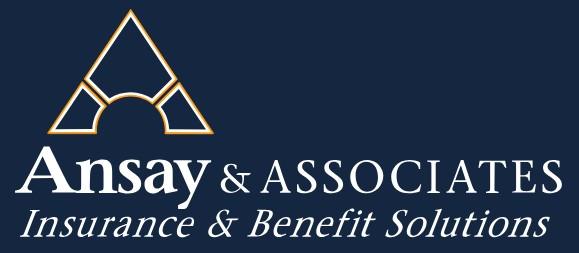
As an employee of Ansay & Associates LLC enjoying your work and making valuable contribu�ons to business are equally vital. The health, sa�sfac�on and security of you and your family are important, not only to your well-being, but ul�mately, in terms of achieving the goals of our organiza�on.
For the 2025 plan year, Ansay & Associates LLC has worked hard to offer a compe��ve total rewards package that includes valuable and compe��ve benefits plans. These programs reflect our commitment to keeping our staff healthy and secure. We understand that your situa�on is unique, and Ansay & Associates LLC is offering an overall benefits package that can be shaped and molded by you to fit your needs.
This benefits booklet is a summary descrip�on of your Ansay & Associates LLC benefit plans. If there is a discrepancy between these summaries and the wri�en legal plan documents, the plan documents shall prevail. This booklet and plan summaries do not cons�tute a contract of employment.
We hope this benefits booklet, along with our addi�onal communica�on and decision-making tools, will help you make the best health care choices for you and your family
As part of our ongoing efforts to be�er manage healthcare costs and enhance the benefits of our medical plan, we are introducing a new Wellness Incen�ve regarding Rou�ne Primary Care Visits and Preventa�ve Screenings. In order to qualify for this Wellness Premium Incen�ve, all employees, along with their spouses or significant others covered under our plan, need to complete a Rou�ne Primary Care Visit and/or Preventa�ve Screening by December 31, 2024.
If you are unable to complete your exam by this date, we will offer an extension through March 31, 2025, provided that you submit proof of a scheduled appointment. Please note that failure to complete the exam by this extended deadline will result in a premium differen�al, effec�ve April 1, 2025, for your UMR Medical Benefit Plan. Newly hired employees or employees new to the medical plan during the 2025 plan year will have un�l December 31, 2025 to complete their Rou�ne Primary Care Visit and/or Preventa�ve Screening.
We encourage you to schedule your exam early to avoid any last-minute issues and to ensure you and your family remain proac�ve about your health. If you have any ques�ons or need assistance with scheduling, please feel free to reach out to HR.
We will receive confirma�on of your completed visit from UMR. However, if you received care from a func�onal medicine provider or another provider not covered by insurance, you will need to provide proof to your HR team.
Thank you for your support in helping to improve our healthcare plan for everyone.

Understanding the full value of covered benefits allows you to take responsibility for maintaining good health and incorpora�ng healthy habits into your lifestyle. Some examples include ge�ng regular physical examina�ons, mammograms and immuniza�ons. Through the plans offered by Ansay & Associates, LLC, all covered individuals and family members are eligible to receive rou�ne wellness services like these, at no cost; all copays, coinsurance, and deduc�bles are waived.
The US Preven�ve Services Task Force maintains a regular list of recommended services that all Affordable Care Act (i.e. Health Care Reform) compliant insurance plans should cover at 100% for innetwork providers. Below is a list of common services that are included in the plans offered this year:
Rou�ne physical exam
Well baby and child care
Well women visits
Immuniza�ons
Rou�ne bone density test
Rou�ne breast exam
Rou�ne gynecological exam
Screening for Gesta�onal diabetes
Obesity screening and counseling
Rou�ne digital rectal exam
Rou�ne colonoscopy
Rou�ne colorectal cancer screening
Rou�ne prostate test
Rou�ne lab procedures
Rou�ne mammograms
Rou�ne pap smear
Smoking cessa�on
Health educa�on/counseling services
Health counseling for STDs and HIV
Tes�ng for HPV and HIV
Screening and counseling for domes�c violence

Dental coverage is similar to regular medical insurance you pay a premium and then your insurance will cover part or all of the cost for many dental services.
Professional dental care can diagnose or help prevent common dental problems, including toothaches, inflamed gums, tooth decay, bad breath and dry mouth. If condi�ons like these remain untreated, they can worsen into painful and expensive problems, such as gum disease or even tooth loss.
This coverage is also great for families. Since dental work can be very expensive, proac�ve dental care, such as rou�ne cleanings, can help save children from costly issues as they age.
Dental coverage allows you to visit a den�st whenever you need to inexpensively receive preven�ve and diagnos�c care.
Addi�onally, dental health professionals are able to spot more serious health issues, including some types of cancer. That makes it even more important to see a den�st regularly
With dental insurance, you're inves�ng in your smile and overall health. Beyond cleanings and rou�ne care, dental coverage may also help pay for more specialized treatments, such as root canals or fillings.
See everything your plan covers by reviewing the benefits statement and overview. Reach out to HR with any ques�ons.

Similar to other forms of insurance, with vision care you pay a premium and the insurance company will cover part or all of your vision costs.
Vision coverage is important because an eye doctor can catch eye issues before they worsen. A visit with your eye doctor can determine whether you need correc�ve lenses and, if so, the correct prescrip�on. Other eye concerns that will be addressed in an eye exam include checking for condi�ons or diseases, such as glaucoma and cataracts, which can lead to vision loss.
Vision coverage does not usually cover surgeries or experimental vision services. However, vision insurance may help lower the costs of some procedures, such as laser eye surgery, even if it's not 100% covered. This will depend on the plan.
Vision plans typically cover things like eyeglass frames, lenses, contacts and annual eye exams. In most cases, plans have a set dollar amount that they will pay for certain items. For instance, a plan may pay up to $150 for frames, and anything over that amount is covered by you. Although, your plan specifics may vary.
Eye doctors can even help detect some types of cancer, making regular visits even more important.
Review your benefits statement to see everything your vision plan covers. Reach out to HR with any ques�ons.
& Fi�ng
Bifocal Eyeglass Lenses $10 Copay
Trifocal Eyeglass Lenses $10 Copay

Disability insurance is coverage that provides you with income protec�on should you be unable to work due to an injury or illness. With disability coverage, you are compensated for a por�on of your lost income.
Short-term disability (STD) coverage begins within one to 7 days of the event causing your disability The coverage allows you to con�nue to receive pay at a fixed weekly amount or a set percentage of your incom
STD lasts for 13 weeks. When STD coverage ends, long-term disability (LTD) coverage typically takes effect.

or
on classifica�on
Benefit dura�on up to age 65 or SSNRA, whichever is later
Disability insurance is coverage that provides you with income protec�on should you be unable to work due to an injury or illness. With disability coverage, you are compensated for a por�on of your lost income.
Long-term disability (LTD) coverage is a type of disability insurance that pays you a set percentage of your regular income a�er a specified wai�ng period. The LTD insurance begins once the STD policy is exhausted a�er 13 weeks.

Summary of Coverage
Employee benefit amount $50,000 or 1 X Salary depending on classifica�on
Maximum benefit amount $350,000 (up to $290,000 guaranteed issue)
Group life is 100% covered by the employer with the op�on of
Employees must fill out an EOI form if they exceed the guaranteed issue amount.
Life insurance isn't a fun thing to think about, but, if you have people who depend on you for financial support, then life insurance is really about protec�ng them in case something happens to you, your designated beneficiary would collect a financial benefit upon your death.
Group life insurance coverage is a employer-sponsored safety net in case the worst happens, with no out-of-pocket costs to you. If you believe you need addi�onal coverage, you may wish to enroll in voluntary life insurance as well.

Summary of Coverage
5 X Salary ($500,000 maximum)
Guaranteed Issue of $170,000
AD&D benefit Yes
Spouse benefit
Dependent benefit
$5,000 increments up to 50% of employee coverage ($250,000 maximum)
Guaranteed Issue of $30,000
$10,000 6 months to age 27
$250 age 14 days to 6 months Employees must fill out an EOI form if they exceed the guaranteed issue amount.
Voluntary life insurance is similar to group life insurance, except it is paid for by you. It can provide addi�onal financial security to you family in case the worst happens.
With voluntary life insurance, you pay a monthly premium and then your beneficiaries receive a guaranteed amount in the event of your death. Plans are typically flexible and allow you to set your contribu�on and payment amounts, allowing you more control.
While this type of insurance is not fun to think about, it can be a vital lifeline for your family.
Plan Benefits
See the Accident Insurance Summary on Intranet for benefit schedule.
Addi�onal features:
This plan pays a $50 wellness screening benefit each year once you provide proof of an eligible health screening. It will pay for a dependent screening too.
Provides coverage for off-the job accidents.
Benefits are payable directly to you, the employee.
This plan pays benefits in addi�on to any other coverage you may have. There are no health ques�ons or pre-exis�ng condi�ons limita�ons.
Even a broken arm can result in medical costs not covered by your health plan. Accident insurance helps to protect your finances a�er a mishap. It pays you cash for covered accidents and treatments. You can use the money to help pay out-of-pocket medical costs or everyday expenses.
Child(ren)
Employee
Spouse
Child(ren)
$5,000 to $50,000 of coverage - in increments of $5,000 - with no medical ques�ons up to guaranteed issue amount of $10,000. Benefit amount is reduced 50% at age 70.
If you elect coverage for yourself, $2,500 to $25,000 of coverage - in increments of $2,500 up to guaranteed issue amount of $5,000. Cannot exceed 50% of your coverage.
If you elect coverage for yourself, $2,500 to $5,000 of coverage (for each eligible child) - in increments of $2,500. Cannot exceed 50% of your coverage.
age rated per $5,000 of coverage (with smoker and non-smoker rates)
age rated per $2,500 of coverage (with smoker and non-smoker rates)
age rated per $2,500 of coverage
An illness can lead to unexpected costs not covered by your health plan. Deduc�bles and copays, or other costs like travel and child care can reduce your savings. Cri�cal illness insurance provides a cash benefit when you or a person on your plan is diagnosed with a covered condi�on, like a heart a�ach or stroke. The benefit is paid directly to you, to use however you want.
Plan Benefits
See the Hospital Indemnity Insurance Summary on the Intranet for benefit schedule.
Helps Protect Your Finances
When you, your spouse, or child are facing a hospital stay, you can receive a benefit to help pay unexpected expenses not covered by your plan.
Helps Cover Related Expenses
While health plans may cover direct costs associated with an illness or injury, you can use your hospital indemnity benefits to help cover related expenses like lost income, child care, deduc�bles and copays.
Pays Cash Benefits Directly to You
Hospital indemnity insurance payments can be used however you want, and it pays in addi�on to any other coverage you may already have. Benefits are payable directly to you.
Benefits (Payable from Hospital Stay Due to:
- Sickness
- Accidents
- Rou�ne pregnancy
- Complica�ons of pregnancy
- Newborn complica�ons
- Mental and nervous disorders
- Substance abuse
Our highly trained clinicians will listen to your concerns and help you or your family members with any issues, including:
• Anxiety, depression, stress
• Grief, loss and life adjustments
• Relationship/marital conflicts
Our specialists provide qualified referrals and resources for just about anything on your to-do list, such as:
• Finding child and elder care
• Hiring movers or home repair contractors
• Planning events, locating pet care
Talk to our attorneys for practical assistance with your most pressing legal issues, including:
• Divorce, adoption, family law, wills, trusts and more Need representation? Get a free 30-minute consultation and a 25% reduction in fees.
Our financial experts can assist with a wide range of issues.
• Retirement, taxes, mortgages, budgeting and more For additional guidance, we can refer you to a local financial professional and arrange to reimburse you for the cost of an initial one-hour in-person consult.
GuidanceResources ® Online is your 24/7 link to vital information, tools and support. Log on for:
• Articles, podcasts, videos, slideshows
• On-demand trainings
• “Ask the Expert” personal responses to your questions
EstateGuidance ® lets you quickly and easily create a will online.
• Specify your wishes for your property
• Provide funeral and burial instructions
• Choose a guardian for your children
When you call, you will speak with a GuidanceConsultantSM, a master’s- or PhD-level counselor who will collect some general information about you and will talk with you about your needs. The GuidanceConsultant will provide the name of a counselor who can assist you. You will receive counseling through the EAP up to 5 sessions per issue, per person, per calendar year. You can then set up an appointment to speak with the counselor over the phone or schedule a face-to-face visit.
The EAP provides free short-term counseling with counselors in your area who can help you with your emotional concerns. If the counselor determines that your issues can be resolved with short-term counseling, you will receive counseling through the EAP. However, if it is determined that the problem cannot be resolved in short-term counseling in the EAP and you will need longer-term treatment, you will be referred to a specialist early on and your insurance coverage will be activated.
No-cost, confidential solutions to life’s challenges.
Your ComPsych ® GuidanceResources ® program EAPComplete offers someone to talk to and resources to consult whenever and wherever you need them. Call: 877.595.5284
TTY: 800.697.0353
Your toll-free number gives you direct, 24/7 access to a GuidanceConsultant SM , who will answer your questions and, if needed, refer you to a counselor or other resources. Online: guidanceresources.com
Web ID: EAPComplete
Log on today to connect directly with a GuidanceConsultant about your issue or to consult articles, podcasts, videos and other helpful tools.


EAPComplete Anytime
Call: 877.595.5284 TTY: 800.697.0353
Online: guidanceresources.com App: GuidanceNowSM
Web ID: EAPComplete

Your employer has partnered with ARORx for your prescription drug coverage.
With ARORx, you have access to all national pharmacy chains and most smaller local pharmacies.
You will continue to get your prescriptions under the same copay structure you currently do and use the same retail pharmacies you always have.
New Card. Look out for your new card in the mail with your ARORx/Evo information on the back.
Give to your pharmacist on your next fill, after the effective date. You usually only need to give your new information 1 time at the pharmacy to keep on file for future fills.
New Mail Order Pharmacyand Website. Set up your new mailorder account:
1. Kroger
A. https://www.PPSRX.com
B.Phone (800) 552 -6694
High Cost Drug Program. Did you know the cost of drugs has increased up to 5,000% in the past 5 years and 2% of claimants account for 40-50% of overall spending?
ARORx’s high cost drug service reduces cost on drug spend for you and your employer, often getting your high cost medication for free & delivered right to your door.
To find out if you’re taking a high cost drug, take a look at page 5 & 6’s list of Rx. If you see your Rx on the list, contact ARORx at 833-306-4092 by November 4th to set up your new fill process.
Be sure to engage with ARORx promptly to ensure timely processing and no disruption to your fill. See page 4 for high cost drug program details.
If you’re not taking a high cost drug, continue to use the same retail pharmacy at the same copays as before

Every change has its challenges. Follow these best practices for a smooth transition.

1. Refill your prescription right before the effective date so you have a full supply on hand. Most plans allow you to refillyour prescriptions beforeyou completelyrun out.
2. Once your new plan starts, don’t fill your first prescription going into a weekend, a holiday, or right beforeyour vacation. Please fillwith at least 3 businessdays to spare so our team can solve any scenarios that may pop up.
3. Call your pharmacy before you pick up your first fill on the new plan to give them your new plan information and confirm your cost before you’re standing in line. 99% of pharmacy calls ARORx receives during implementation are due to pharmacies running old plan information.
4. CallARORx for assistance. If you have anyquestionsor needassistance, contact ARORx 24/7 at 833-306-4092
After the effective date on page 1, if you receive a new prescription from your doctor:
1. Call the pharmacy before picking up the new drug to confirm your cost.
2. When the pharmacy runs your prescription in their system, they will be notified if it’s a drug you’ll need to fill through ARORx.
3. If you need to fill through ARORx, contact ARORx to start the process immediately or ARORx will contact you the following business day.





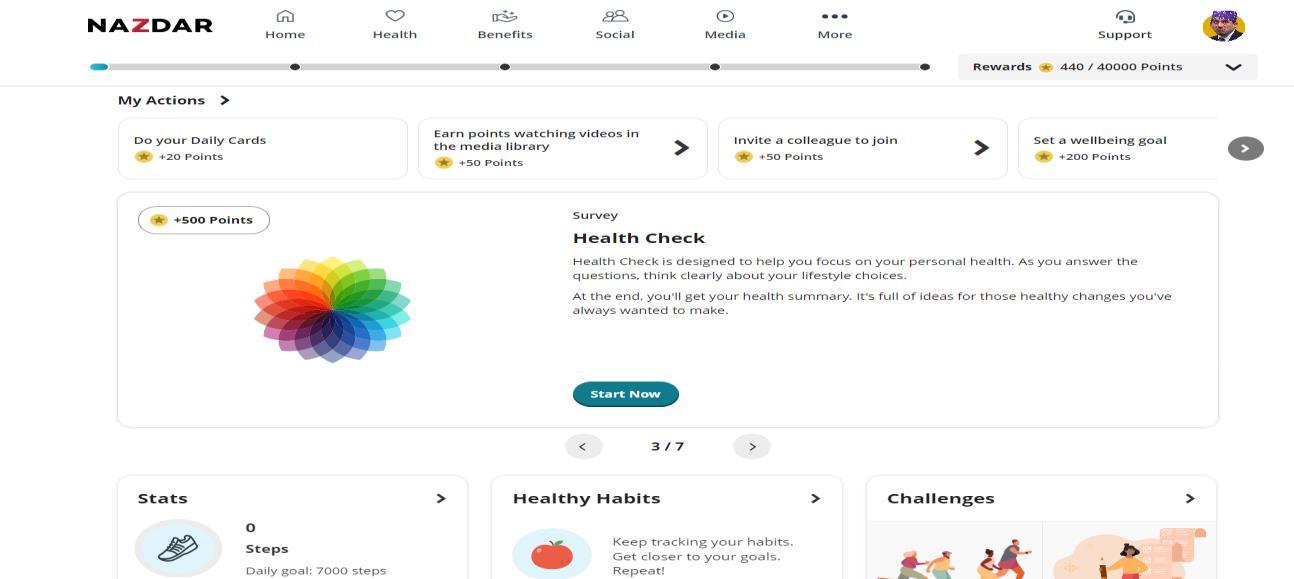



Learn how you can stay well and earn rewards with Personify Health!

and Android. Plus, the first time you log in you’ll earn bonus points!
Connect an activity tracker to get credit for your steps, active minutes, and sleep. We sync with many devices and apps (Max Buzz, Fitbit, Apple Health, S Health, etc.)
Upload a profile picture and add friends. Set your interests to get personalized daily tips to help you eat healthy, get active, reduce stress, sleep well, and more.


Welcome to a smarter, simpler, faster way to manage your health care benefits, right from the palm of your hand.
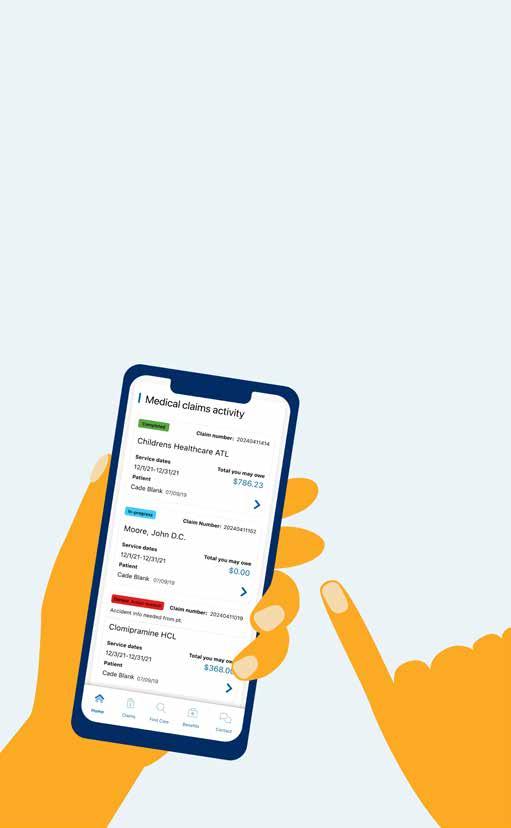

Download the UMR app today!
Simply scan the QR code or visit your app store to get started.

The UMR app has a smart fresh look, simple navigation, and faster access to your health care benefits information. View your plan details on demand - anytime, anywhere.
With a single tap, you can:
• Access your digital ID card
• Look up in-network health care providers
• Find out if there’s a co-pay for your upcoming appointment
• View your recent medical and dental claims
• Chat, call or message UMR’s member suppor t team

You want managing your health care to be fast and easy, right? You got it. At umr.com, you’ll fnd everything you want to know – and need to do – as soon as you log in. No hassles. No waiting. Just the answers you’re looking for anytime, night or day!
Log in now to:
• View Things to do, your personalized benefts to-do list
• Check your benefts and see what’s covered
• Look up what you owe and how much you’ve paid
• Find a doctor in your network
• Learn about medical conditions and your treatment options
• Access tools and trusted resources to help you live a healthier life
Note: The images shown refect available features within our desktop site. These features may or may not be available to all users, depending on your individual and/or company benefts.
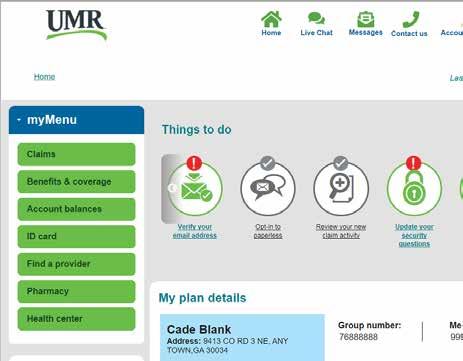

With just a tap, you can:
View your plan details on-demand – anytime, anywhere Access your digital ID card Find out if there is a co-pay for your upcoming appointment
Chat, call or message UMR’s member support team
Stay connected to your health care and download the UMR app today!
Simply scan the QR code to the left or visit your app store to get started.
We’ve made it easy to fnd the top things people want to know. Choose Benefts & coverage from myMenu to fnd out:
• What health care services are covered?
• What’s the cost diference between an in-network and out-of-network service?
Get your answers at a glance on umr.com
• What’s your deductible, and are you close to reaching it?
• Is there a co-payment for your ofce visit? If so, how much?
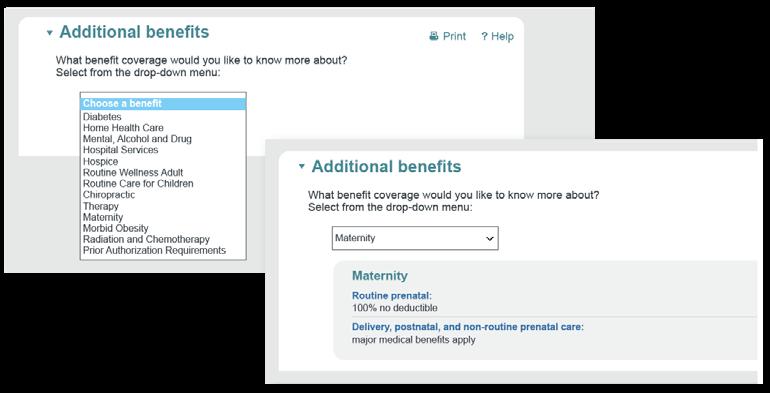
Fictionalized data
Glossary
Still confused about what a deductible is?
Just click the glossary tile shortcut on the member home page to fnd common health care terms (including beneft terms) defned in plain, clear language.

Fictionalized data
No worries. It’s easy to get a replacement online
Just click ID card from myMenu to see a copy of your card. With a couple more clicks you can have a new card mailed to your home.
Can’t wait for the mailman? Print a temporary copy from our desktop site. Or, use your smart phone to view your ID card or fax a copy to your doctor’s ofce.
Know the price you’ll pay ahead of time
Use the Health cost estimator to look up a treatment or procedure in your area.
Quickly see what you spent on health care this year
Get a breakdown by the types of services, so you can see where all your money went.
sure you get your in-network discount Do a quick search for participating doctors and facilities near you.
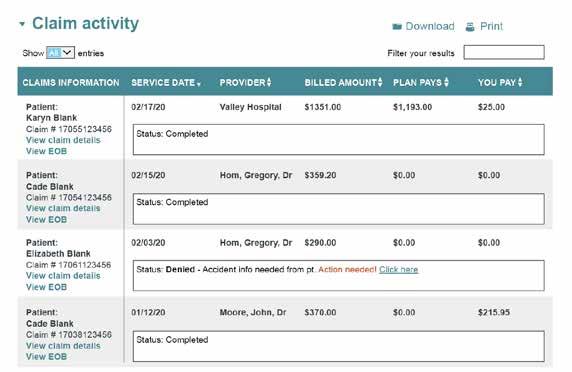
Hassle-free access when you need it
Check in at your convenience to see if a claim has been processed and what you might owe. To get more details on a specifc claim, click View claim details or view EOB. This will tell you the type of services provided, the amount billed and the amount paid, if any, and whether there’s any action that needs to be taken before the claim can be processed.
You can choose to receive a secure e-mail any time you have a new EOB. And if you’re not ready to give up paper completely, you can print out copies from our claims center.
Online health information: up-to-date and ad-free
• Search your health symptoms
• Understand your treatment options
• Learn about drug interactions
• Find frst aid information
Our top picks for healthy eating and exercise
• Get the essentials on men’s, women’s & kids’ health
• Watch step-by-step recipe videos
• Log your exercise and activity



Free tools, apps and calculators
• Calculate your body-mass index (BMI)
• Download apps to help you stay healthy
• Track your nutrition and ftness goals
Start your personalized search in the umr.com Health center
Choose Health center from the myMenu and select the tile shortcuts that interest you. You can be confdent knowing the information we’ve gathered draws upon our clinical expertise and guidelines from trusted health organizations.
Ready to pop in and take our site for a spin? Visit umr.com anytime to get started. If you already have an account, select the Log in/Register button to sign in.
If it’s your frst time visiting us, use the Log in/Register button to open an account. Make sure you have your ID card handy and follow the steps to get started.
Teladoc gives you round-the-clock access to U.S. boardcertifed doctors, from home or on the go. Call or connect online or using the Teladoc mobile app for afordable medical care, when you need it.



Teladoc doctors can treat many medical conditions, including:
• Cold & fu symptoms
• Allergies
• Pink eye
• Respiratory infections
• Sinus problems
• Skin problems
• And more
With your consent, Teladoc is happy to provide information about your Teladoc visit to your primary care physician.




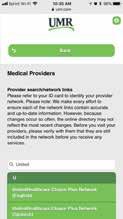

The next time you’re in the market for a new doctor or are wondering how much you’ll pay for a possible medical procedure, visit umr.com first. Your online services make it easy to look up UnitedHealthcare network providers and health care facilities and find cost estimates for different services – all in one place.
You’ll get the information you need to make the right choices for you and your family and know what to expect before making an appointment
With umr.com, you have anytime access to a searchable directory of UnitedHealthcare network providers in your area. Choosing a doctor or facility in the network ensures your benefits are paid at the highest level, so you can expect to pay less out of your own pocket. And when you go to a network provider for preventive services, there’s typically no cost to you.

You can narrow your search to primary care providers or look up physicians by specialty. Then select a physician from your search results to learn more about where they went to school, where they practice and how to schedule an appointment.
Log into umr.com and select Find a provider. Then choose View providers to search for medical providers. Or log in and look for the health cost estimator shopping cart icon to get started.
The two blue hearts next to a doctor’s name tells you they are a Premium Care Provider who has been reviewed by UnitedHealthcare and meets quality standards for delivering cost-effective care.
You may also see star ratings for customer satisfaction based on reviews from previous patients.
Different providers may charge different amounts for the services they offer. Your search results will give you a range of the average costs for preventive care or medical procedures in your area. And the individual provider listings show whose costs are below, above, or meet the local average.
If a procedure typically includes multiple steps of treatment, you can review the total cost and your estimated out-of-pocket cost for each step. So you’ll know what to expect, from start to finish.
Your estimated out-of-pocket costs are personalized to you, based on your own benefit plan’s deductible, annual out-of-pocket max, co-pay, co-insurance and how much you’ve paid toward your deductible.


Have you ever wondered what all that stuff on your ID card really means? Here’s a sample of what you might see. Each plan is different.
The number assigned specifically to you to track all of your benefits and claims information. A list of the family members who are covered under your plan.

The number assigned to identify your group health plan.
Information about your prescription drug plan. Pharmacists use this to process your claims.
Your medical provider network, also referred to as your preferred provider organization (PPO). Going to doctors, clinics and hospitals in your network will save you money.
Look for important contact information, including the customer service phone number to call for answers to claims or benefit questions. You can also go to umr.com to check your benefits, claims status, accumulators and eligibility.
Your in-network (In-Net) and out-of-network (Out of Net) medical individual and family deductibles (Ded) and out-of-pocket maximums (OOPM) information.

Call this number only when you need medical services and your plan requires prior authorization for those services.
Call this number when you have questions about pharmacy benefits.

Individual $1,600 for 2024
($1,650 for 2025)
Family $3,200 for 2024
($3,300 for 2025)
Otherwise known as an HSA, a health savings account can be funded with your tax-exempt dollars, by your employer, by a family member or by anyone else on your behalf. Dollars from the account can help pay for eligible medical expenses not covered by an insurance plan, including the deductible, coinsurance, and even health insurance premiums, in some cases.
Who is eligible for an HSA?
Anyone who is:
• Covered by a high deductible health plan (HDHP);
• Not covered under another medical plan that is not an HDHP;
• Not entitled to (eligible for AND enrolled in) Medicare benefits; or
• Not eligible to be claimed on another person’s tax return.
What is an HDHP?
A high deductible health plan is a plan with a minimum annual deductible and a maximum out-of-pocket limit as listed in the following table. These minimums and maximums are determined annually by the Internal Revenue Service (IRS) and are subject to change.

$8,050 for 2024
($8,300 for 2025)
$16,100 for 2024
($16,600 for 2025)
What are the steps in an HSA?
1. Employee, employer, family member and/or someone else funds the employee’s HSA account.
2. Employee seeks medical services.
3. Medical services are paid by HDHP, subject to deductible and coinsurance.
4. Employee may seek reimbursement from HSA account for amounts paid toward deductible and coinsurance.
5. Deductible and out-of-pocket maximum fulfilled.
6. Employee may be covered for all remaining eligible expenses.*
The HDHP can provide preventive care benefits without the required minimum deductible.
*Subject to plan design; check your HDHP Summary Plan Description.
When do I use my HSA?
After visiting a physician, facility or pharmacy, your medical claim will be submitted to your HDHP for payment. Your HSA dollars can be used to pay your out-of-pocket expenses (deductibles and coinsurance) billed by the physician, facility or pharmacy, or you can choose to save your HSA dollars for a future medical expense.
This Know Your Benefits article is provided by Ansay & Associates LLC and is to be used for informational purposes only and is not intended to replace the advice of an insurance professional. © 2020-2024 Zywave, Inc. All rights reserved.


You may also be able to use an HSA debit card to access your HSA funds, if your HSA custodian or trustee allows it.
You may use your HSA for non-medical expenses. However, HSA amounts that are used for non-medical expenses are taxable as income to you and are generally subject to an additional 20% penalty.
What is a deductible?
It is a set dollar amount determined by your plan that you must pay out-of-pocket or from your HSA account before insurance coverage for medical expenses can begin.
How much can I contribute to an HSA?
The annual HSA contribution limits for 2024 are $4,150 for self-only coverage and $8,300 for family coverage. For 2025, these numbers will increase to $4,300 and $8,550, respectively. Individuals age 55 or older may be eligible to make a catch-up contribution of $1,000.
What is the difference between an HSA and flexible spending Account (FSA)?
An HSA can roll over unused funds from year to year and is portable if the employee leaves the company. An FSA cannot roll over unused funds from year to year and is not portable.
Can I contribute to both an HSA and an FSA in the same year?
General-purpose FSA coverage will make you ineligible for HSA contributions. However, certain types of FSA designs will not prevent your HSA eligibility. For example, if you are covered under a “limited FSA” (for example, an FSA that covers vision, dental and/or preventive care expenses on a first-dollar basis), you can be eligible for an HSA.
Also, you can be eligible for an HSA if you are covered under a “post-deductible FSA” (that is, an FSA that only pays or reimburses for preventive care or for medical expenses that are incurred after the minimum annual HDHP deductible has been met).
Please ask Ansay & Associates LLC if a limited or postdeductible FSA is available to you.
What if I enroll in an HSA in the middle of the year? Your HSA contributions are generally determined on a monthly basis. However, if you enroll in an HSA mid-year, you are allowed to make a full year’s contribution, provided you are eligible on Dec. 1 of that year and you remain eligible for HSA contributions for at least the 12-month period following that year.
Why should I elect an HSA?
Cost Savings
• Triple tax benefits
o HSA contributions are excluded from federal income tax.
o Interest earnings are tax-deferred.
o Withdrawals for eligible expenses are exempt from federal income tax.
• Reduction in medical plan contribution
o Unused money is held in an interestbearing savings or investment account.
Note: A few states have not passed legislation to provide favorable state tax treatment for HSAs. Therefore, amounts contributed to HSAs and interest earned on HSA accounts may be included on the employee’s W-2 for state income tax purposes.
• Save for future medical expenses.
• Funds roll over from year to year.
• Account is portable—you take it with you even if you leave the company.
• You control and manage your health care expenses.

• You choose when to use your HSA dollars to pay your health care expenses.
• You choose when to save your HSA dollars and pay health care expenses out-of-pocket.
• You decide whether to use your HSA dollars to pay for non-medical expenses and incur the additional taxes.
Flexible spending accounts, or FSAs, provide you with an important tax advantage that can help you pay health care and dependent care expenses on a pre-tax basis. By anticipating your family’s health care and dependent care costs for the next plan year, you can lower your taxable income.
Essentially, the Internal Revenue Service (IRS) set up FSAs as a means to provide a tax break to employees and their employers. As an employee, you agree to set aside a portion of your pre-tax salary in an account, and that money is deducted from your paycheck over the course of the year. The amount you contribute to the FSA is not subject to social security (FICA), federal, state or local income taxes effectively adjusting your annual taxable salary. The taxes you pay each paycheck and collectively each plan year can be reduced significantly, depending on your tax bracket. As a result of the personal tax savings you incur, your spendable income will increase.
The example that follows illustrates how an FSA can save money.
Bob and Jane’s combined gross income is $30,000. They are married and file their income taxes jointly. Since Bob and Jane expect to spend $3,000 in medical expenses in the next plan year, they decide to direct a total of $2,850 into their FSAs. (See table)
* Assumes standard deductions and four exemptions
** Varies, assumes 3%
This example is for illustrative purposes only. Every situation varies and it is recommended you consult a tax advisor for all tax advice.

This Know Your Benefits article is provided by Awesome Agency and is to be used for informational purposes only and is not intended to replace the advice of an insurance professional. © 2020-2021, 2023 Zywave, Inc. All rights reserved.


The health care reimbursement FSA lets you pay for certain IRS-approved medical care expenses not covered by your insurance plan with pre-tax dollars. For example, cash that you now spend on deductibles, copayments or other outof-pocket medical expenses can instead be placed in the health care reimbursement FSA pre-tax. The annual maximum contribution to the health care reimbursement FSA is $3,300 in 2025
Health FSAs employ a “use-it-or-lose-it” model. If you do not use the funds that you contribute to your FSA within the end of the year, you will have to forfeit those funds. However, employers also have the option of allowing employees to carry over up to $660 in 2025 of unused funds from one year to the next. In addition, any amount that is carried over does not count toward the maximum contribution limit.
Eligible health care expenses for the health care reimbursement FSA include more than just your deductible and copayments. You can also reimburse items such as prescription drugs, dental expenses, eye glasses and contacts, certain medical equipment and many more items. For more information about eligible medical expenses, please refer to IRS Publication 502, Medical and Dental Expenses, available at www.irs.gov/publications/p502/index.html
Over-the-counter drugs used to be eligible expenses, but a law effective Jan. 1, 2011, only allows claims for over-thecounter medication or drug expenses (other than insulin) to be reimbursed if the patient has a prescription. This new rule does not apply to items for medical care that are not considered medication or drugs. Equipment such as crutches, supplies such as bandages and diagnostic devices such as blood sugar test kits still qualify for reimbursement without a prescription.
The Dependent Care FSA lets you use pre-tax dollars toward qualified dependent care. The annual maximum amount
you may contribute is $5,000 (or $2,500 if married and filing separately) per calendar year.
The American Rescue Plan Act temporarily raises pre-tax contribution limits for a DCAP for calendar year 2021. For this calendar year, a married employee who files a joint tax return or an unmarried employee may place up to $10,500 in a DCAP. A married employee who files a separate tax return may place up to $5,250 in a DCAP.
If you elect to contribute to the dependent care FSA, you may be reimbursed for:
• The cost of child or adult dependent care
• The cost for an individual to provide care either in or out of your house
• Nursery schools and preschools (excluding kindergarten)
Eligible Expenses
In order for dependent care services to be eligible, they must be for the care of a tax-dependent child under age 13 who lives with you, or a tax-dependent parent, spouse or child who lives with you and is incapable of caring for himself or herself. The care must be needed so that you and your spouse (if applicable) can go to work. Care must be given during normal working hours (instances such as Saturday night babysitting does not qualify) and cannot be provided by another of your dependents.
Is the FSA program right for me?
The flexible spending accounts offered by are beneficial for anyone who has out-of-pocket medical, dental, vision, hearing or dependent care expenses beyond what his or her insurance plan covers. It’s easy to determine if an FSA will save you money. At enrollment time, you will need to determine your annual election amount. Estimate the expenses that you know will occur during the year. These include out-of-pocket expenses for yourself and anyone claimed as a dependent on your taxes. If you had $100 or more in recurring or predictable expenses, the accounts can help you stretch your dollars.

How do the accounts work?
If you decide to enroll in one or both of the accounts, your contributions are taken out of each paycheck before taxes in equal installments throughout the plan year. These dollars are then placed into your FSA. When you have an eligible health care or dependent care expense, you must submit a claim form along with an itemized receipt to be reimbursed from your account.
The health care reimbursement FSA will reimburse you for the full amount of your annual election (less any reimbursement already received), at any time during the plan year, regardless of the amount actually in your account. The dependent care FSA will only reimburse you for the amount that is in your account at the time you make a claim.
If you are reading this article, your employer has a limitedpurpose flexible spending account (FSA) option. Limitedpurpose FSAs can be a great addition to a health coverage plan. Before you decide if a limited-purpose FSA is right for you, you need to know how this type of health plan works.
What is a limited-purpose FSA?
A limited-purpose health flexible spending account, also called a limited purpose FSA, is similar to a general-purpose health FSA—the difference being that there are less eligible expenses.
What are the advantages of a limited-purpose FSA?
The main advantage of FSA funds is that you can pay for qualifying medical expenses tax-free while reducing your taxable income.
You are not allowed to contribute to both a health savings account (HSA) as well as a standard (non-limited) health FSA—you are, however, eligible for an HSA if you use a limited-purpose FSA for your dental and vision care needs. This will allow you to maximize your savings and tax benefits.
Ask your employer if it is possible to get reimbursed for standard FSA-qualified health care expenses by meeting your deductible. Your limited health care FSA would then work like a standard health care FSA and may not be limited to dental, vision or preventive care. A post-deductible FSA is eligible for combination with an HSA.
What are the disadvantages of a limited-purpose FSA? FSAs employ a “use-it-or-lose-it” model. If you do not use the funds that you contribute to your limited-purpose FSA within the end of the year, you will have to forfeit those funds. However, employers also have the option of allowing employees to carry over up to $660* of unused funds from one year to the next beginning in 2025. In addition, any amount that is carried over does not count toward the maximum contribution limit.
Also in a limited-purpose FSA, your covered health care procedures are limited to dental, vision and preventative care.
There are contribution limits to FSAs. The contribution limit for taxable years beginning in 2024 is $3,200., and it increases to $3,300 for 2025.
There is also no “double-dipping”, meaning that you are unable to pay for a medical procedure using your FSA as well as an additional plan or program, such as an HSA.
Is a limited-purpose FSA right for me?
If you have planned future dental or vision expenses, limited-purpose FSAs make a lot of sense, especially when used in conjunction with an HSA.
If you think you will have little to no dental or vision expenses in the plan year, a limited-purpose FSA is a risky investment as you will lose the funds you do not use within the year.

This Know Your Benefits article is provided by Ansay & Associates LLC and is to be used for informational purposes only and is not intended to replace the advice of an insurance professional. © 2013-2024 Zywave, Inc. All rights reserved.



ANSAY & ASSOCIATES, LLC 401(K) PLAN
SUMMARY PLAN DESCRIPTION
January 1, 2024
Ansay & Associates, LLC (the "Employer") established the Ansay & Associates, LLC 401(k) Plan (the "Plan") effective 01/01/2010. This Summary Plan Description describes the Plan as restated effective 01/01/2022. This revised Summary Plan Description supersedes all previous Summary Plan Descriptions. Although the purpose of this document is to summarize the more significant provisions of the Plan, the plan document will prevail in the event of any inconsistency. In addition, the terms of the Plan cannot be modified by written or oral statements made to you by the Plan Administrator or other personnel.
You are an "Eligible Employee" if you are employed by Ansay & Associates, LLC or any affiliate who has adopted the Plan. However, you are not an "Eligible Employee" if you are a member of any of the following classes of employees:
•For purposes of Elective Deferral Contributions, Employer Matching Contributions and Non-Elective Contributions, any employee who is included in a unit of employees covered by a collective bargaining agreement, if retirement benefits were the subject of good faith bargaining, and if the collective bargaining agreement does not provide for participation in this Plan.
•For purposes of Elective Deferral Contributions, Employer Matching Contributions and Non-Elective Contributions, any employee who is a non-resident alien who received no earned income which constitutes income from services performed within the United States.
•For purposes of Elective Deferral Contributions, Employer Matching Contributions and Non-Elective Contributions, the term "Eligible Employee" will not include: A Seasonal Employee whose regularly scheduled service is less than 1,000 Hours of Service in the relevant eligibility computation period. However, if any such excluded Employee satisfies a 1 Year of Service requirement, then such Employee will no longer be part of the excluded class and shall enter the Plan on the coinciding with or next following Entry Date. For this purpose, a Year of Service means the computation period of 12 consecutive months during which an Employee has completed at least 1,000 Hours of Service. The initial computation period shall begin with the date on which the Employee first performs an Hour of Service. Succeeding computation periods shall shift to the Plan Year. Seasonal Employees who had already satisfied the Plan's service requirement as of January 1, 2015 were allowed to continue participation in the Plan.
You will become eligible to make Elective Deferral Contributions and receive Employer Matching Contributions and Non-Elective Contributions on the first day of the calendar month, coincident with or next following the date you attain age 21 and you complete 30 days of service (elapsed time), provided that you are an Eligible Employee at the end of that period. If you do not meet the requirement as specified, you will also be eligible for the Plan if you complete 1,000 hours of service in an Eligibility Computation Period, provided that you are an Eligible Employee at the end of that period.
"Eligibility Computation Period" means a consecutive 12-month period beginning with your first day of employment and each anniversary of your date of employment. You will generally earn an hour of service for each hour you are paid for the performance of duties for the Employer (however, numerous exceptions and special rules apply).
All eligibility service with the Employer is taken into account except the following:
A "One-Year Break in Service" means an Eligibility Computation Period during which you are credited with 500 or fewer hours of service (special rules exist for absence from work for maternity or paternity reasons).
If you do not have any nonforfeitable right to the Account balance derived from Employer contributions, service before a period
of five (5) consecutive One-Year Breaks in Service will not be taken into account in computing eligibility service (this is referred to as the "rule of parity").
Years of service will be treated as service with the Employer for eligibility purposes for the following Employer(s) subject to any listed limitations: Any entity the Employer acquires whether by asset or stock purchase, but only with respect to individuals who are employees of the acquired entity at the time of the acquisition, for all sources.
Please note, if you are eligible to make or receive contributions you will be a "Participant" in the Plan.
Account
"Account" means all of the contributions, of whatever type, made to the Plan for a Participant, including the earnings and losses on those contributions.
You may elect to reduce your Compensation (defined below) and make a contribution to the Plan on a pre-tax basis. These pre-tax contributions are known as Elective Deferral Contributions. You may elect to defer up to 100% of your Plan Compensation on a pre-tax basis. Federal law also limits the amount you may elect to defer under this Plan and any other retirement plan permitting Elective Deferral Contributions during any calendar year ($23,000 in 2024). However, if you are age 50 or over, you may defer an additional amount, called a "Catch-up Contribution", of up to $7,500 (in 2024). These dollar limits are indexed; therefore, they may increase each year for cost-of-living adjustments. The Internal Revenue Code may further restrict Elective Deferral Contribution elections by "highly compensated" Participants.
You may elect to start, increase or reduce your elections to contribute to the Plan effective as of the dates established pursuant to Plan Administrator procedures. You may totally suspend your elections at any time.
The Plan Administrator may establish rules regarding the manner in which your elections are made. The rules may also require that certain advance notice be given of any election. Your election regarding Elective Deferral Contributions is only effective for Compensation you will receive in the future. The Plan Administrator may also reduce or totally suspend your election if the Plan Administrator determines that your election may cause the Plan to fail to satisfy any of the requirements of the Internal Revenue Code.
After receiving a notice from the Plan Administrator, you will be deemed to have made an Elective Deferral Contribution election in the amount of 6% of your Plan Compensation. The amount of such automatic enrollment will increase by 1% up to a maximum of 10% of your Plan Compensation.
Your first deferral rate increase will occur on the first day of the first Plan Year following the Plan Year in which your first automatic deferral occurs.
Your subsequent deferral election increases will occur on the first day of each Plan Year.
Please note, the automatic elections specified above will not apply if you already had an Elective Deferral Contribution election in effect on the effective date of the automatic enrollment feature.
Please note, the automatic elections specified above will be designated as pre-tax Elective Deferral Contributions.
If you do not turn in the form in time to prevent automatic contributions, you can withdraw the automatic contributions for a short time, despite the general limits on Plan withdrawals. During the 90 days after automatic contributions are first taken from your pay, you can withdraw the prior automatic contributions by turning in a refund form to the Plan Administrator. The amount you withdraw will be adjusted for any gain or loss. If you take out your automatic contributions, you lose Employer contributions that matched the automatic contributions. Also, your withdrawal will be subject to federal income tax (but not the extra 10% tax that normally applies to early distributions). If you take out automatic contributions, the Employer will treat you as having chosen to make no further
contributions. However, you can always choose to continue or restart your contributions by turning in a contribution form.
The Plan allows Elective Deferral Contributions to be made as Roth Contributions. Roth Contributions are Elective Deferral Contributions that are made in the same manner as your pre-tax Elective Deferral Contributions except that Roth Contributions are made to the Plan on an after-tax basis. If certain requirements are met, a "qualified distribution" from your Roth Contribution Account in the Plan will not be taxed. Please note, Roth Contributions are "Matched Employee Contribution". The Employer may match contributions you make as Roth Elective Deferral Contributions.
You must designate how much you would like to contribute on a pre-tax basis (normal Elective Deferral Contribution) and how much you would like to contribute as an after-tax Roth Contribution. You are not required to make any Roth Contributions. You may continue to designate all of your Elective Deferral Contribution elections as normal pre-tax contributions.
The sum of your Roth Contributions and normal Elective Deferral Contributions may not exceed the annual limit on normal Elective Deferral Contributions mentioned above.
As was mentioned above, a "qualified distribution" of your Roth Contributions (and earnings) is not taxable. A "qualified distribution" must be made more than five years after the first Roth Contribution is made and must meet at least one of the following requirements:
(i)the distribution must be made after you attain age 59-1/2;
(ii)the distribution must be made to your beneficiary after your death; or
(iii)the distribution must be made on account of your disability.
Please note, Roth Contributions are not suitable for everyone. Please consult with your tax advisor before making any Roth Contributions to the Plan.
The Employer may, in its sole discretion, make a matching contribution on your behalf if you make a "Matched Employee Contribution". A "Matched Employee Contribution" is any Elective Deferral Contribution or Catch-up Contribution that you may make during the Plan Year. If you make a "Matched Employee Contribution" the Employer may contribute to your Employer Matching Contribution Account in an amount and allocation formula as determined by the Employer in its sole discretion.
The Internal Revenue Code may also further restrict Employer Matching Contributions for highly compensated employees.
Non-Elective Contributions
The Employer may, in its sole discretion, make a Non-Elective Contribution to the Plan on your behalf. You will be eligible to receive an allocation if you have completed at least 501 hours of service during the Applicable Period or are employed by the Employer on the last day of the Applicable Period. For purposes of this section, the Applicable Period for determining satisfaction of service requirements for an allocation of Non-Elective Contributions will be each Plan Year. Hours of service with any entity the Employer acquires whether by asset or stock purchase, but only with respect to individuals who are employees of the acquired entity at the time of the acquisition are considered for purposes of satisfying the allocation service requirements. Non-Elective Contributions will be allocated to the Non-Elective Contribution Accounts of each Participant eligible to share in such allocations after the end of the Plan Year. Such contributions will be allocated to the Non-Elective Contribution Account of each Participant eligible in the ratio that each Participant's Plan Compensation bears to the Plan Compensation of all eligible Participants.
Please note, if you are an Eligible Employee and terminate employment with the Employer due to death, disability, attainment of Normal Retirement Age or attainment of Early Retirement Age you will be eligible to receive a Non-Elective Contribution regardless of whether you meet any service requirement and/or last day requirement described in this section.
Please note, if you terminate on the last day of the Applicable Period, you will be treated as being employed for purposes of determining whether you have met the last day requirement described in this section.
Qualified Non-Elective Contributions
In addition to the contributions described above, the Employer may make additional Qualified Non-Elective Contributions for the benefit of such Participants determined at the discretion of the Employer.
The Plan may accept a Rollover Contribution made on behalf of any Eligible Employee, regardless of whether such employee has met the age and service requirements of the Plan. An Eligible Employee who has not yet met any of the eligibility requirements of the Plan will be deemed a Participant only with respect to amounts, if any, in his Rollover Contribution Account. In general, any eligible rollover distribution will be accepted by the Plan; however, the Plan Administrator may establish procedures that regulate the method by which Rollover Contributions will be accepted.
If you serve in the United States armed forces and must miss work as a result of such service, you may be eligible to receive contributions, benefits and service credit with respect to any qualified military service. In addition, your survivors may be eligible to receive benefits or service credit if you die while performing qualified military service.
The amount that may be contributed to the Plan on your behalf in any year is limited to a fixed dollar amount ($69,000 in 2024). This dollar limit is indexed; therefore, it may increase each year for cost-of-living adjustments. In addition, contributions cannot exceed 100% of your total Plan Compensation.
"Plan Compensation" means wages that are shown as taxable wages on your IRS Form W-2. For any self-employed individual, Plan Compensation will mean earned income.
For purposes of allocating Employer Matching Contributions, Non-Elective Contributions and Qualified Non-elective Contributions, Plan Compensation is determined over the Plan Year.
Unless otherwise indicated below, Plan Compensation will exclude Deemed 125 Compensation and Post Year End Compensation which includes amounts earned during a year but not paid during that year solely because of the timing of pay periods and pay dates when: (i) these amounts are paid during the first few weeks of the next year; (ii) the amounts are included on a uniform and consistent basis with respect to all similarly situated Employees; and (iii) no compensation is included in more than one year for purposes of all contributions.
The following adjustments will be made to the definition of Plan Compensation:
•For purposes of Elective Deferral Contributions, Employer Matching Contributions and Non-Elective Contributions, Plan Compensation will include any amount you elect to defer on a tax-preferred basis to any Employer benefit plan.
•For purposes of Elective Deferral Contributions, Employer Matching Contributions and Non-Elective Contributions, Plan Compensation will exclude non-annual bonuses, Christmas bonuses, and mileage reimbursements as part of a monthly stipend.
No more than $345,000 (in 2024) of Plan Compensation may be taken into account in determining your benefits under the Plan. This dollar limit is indexed; therefore, it may increase each year for cost-of-living adjustments.
Elective Deferral Account, Rollover Contribution Account, Qualified Non-Elective Contribution Account, Employer Matching Contribution Account and Non-Elective Contribution Account
You are always fully (100%) vested in your Elective Deferral Account, Rollover Contribution Account, Qualified Non-Elective Contribution Account, Employer Matching Contribution Account and Non-Elective Contribution Account.
Commencement of Distributions
Termination of Employment. You are entitled to receive a distribution from your Account after you terminate employment. This includes termination due to Disability. The distribution will start at the time specified in the section titled "Timing and Form of Payment" below.
Late Retirement. If you continue working for the Employer after your Normal Retirement Age, your participation under the Plan will continue, and your benefits will begin following the date you terminate employment. You generally may not begin distributions until the time specified in the section titled "Timing and Form of Payment" below.
Death. If you die, your beneficiary will become entitled to receive your vested Account balance. The distribution will start at the time specified in the section titled "Timing and Form of Payment" below.
Normal Retirement Age
"Normal Retirement Age" means the date you reach age 65.
Early Retirement Age
"Early Retirement Age" means the date you reach age 55.
Timing and Form of Payment
Distribution for Reasons Other Than Death. If you become entitled to receive your benefit for any reason other than death your Account will be distributed in a lump sum payment. This is your normal form of payment. In addition to the normal form of payment, distributions from the Plan after termination of employment (for reasons other than death) may be made in a lump sum payment or substantially equal annual or more frequent installments over a period not to exceed the joint life expectancy of you or your Beneficiary or in the following form: partial withdrawals, provided the minimum withdrawal amount is $5,000. Payment of your vested Account may start as soon as administratively feasible with a final payment made consisting of any allocations occurring after your termination of employment. Your Account is payable in cash or as an in-kind distribution.
Distribution on Account of Death. If you die before distribution of your Account begins, distribution of your entire Account must be completed in the following manner: Pursuant to the election of the Participant or 'designated Beneficiary'
Your beneficiary will be entitled to a distribution in any form that is available to you prior to your death.
After your termination of employment from the Employer, if the vested amount of your Account does not exceed $1,000, your vested Account balance will be distributed from the Plan. You may elect to: 1) receive this distribution in cash; or 2) roll over the distribution to an individual retirement account (IRA) or the qualified plan of your new employer (but only if your new employer's plan allows such rollovers). However, if you do not timely return your election forms, and the vested amount of your Account balance is less than or equal to $1,000, your vested Account will be distributed to you in cash.
If the vested amount of your Account exceeds $1,000, you must consent to any distribution of your Account. However, the Plan Administrator will distribute your vested Account balance in a lump sum without your consent at the following time: a time determined by the plan sponsor's administrative policy that does not violate Code 411(a)(11).
You have the right to designate, in a written form acceptable to the Plan Administrator, one or more primary and one or more secondary beneficiaries to receive any benefit becoming payable upon your death. Your spouse must be your sole beneficiary unless he or she consents to the designation of another beneficiary. You may change your beneficiaries at any time and from time to time by filing written notice of such change with the Plan Administrator.
If you fail to designate a beneficiary, or in the event that all designated primary and secondary beneficiaries die before you, the death benefit will be payable to your spouse, or if there is no spouse, to your children in equal shares, or if there are no children to your estate.
A beneficiary designation to a spouse shall be automatically revoked upon the legal divorce of the Participant from the spouse.
Hardship Distributions
General Rule. You may receive a distribution on account of hardship from the vested portion of the following Accounts.
•Elective Deferral Account, including earnings of your Elective Deferral Account.
•If available, Safe Harbor Contribution Account or Qualified Non-Elective Contributions Account.
•Rollover Contribution Account.
Your Roth Contributions may be withdrawn on account of financial hardship in the same manner as your normal Elective Deferral Contributions. Please note however, that the income on the Roth Contributions may be taxable (and subject to penalties for early withdrawal) if the withdrawal is not a "qualified distribution."
If applicable, you must obtain all nontaxable loans under all plans maintained by the Employer before applying for a hardship distribution.
Immediate and Heavy Financial Need. You may receive a hardship distribution only if the Plan Administrator finds that you have an immediate and heavy financial need where you lack other available resources. The following are the only financial needs considered immediate and heavy:
1.Expenses incurred or necessary for medical care, described in Code section 213(d), for you or your spouse, children, or dependents;
2.The purchase (excluding mortgage payments) of a principal residence for the Participant;
3.Payment of tuition and related educational fees for the next 12 months of post-secondary education for you or your spouse, children or dependents;
4.The need to prevent the eviction of you from your principal residence (or a foreclosure on the mortgage on your principal residence);
5.Payments for burial or funeral expenses for your deceased parent, spouse, children or dependents;
6.Expenses for the repair of damage to your principal residence that would qualify for the casualty deduction; or
7.Expenses incurred on account of a federally declared disaster.
Hardship distributions may be made for certain expenses of your primary beneficiary in addition to your dependents. These expenses include those for medical, tuition, and funeral expenses. A person is your "primary beneficiary" if that person is named as a
beneficiary under the Plan and has an unconditional right to all or a portion of your Account Balance upon your death.
There will no longer be a 6-month suspension period for your Elective Deferral Contributions, if applicable, after the receipt of the hardship distribution. However, any remaining portion of the 6-month suspension period for a prior hardship distribution will continue until completion.
Amount Necessary to Satisfy Need. A distribution will be considered as necessary to satisfy your immediate and heavy financial need only if:
1.You have obtained all distributions, other than hardship distributions, under all plans maintained by the Employer;
2.The distribution is not in excess of the amount of an immediate and heavy financial need (including amounts necessary to pay any federal, state or local income taxes or penalties reasonably anticipated to result from the distribution).
3.You have represented in writing or by electronic medium that you have insufficient cash or other liquid assets to satisfy the financial need.
You may receive a distribution after you reach age 65 from the vested portion of all of your Accounts. Your Roth Contributions may be withdrawn in the same manner as your normal Elective Deferral Contributions. Please note however, that the income on the Roth Contributions may be taxable (and subject to penalties for early withdrawal) if the withdrawal is not a "qualified distribution."
Withdrawals at Any Time
You may receive a distribution from your Rollover Contribution Account at any time.
If you are a military reservist called to active duty for a period in excess of 179 days or for an indefinite period, you may receive a distribution from the Plan while still employed from amounts attributable to Elective Deferral Contribution elections and Catch-up Contributions. You must take the distribution during the period beginning on the date of your call-up and ending at the close of the active duty period. In addition, you must have been called to active duty after September 11, 2001.
Deemed Severance Distributions
If you are a member of the military called to active duty for a period in excess of 30 days, you may receive a distribution from the Plan while still employed from amounts attributable to Elective Deferral Contribution elections and Catch-up Contributions. Your Elective Deferral Contributions and Catch-up Contributions, if applicable, will be suspended for 6 months after the receipt of the Deemed Severance Distribution.
If you become Disabled (defined below) while still employed, you may receive a distribution from your Accounts.
If you have money in a non-Roth Account that is eligible for a distribution from the Plan you may roll over the Account balance to a Roth (after-tax) Account under this Plan. If you roll over the payment to a designated Roth account in this Plan, the amount of the payment rolled over (reduced by any after-tax amounts directly rolled over) will be taxed. However, the 10% additional tax on early distributions will not apply (unless you take the amount rolled over out of the designated Roth account within the 5-year period that begins on January 1 of the year of the rollover). Any amount you roll over can be distributed under the rules applicable to the Account immediately prior to the rollover.
In-Plan Roth Rollovers of Amounts Not Otherwise Distributable
If you have money in a non-Roth Account which is not otherwise distributable, you may transfer the Account balance to a Roth (after-tax) Account under this Plan. If you transfer the payment to a designated Roth account in this Plan, the amount of the payment transferred (reduced by any after-tax amounts directly rolled over) will be taxed. However, the 10% additional tax on early distributions will not apply (unless you take the amount transferred out of the designated Roth account within the 5-year period that begins on January 1 of the year of the rollover). Any amount you transfer will retain the restrictions on distributions the Account had before the transfer.
The Plan Administrator may establish uniform procedures that include, but are not limited to, prescribing limitations on the frequency and minimum amount of withdrawals. All distributions will be made in the form of a single sum as soon as practicable following the valuation date as of which such withdrawal is made. Only Employees are eligible to receive in-service distributions.
The Plan Administrator, in its discretion, may permit Participants to apply for a loan from the Plan. The Plan Administrator may further adopt any administrative rules or procedures that it deems necessary or appropriate with respect to the granting and administering of loans. Please contact the Plan Administrator for a copy of the Loan Procedures for more information regarding taking a loan from the Plan.
In General. The Plan Administrator allows you to direct the investment of all of your Accounts. The Plan Administrator may establish uniform guidelines and procedures relating to Participant self-direction.
Investment Elections. You may direct the percentage of your Accounts to be invested in one or more of the available investment funds. Your elections will be subject to such rules and limitations as the Plan Administrator may prescribe. After your death, your beneficiary may make investment elections as if the beneficiary were the Participant. However, the Plan Administrator may restrict investment transfers to the extent required to comply with applicable law.
Investment Decisions. The Plan is intended to constitute a plan described in section 404(c) of ERISA. This means that Plan fiduciaries may be relieved of liability for any of your losses that are the result of your investment elections.
You may direct the Trustee as to the exercise of voting rights with respect to your allocable share of "qualifying employer securities" that allows or requires voting. The Trustee will provide or direct you to where you can find notices, prospectuses, financial statements, proxies and proxy soliciting material relating to such investment. The Plan Administrator will provide you with voting forms and instructions. Your instructions will remain in the strict confidence of the Trustee. Any investments for which no instructions are received by the Trustee within such time specified by notice and, unless otherwise required by applicable law, any shares which are not allocated to Participants' Accounts are voted by the Trustee in the same proportion that the shares for which instructions are received are voted.
Accounts are valued each business day.
If the Plan is Top-Heavy, the Employer will generally allocate a minimum of 3% of your Plan Compensation to the Plan if you are a Participant who is (i) employed by the Employer on the last day of the Plan Year and (ii) not a key employee.
Please note, if you are covered by a collective bargaining agreement you will not share in Top-Heavy minimum allocations, provided retirement benefits were the subject of good faith bargaining.
If you complete an hour of service while this Plan is Top-Heavy, your vested percentage will be determined under the schedule(s) provided for the section entitled "Vesting".
Application for Benefits. You or any other person entitled to benefits from the Plan (a "Claimant") may apply for such benefits by completing and filing a claim with the Plan Administrator. Any such claim must be in writing and must include all information and evidence that the Plan Administrator deems necessary to properly evaluate the merit of and to make any necessary determinations on a claim for benefits. The Plan Administrator may request any additional information necessary to evaluate the claim.
Timing of Notice of Denied Claim. The Plan Administrator will notify the Claimant of any adverse benefit determination within a reasonable period of time, but not later than 90 days (45 days if the claim relates to a disability determination) after receipt of the claim. This period may be extended one time by the Plan for up to 90 days (30 additional days if the claim relates to a disability determination), provided that the Plan Administrator both determines that such an extension is necessary due to matters beyond the control of the Plan and notifies the Claimant, prior to the expiration of the initial review period, of the circumstances requiring the extension of time and the date by which the Plan expects to render a decision. If the claim relates to a disability determination, the period for making the determination may be extended for up to an additional 30 days if the Plan Administrator notifies the Claimant prior to the expiration of the first 30-day extension period.
Content of Notice of Denied Claim. If a claim is wholly or partially denied, the Plan Administrator will provide the Claimant with a written notice identifying:
1.The reason or reasons for such denial,
2.The pertinent Plan provisions on which the denial is based,
3.Any material or information needed to grant the claim and an explanation of why the additional information is necessary, and
4.An explanation of the steps that the Claimant must take if he wishes to appeal the denial including a statement that the Claimant may bring a civil action under ERISA.
Appeals of Denied Claim. If a Claimant wishes to appeal the denial of a claim, he must file a written appeal with the Plan Administrator on or before the 60th day (180th day if the claim relates to a disability determination) after he receives the Plan Administrator's written notice that the claim has been wholly or partially denied. The written appeal must identify both the grounds and specific Plan provisions upon which the appeal is based. The Claimant will be provided, upon request and free of charge, documents and other information relevant to his claim. A written appeal may also include any comments, statements or documents that the Claimant may desire to provide. The Plan Administrator will consider the merits of the Claimant's written presentations, the merits of any facts or evidence in support of the denial of benefits, and such other facts and circumstances as the Plan Administrator may deem relevant. The Claimant will lose the right to appeal if the appeal is not timely made. The Plan Administrator will ordinarily rule on an appeal within 60 days (45 days if the claim relates to a disability determination). However, if special circumstances require an extension and the Plan Administrator furnishes the Claimant with a written extension notice during the initial period, the Plan Administrator may take up to 120 days (90 days if the claim relates to a disability determination) to rule on an appeal.
Denial of Appeal. If an appeal is wholly or partially denied, the Plan Administrator will provide the Claimant with a notice identifying:
1.The reason or reasons for such denial,
2.The pertinent Plan provisions on which the denial is based,
3.A statement that the Claimant is entitled to receive, upon request and free of charge, reasonable access to, and copies of, all documents, records, and other information relevant to the Claimant's claim for benefits, and
4.A statement describing the Claimant's right to bring an action under section 502(a) of ERISA. The determination rendered by the Plan Administrator will be binding upon all parties.
Determinations of Disability. If the claim relates to a disability determination, determinations of the Plan Administrator will include the information required under applicable United States Department of Labor regulations.
As a participant, you are entitled to certain rights and protections under the Employee Retirement Income Security Act of 1974 (ERISA). This federal law provides that you have the right to:
Examine, without charge, at the Plan Administrator's office and at other specified locations, such as worksites and union halls, all documents governing the Plan, including insurance contracts and collective bargaining agreements, and a copy of the latest annual report (Form 5500 Series) filed by the Plan with the U.S. Department of Labor and available at the Public Disclosure Room of the Employee Benefits Security Administration.
Obtain, upon written request to the Plan Administrator, copies of documents governing the operation of the Plan, including insurance contracts and collective bargaining agreements, and copies of the latest annual report (Form 5500 Series) and updated Summary Plan Description. The Plan Administrator may make a reasonable charge for the copies.
Receive a summary of the Plan's annual financial report. The Plan Administrator is required by law to furnish each participant with a copy of this summary annual report.
Obtain, once a year, a statement from the Plan Administrator regarding your Accrued Benefit under the Plan and the nonforfeitable (vested) portion of your Accrued Benefit, if any. This statement must be requested in writing and is not required to be given more than once every 12 months. The Plan must provide the statement free of charge.
In addition, ERISA imposes duties upon the people who are responsible for the operation of the Plan. The people who operate the Plan, called "fiduciaries" of the Plan, have a duty to do so prudently and in the interest of you and other Plan participants and beneficiaries. No one, including your employer, your union, or any other person, may fire you or otherwise discriminate against you in any way to prevent you from obtaining your benefits or exercising your rights under ERISA.
If your claim for a benefit is denied or ignored, in whole or in part, you have a right to know why this was done, to obtain copies of documents relating to the decision without charge, and to appeal any denial, all within certain time schedules. Under ERISA, there are steps you can take to enforce the above rights. For instance, if you request a copy of plan documents or the latest annual report from the Plan and do not receive them within 30 days, you may file suit in a Federal court. In such a case, the court may require the Plan Administrator to provide the materials and pay you up to $110 a day until you receive the materials, unless the materials were not sent because of reasons beyond the control of the Plan Administrator.
If you have a claim for benefits which is denied or ignored, in whole or in part, you may file suit in a state or Federal court. In addition, if you disagree with the Plan's decision or lack thereof concerning the qualified status of a domestic relations order, you may file suit in Federal court. If it should happen that Plan fiduciaries misuse the Plan's money, or if you are discriminated against for asserting your rights, you may seek assistance from the U.S. Department of Labor, or you may file suit in a Federal court. The court will decide who should pay court costs and legal fees. If you are successful, the court may order the person you have sued to pay these costs and fees. If you lose, the court may order you to pay these costs and fees, for example, if it finds your claim is frivolous.
If you have any questions about the Plan, you should contact the Plan Administrator. If you have any questions about this
statement or about your rights under ERISA, or if you need assistance in obtaining documents from the Plan Administrator, you should contact the nearest office of the Employee Benefits Security Administration, U.S. Department of Labor, listed in your telephone directory or the Division of Technical Assistance and Inquiries, Employee Benefits Security Administration, U.S. Department of Labor, 200 Constitution Avenue N.W., Washington, D.C. 20210. You may also obtain certain publications about your rights and responsibilities under ERISA by calling the publications hotline of the Employee Benefits Security Administration.
Under certain circumstances, a court may issue a domestic relations order assigning a portion of your benefits under the Plan to a spouse, former spouse, child or other dependent. The Plan Administrator will determine whether the order is a qualified domestic relations order ("QDRO"). If the Plan Administrator determines that the order is a QDRO, it will implement the terms of the QDRO and divide your Account accordingly. You may obtain, without charge, a copy of the Plan's QDRO procedures from the Plan Administrator.
Under this Plan, you are disabled if you are unable to engage in any substantial gainful activity by reason of any medically determinable physical or mental impairment that can be expected to result in death or which has lasted or can be expected to last for a continuous period of not less than 12 months. The permanence and degree of such impairment must be supported by medical evidence.
Except as provided below, your Account is held in trust and cannot be assigned and, to the extent permitted by law, is not subject to any form of attachment, garnishment, sequestration or other actions of collection. You may not alienate, anticipate, commute, pledge, encumber or assign any of the benefits or payments which you may expect to receive, contingently or otherwise, under the Plan, except that you may designate a beneficiary.
However, you may lose all or part of your balance:
1.Pursuant to the terms of a QDRO;
2.To comply with any federal tax levy; or
3.To comply with the provisions and conditions of a judgment, order, decree or settlement agreement between you and the Secretary of Labor or the Pension Benefit Guaranty Corporation relating to your violation (or alleged violation) of ERISA fiduciary responsibilities.
Although the Employer intends to maintain the Plan indefinitely, the Employer may amend or terminate the Plan at any time in its sole discretion. If any of these actions is taken, you will be notified. However, no such action may permit any part of Plan assets to be used for any purpose other than the exclusive benefit of participants and beneficiaries or cause any reduction in your vested Account balance as of the date of the amendment or termination. If the Plan is terminated, all amounts credited to your Account will become 100% vested.
Your Account may be charged for some or all of the costs and expenses of operating the Plan. Such expenses include, but are not limited to, investment expenses and costs to process loans, Plan distributions and QDROs. For specific information regarding the fees that are charged by the Plan, please contact the Plan Administrator.
The Plan is not insured by the Pension Benefit Guaranty Corporation (PBGC) because it is not a defined benefit pension plan.
The Plan Administrator has the authority to make factual determinations, to construe and interpret the provisions of the Plan, to correct defects and resolve ambiguities in the Plan and to supply omissions to the Plan. Any construction, interpretation or application of the Plan by the Plan Administrator is final, conclusive and binding.
The Plan does not constitute, and is not to be deemed to constitute, an employment contract between the Employer and any employee or an inducement or condition of employment of any employee. Nothing in the Plan is to be deemed to give any employee the right to be retained in the Employer's service or to interfere with the Employer's right to discharge any employee at any time.
Any failure by the Plan or the Plan Administrator to insist upon compliance with any of the Plan's provisions at any time or under any set of circumstances does not operate to waive or modify the provision or in any other manner render it unenforceable as to any other time or as to any other occurrence, whether the circumstances are the same or different. No waiver of any term or condition of the Plan is valid or of any force or effect unless it is expressed in writing and signed by a person authorized by the Plan Administrator to grant a waiver.
Any clerical or similar error by the Plan Administrator cannot give coverage under the Plan to any individual who otherwise does not qualify for coverage under the Plan. An error cannot give a benefit to an individual who is not actually entitled to the benefit.
1.The Plan Sponsor and Plan Administrator is Ansay & Associates, LLC.
Address: 101 East Grand Avenue, Suite 11, Port Washington, WI 53074
Phone number: 262-376-3291
Employer Identification Number: 27-1304628
2.The Plan is a 401(k) profit-sharing plan. The Plan number is 001.
3.The Plan's designated agent for service of legal process is a member or manager of the entity named in item 1. Any legal papers should be delivered to such person at the address listed in item 1. However, service may also be made upon the Plan Administrator or the Trustee named below.
4.The Plan's assets are held in a trust created under the terms of the Plan. The Trustee is Michael G. Ansay. The Trustee's place of business is the address listed in item 1.
5.The Employer's fiscal year and the Plan Year end on 12/31.
6.If the Plan is established or maintained by two or more employers, you can obtain a complete list of the employers sponsoring the Plan upon written request to the Plan Administrator (this list is also available for examination by participants and beneficiaries); you may also receive from the Plan Administrator, upon written request, information as to whether a particular employer is a sponsor of the Plan and, if the employer is a plan sponsor, the sponsor's address.
Planning for retirement doesn’t have to be complicated. Set up your account to stay on track with your retirement savings goals. And since your life is busy enough, we’ve made getting to your information simple and convenient. Use these resources to access your account when and how you want.
First-time users
Go to principal.com/Welcome
› Sele ct Get Started
› Enter your first name, last name, date of birth, mobile phone number (this is the quickest way to verify your identity), and your ID number (this is either your Social Security number or a specific ID provided by your employer) or ZIP code
› Agree to do business electronically and click Continue
› If you don’t provide your mobile phone number, you’ll need to answer a few personal questions as an alternative way to confirm it’s really you
› Create a unique username , set a secure password and add your email address
› Select and answer three security questions to use if you need to call us
› You now have access to your online account, and you’ll get a confirmation email within a few minutes
› The first time you log in, you’ll need to choose where we send you verification codes (text message, voice call, or authentication app) and how often you want to us e them
Ongoing account access
Go to principal.com
› Click Log In
› Enter your username and password (click Forgot Username or Forgot Password if you need to reset) and click Log In
› If you’re logging in from a new device, resetting your username or password, or you’ve opted to use verification codes every time you log in, you’ll receive a security code via text message, voice call, or authentication app
› Enter the security code and click Verify
Having trouble setting up your login? Give us a call at 800-986-3343.
Keeping your email address current helps you stay in the know with communications tailored to you.
› Click on the Retirement Plan link of the account you want to access. Use the tabs at the top of the page to navigate the website.
Available options include:
Not all options are available for certain plans. Check with your human resources contact to find out what is available.
› Plan info & forms
› Statements
› Contributions
› Investments
› Loans & withdrawals
› Rollovers
› Retirement
Wellness Planner
Check your account balance and rate of return on the go.
› Overview
› My Virtual Coach
› Monthly webinars
› Retirement planning
› Managing money
› Life event planning
› Calculators & tools
› Principal ® App — Available for iPhone ® and Android™* › Text message › Email
› Enter your Social Security number when prompted
› Listen to the menu and select an option
› When prompted, establish your personal identification number (PIN) using your Account/Contract Number
Follow the prompts to:
(Not all options are available for certain plans. Check with your human resources contact to find out what is available. )
› Enter your Social Security number when prompted
› Listen to the menu and select an option
› If prompted, enter your (PIN)
(Note: Some options do not require you to enter your PIN.)
› Check your account balance
› Check investment performance
› Request or review loan information
› Review investment options
› Manage your rollover funds
› Transfer retirement funds between available investment options
› Hear information regarding an expected Form 1099-R
* The mobile application offered by Principal® to view account information is currently supported on iPhone® (operating systems 11.0 or higher) and AndroidTM (operating systems 6.0 or higher).

13 Steps View most recent version
by
Rosanna DiSalvo
Creation Date Jan 08, 2024
Last Updated Mar 19, 2024


STEP 1
Come check out some of the key links on the Intranet site

STEP 2
For all things Human Resources and Bene3ts
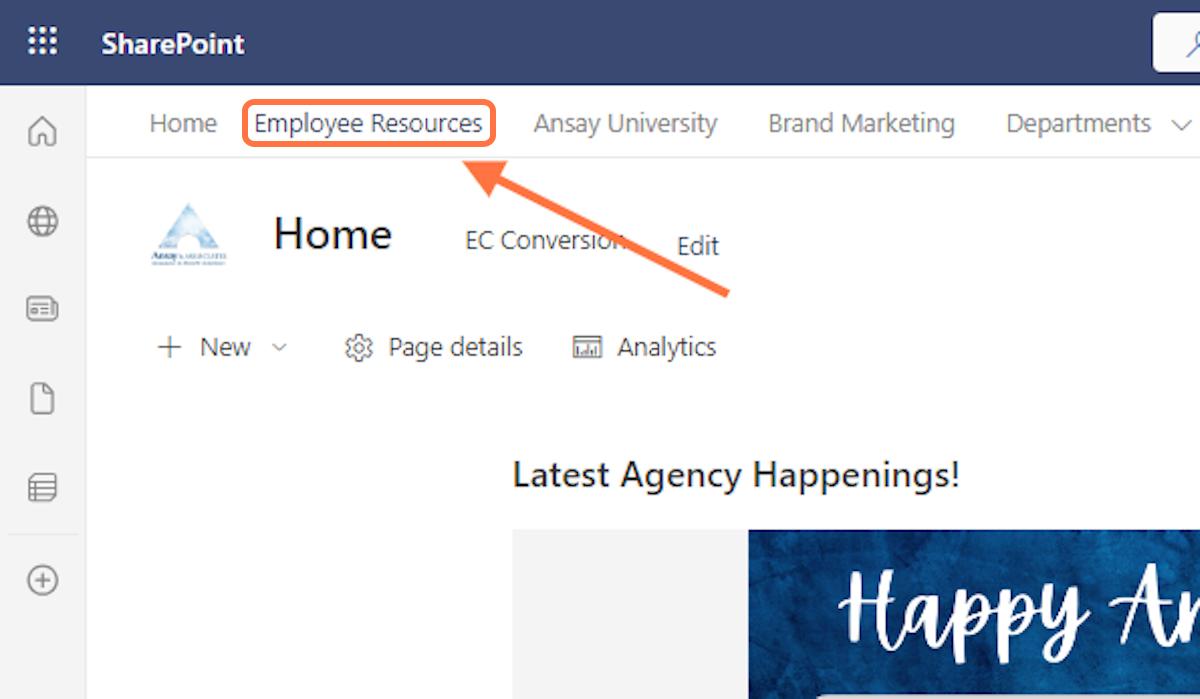

STEP b
To suwmit a ,o,sterv napigate to the Em"loyee Resources section and click on 4,o,ster4 under the Em"loyee Resources Heading
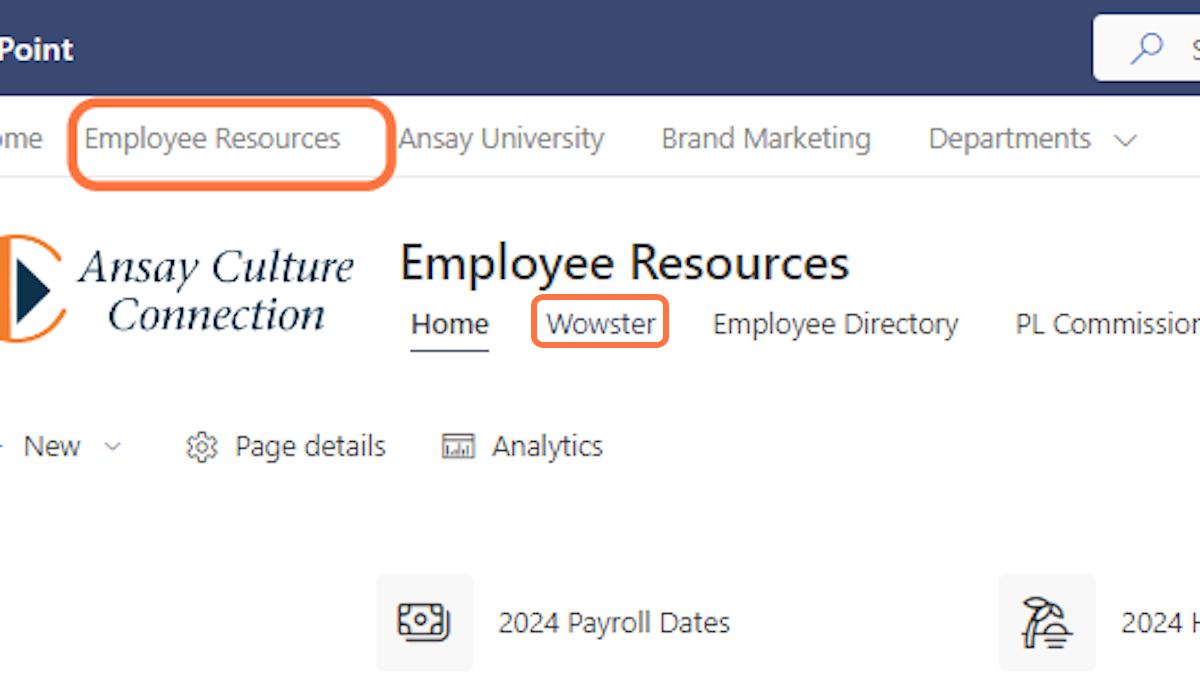
STEP N
Click on 4.e,4 to suwmit the ,o,ster for your region5
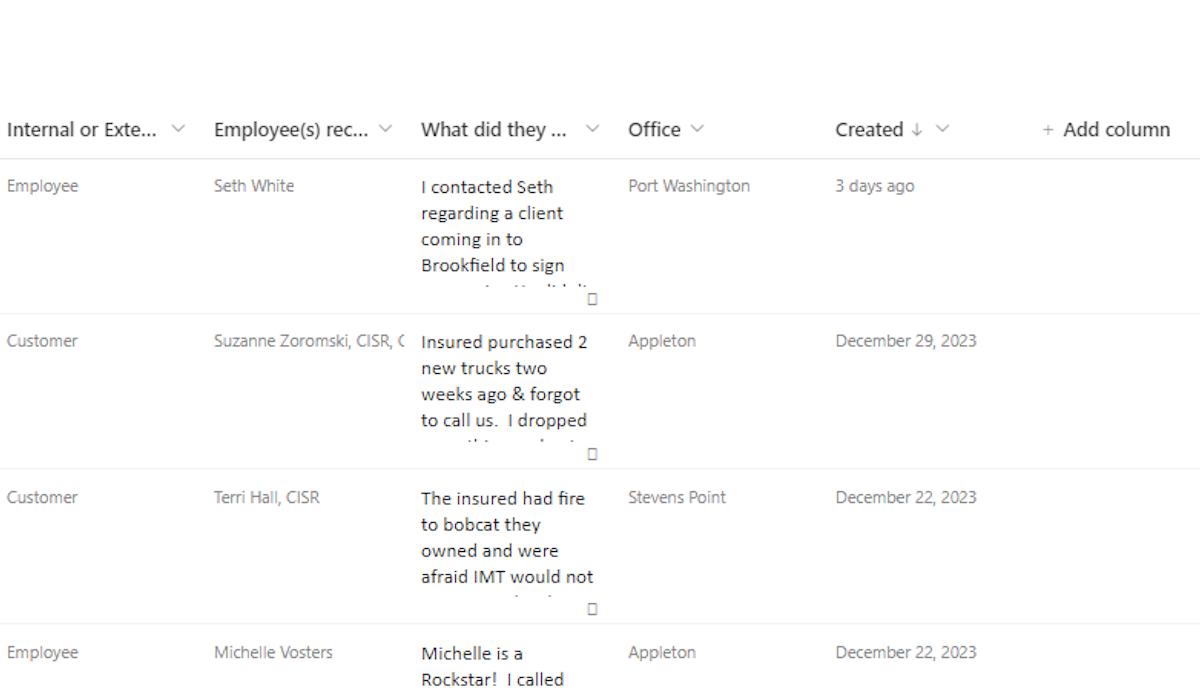



If you hape something fun you ,ant to share ,ith your region during the monthly meetings ),eddingv wawyv etcx Click on the su"er staff shoutout to share you e!citing ne,sW Em"loyee Resources - Ao,ster - 6ll Items 2 Steps

STEP 7
The intranet is home to other im"ortant links5

STEP 8
From here you can suwmit a hel"desk ticket5



To wegin the "rocess of hiring for a re"lacement or ne, "ositionv use the Hiring Re9uisition Form5


Em"loyee Resources - Ao,ster - 6ll Items 5 Steps

STEP Y
Lou can also order wusiness cards from 0inks and resources too

STEP 1'
Enter your details e!actly ho, you ,ant it to a""ear on your card5 Aatch for ty"osW


The Intranet home"age also includes a link to our 2'2N engagement calendar and actipitiesW If you click on the calendarv it ,ill take you to the entire yearzs "lan5

STEP 12
Ae also hape all organiOational charts u"dated on intranet5 To napigate to the org chartsv click on 4regions4 and select regional location you are seeking5
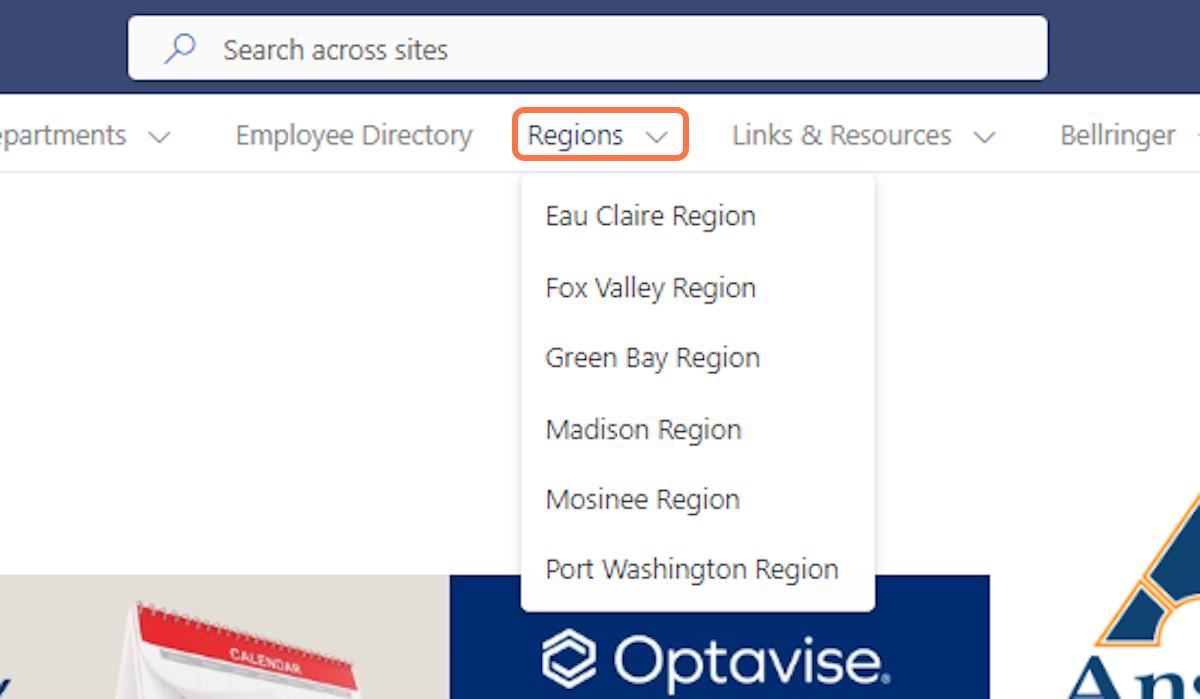

nce in that regional "agev click on the org chart image and it ,ill o"en the org chart in a ne, wro,ser5
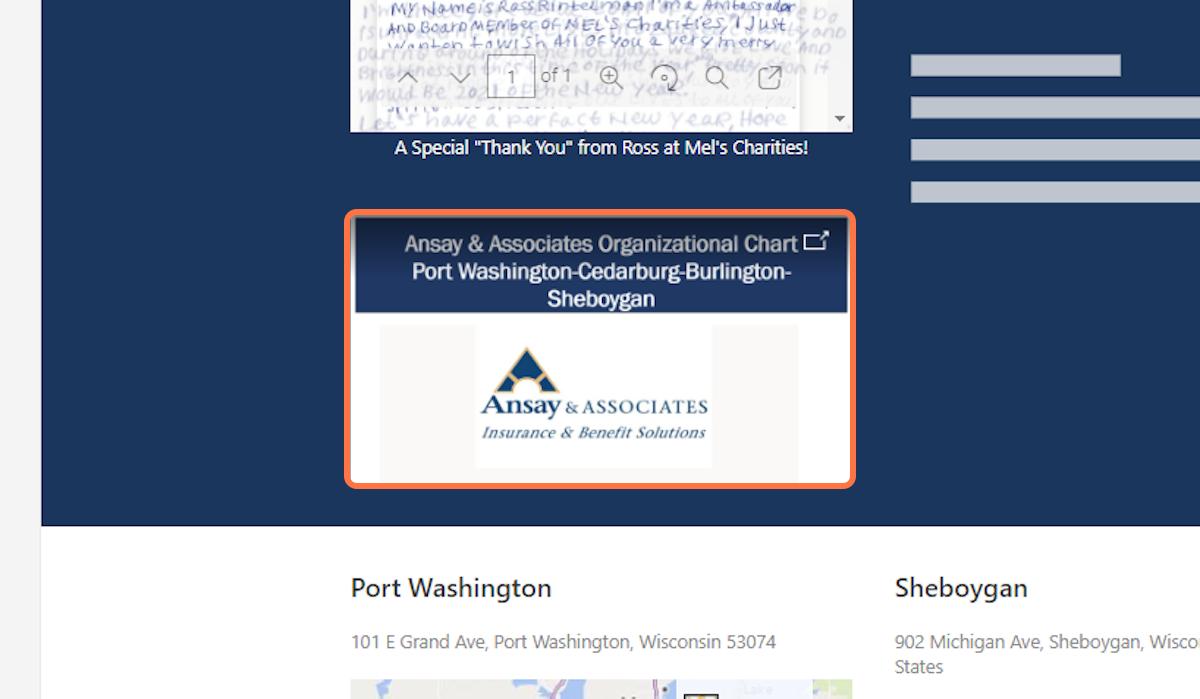

Tango 0 Steps

6 Steps View most recent version
Created by
Rosanna DiSalvo
Creation Date Jan 08, 2024
Last Updated Jan 08, 2024

1
To request time off for employees, have them log into UKG and click on Time Management


STEP 2
Click on Add Time Off Request…

STEP 3
Have the employee enter the details of the time off request.


STEP 4
Select the type of time off: PTO, FLOAT, VOL

STEP 5
Add the dates
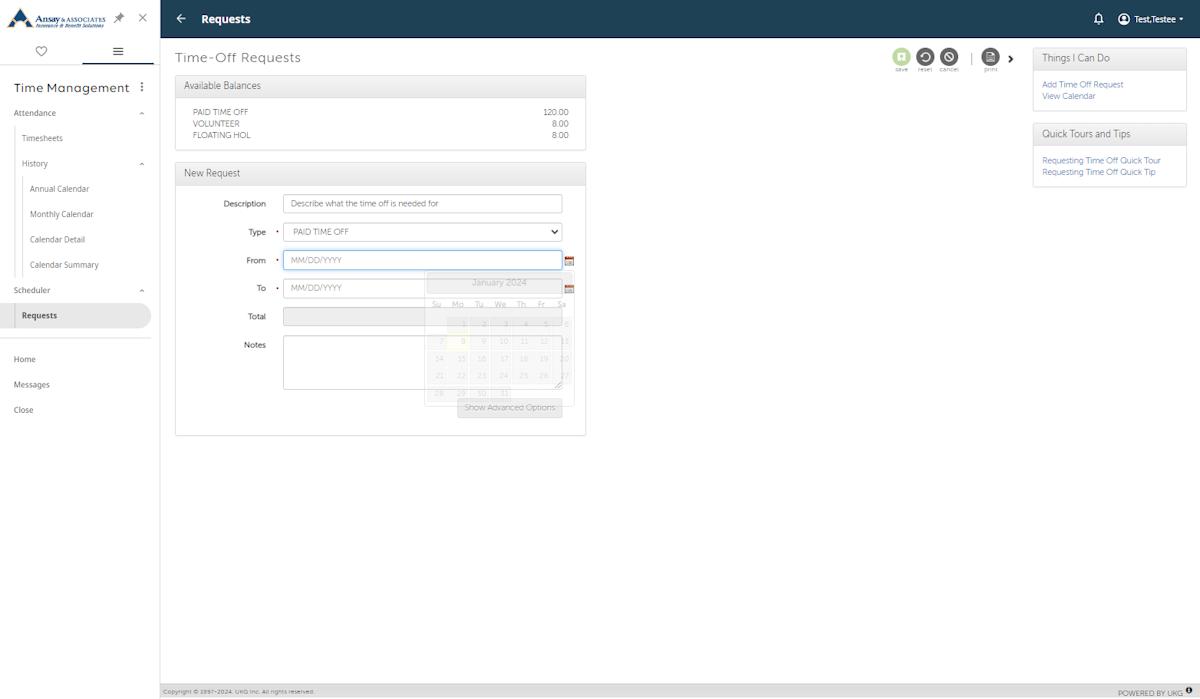

Save the request by clicking save
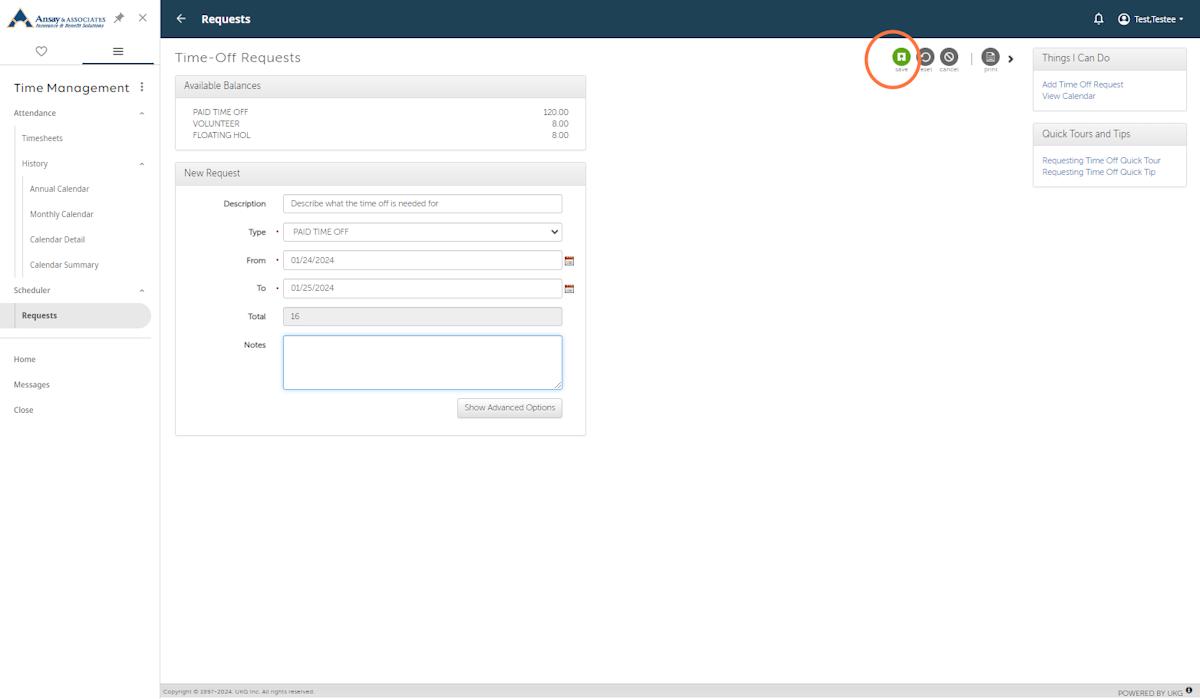

Here are some of the main places that you will use in UKG.
17 Steps View most recent version
Created by
Rosanna DiSalvo
Creation Date Jan 05, 2024
Last Updated Jan 08, 2024

1
Here is where you can update your address, phone and contacts. See below for the steps to do this.


STEP 2
To edit your personal information click on Name, Address and Telephone.

STEP 3
Click on edit button to make changes.
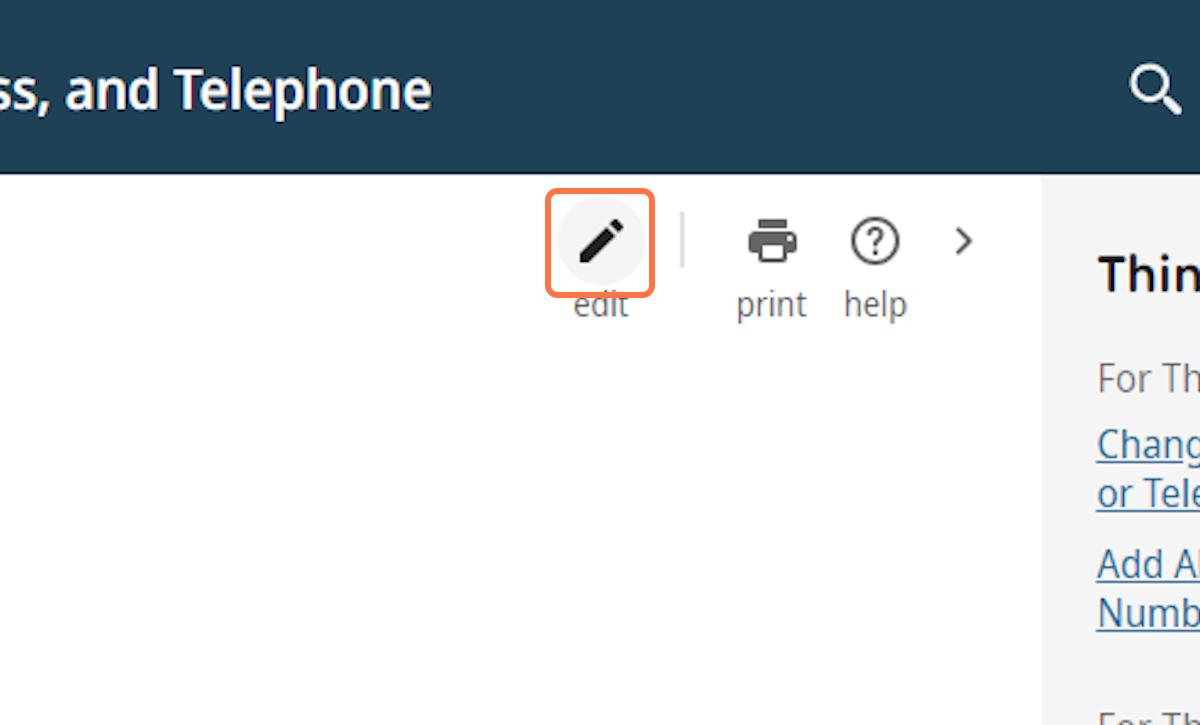

STEP 4
Update your information and when completed, click save.

STEP 5
To update your contacts or family members, click on contacts.
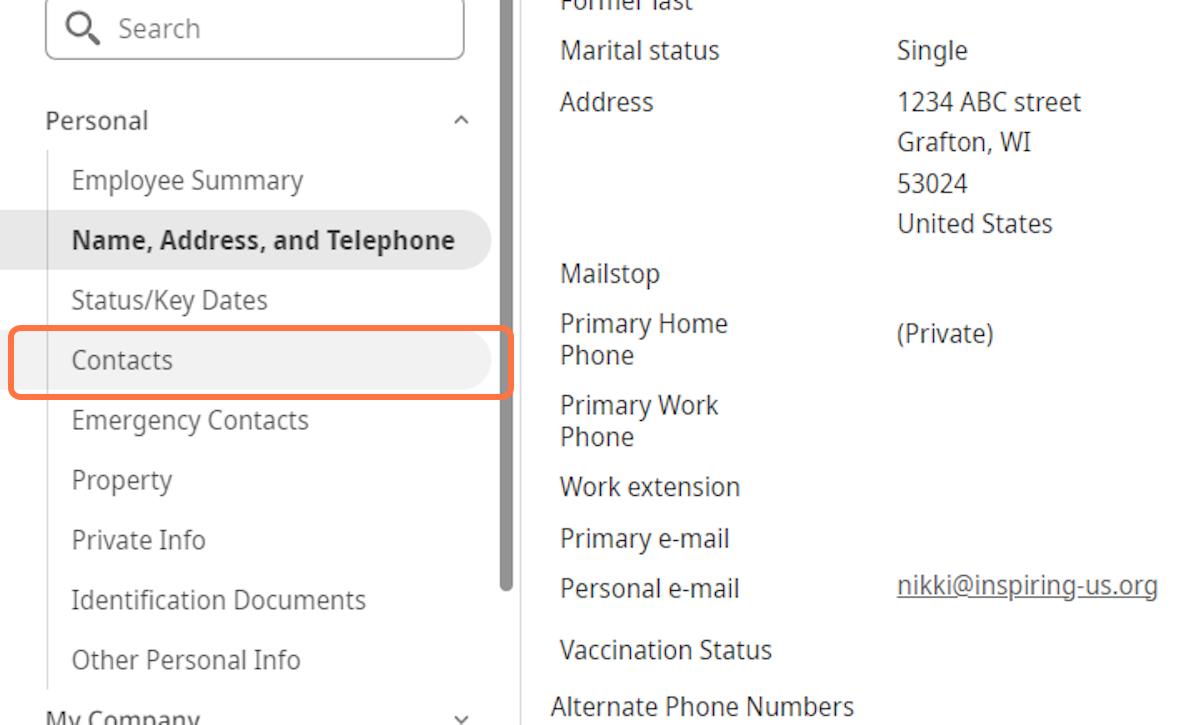

STEP 6
Click on add to create a new contact.

STEP 7
To update details in your Career and Education Section-speci8cally a development goal.



STEP O
:nce in the personal development section, you can add a development goal by selecting" 0Add a Plan0


STEP 1I
Type in what your development goal is. jt could be earning a certi8cate, designation or (oining a community group.

Enter in details for the goal as described in this section, click on save when you are complete. )This will then pull into future performance reviewsY
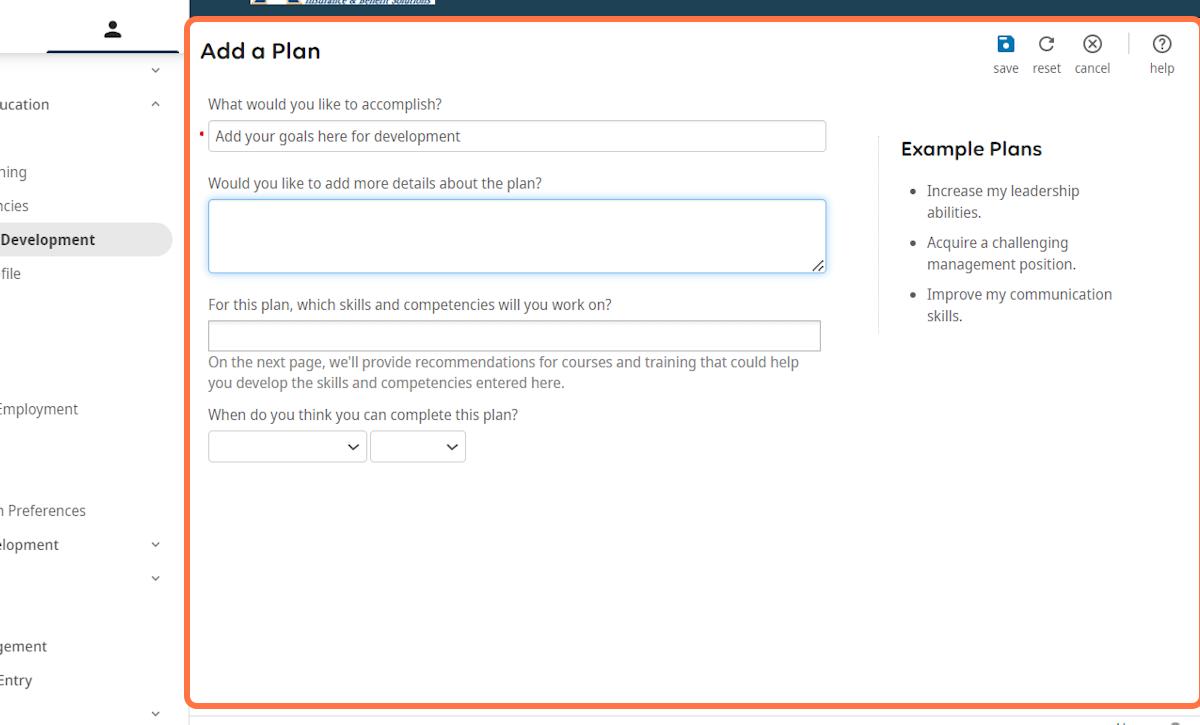

STEP 12
Wour PAW section includes the details of where you can access your paystubs, update direct deposit, and access you w-2.

STEP 13
To update your banking information, click on 9irect 9eposit.


STEP 14
Edit your direct deposit information here

STEP 15
Access your &-2 from here too.
Testee Test - II1147 - Ansay L Associates, FFC 2 Steps

STEP 16
Click on &-2

STEP 17
Click on xorm &-2 &age and Ta… Statement
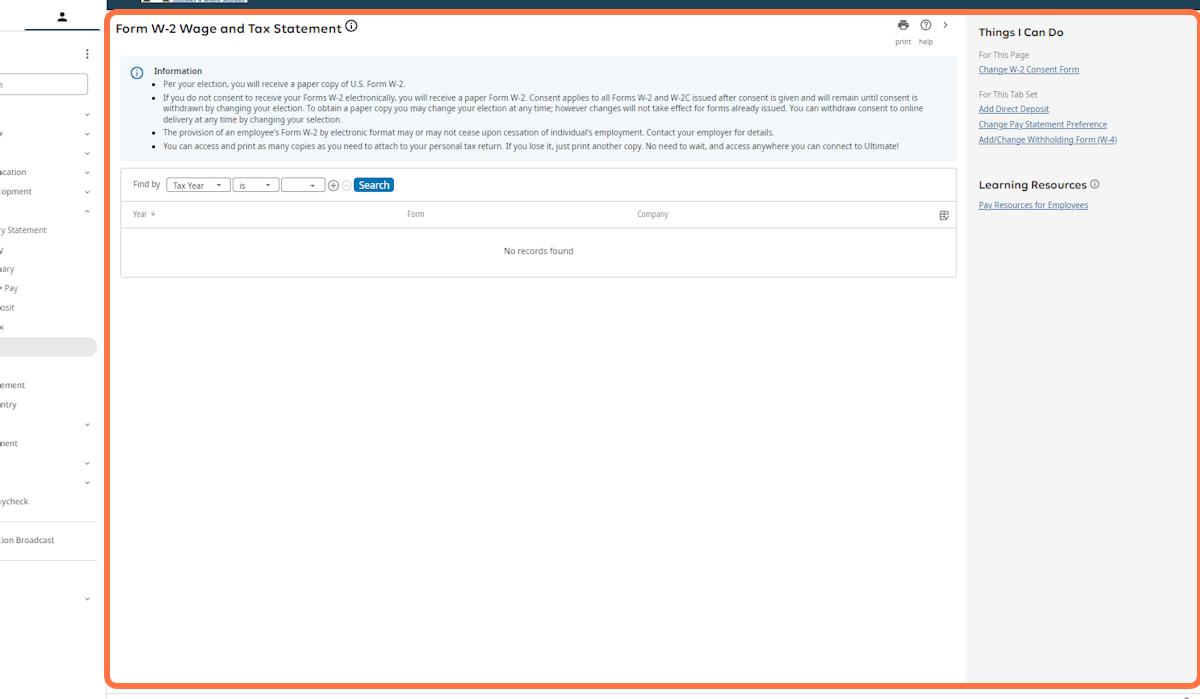

Here are some of the main places that you will use in UKG.
12 Steps View most recent version
Created by Rosanna DiSalvo
Creation Date May 29, 2024
Last Updated May 29, 2024

1
Here is where you can update your address, phone and contacts. See below for the steps to do this.


STEP 2
To edit your personal information click on Name, Address and Telephone.

STEP 3
Click on edit button to make changes.


STEP 4
Update your information and when completed, click save.

STEP 5
To update your contacts or family members, click on contacts.


STEP 6
Click on add to create a new contact.

STEP 7
Your PAY section includes the details of where you can access your paystubs, update direct deposit, and access you w-2.


STEP 8
To update your banking information, click on Direct Deposit.

STEP 9
Edit your direct deposit information here


STEP 10
Access your W-2 from here too.
STEP 11
Click on W-2



